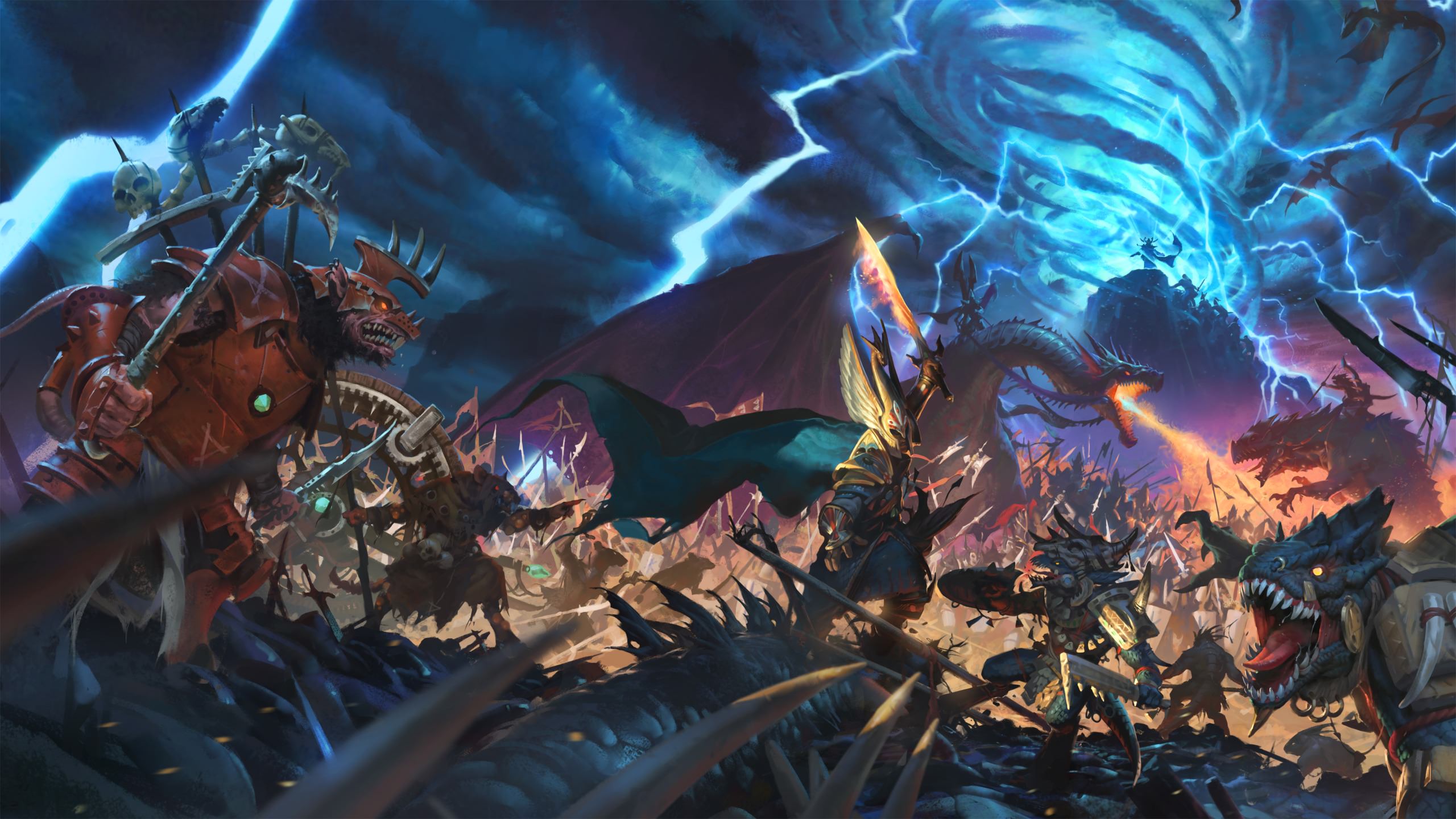
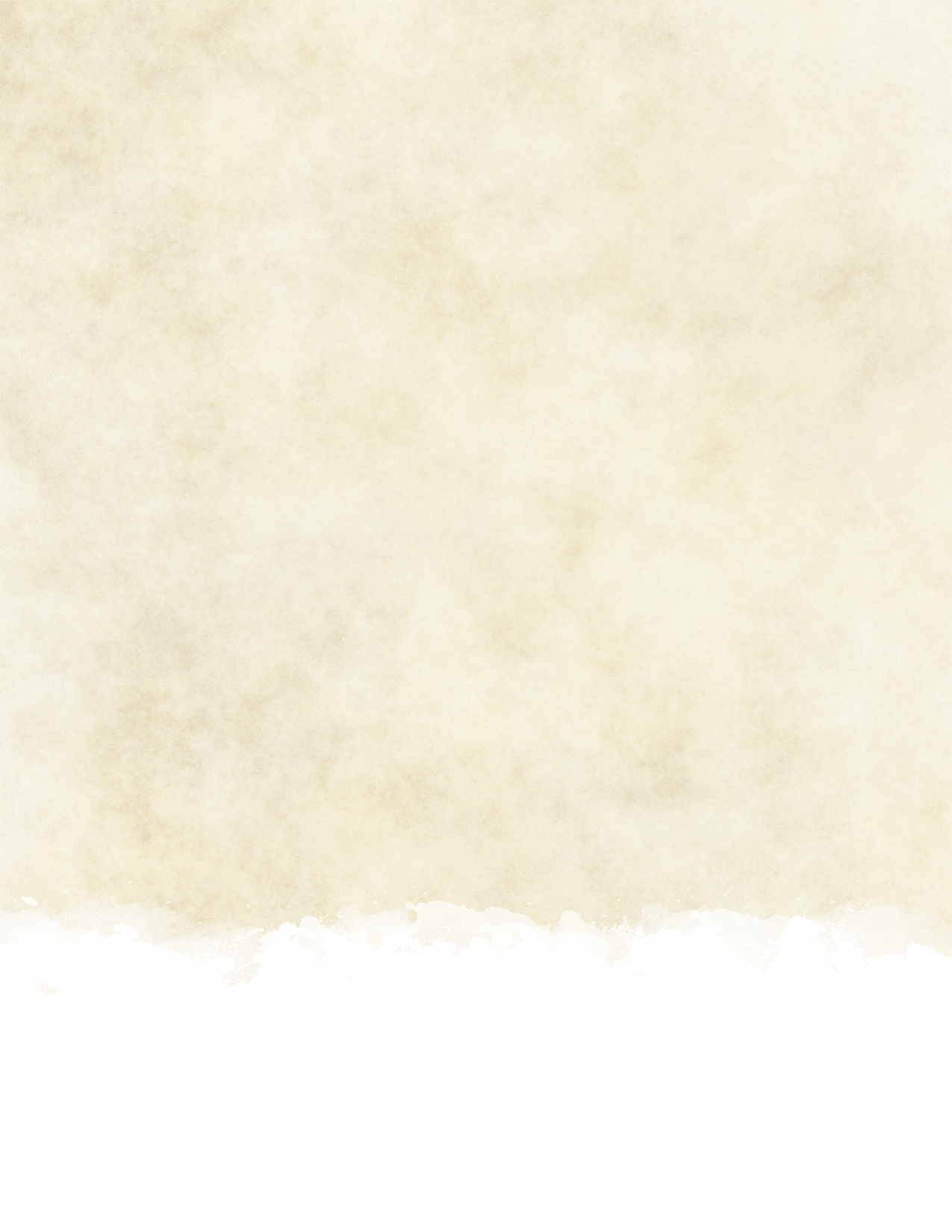
Contents
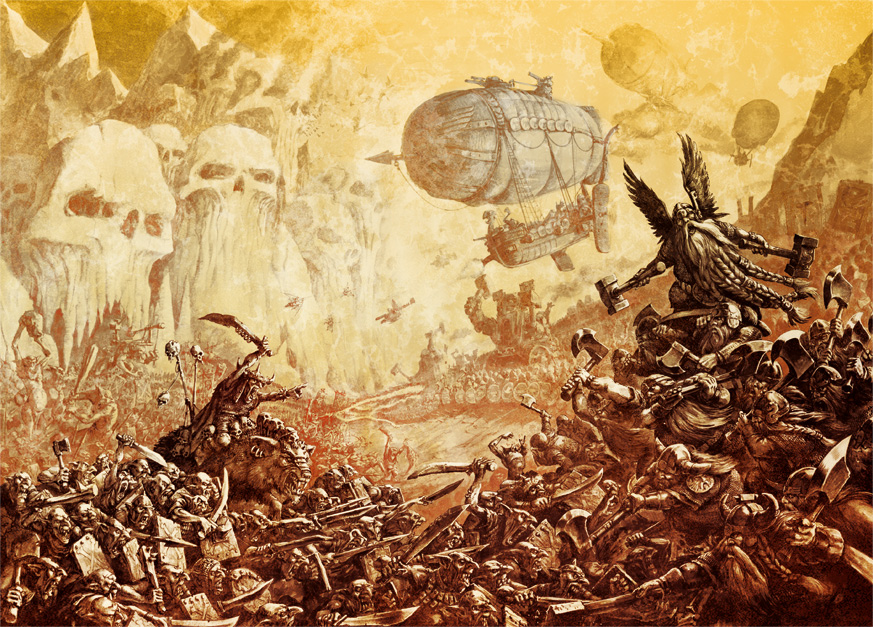

Chapter 4
Dwarfs
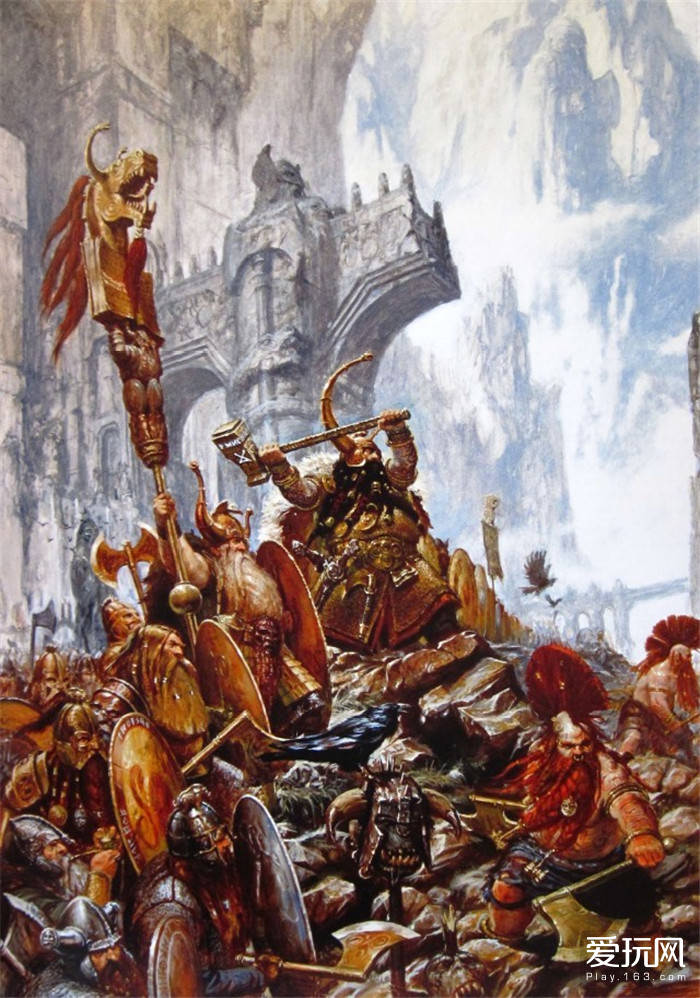


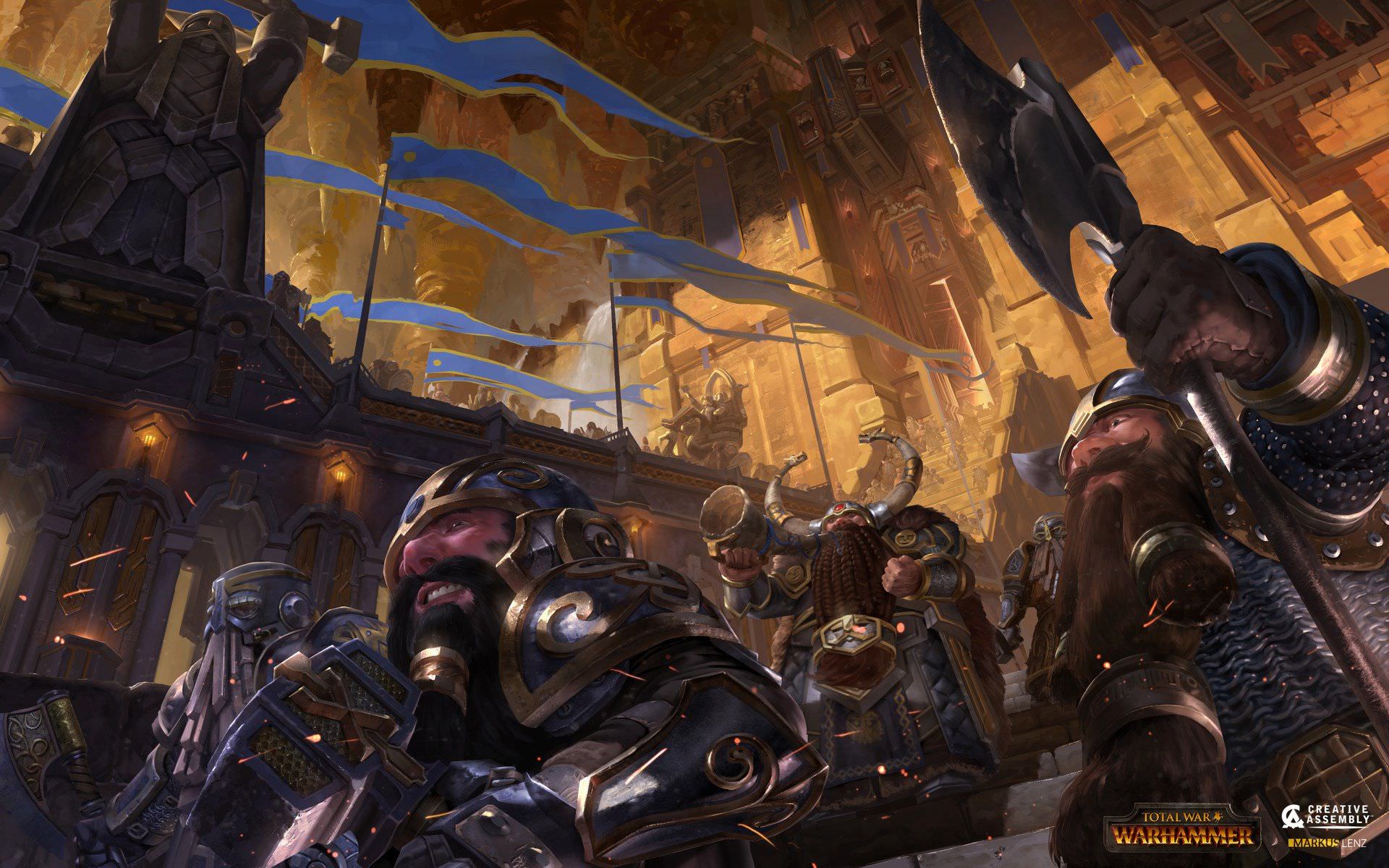


Dwarfs
The Dwarfs, or Dawi as they call themselves, are one of the oldest and proudest races in the Warhammer World, with a great wealth of history and power that stretches back since time immemorial. They once held an empire which stretched from Norsca in the north to the jungles in the south, and from Mount Silverspear in the east to the Grey Mountains in the west. But the heart of the Dwarfen realm, the Karaz Ankor as they call it, will always lie within the domains of the Worlds Edge Mountains. The highest mountain range in the world, it is filled with the magnificent halls and holds of the Dwarfen people, a testament to the great feats of engineering and power once wielded by this ancient civilization.
The Dwarf people as a whole are sturdy and strong, brilliant craftsmen and excellent warriors, but above all they prize themselves on their loyalty to each other and to those they are indebted to. This strong bond of kinship has ensured that the Dwarfs are considered amongst the most united races in the face of the world. They are known far and wide as the greatest miners and tunnelers, the ageless halls of Karaz-a-Karak are but one gigantic example of how huge their works can become. As expected, the Dwarfs are highly proficient smiths and craftsmen, capable of producing works far more beautiful than the Elven metalworkers in far Ulthuan and hundreds of times more valuable than the trinkets of Men. Proud, honorable and enduring, it is said that the Dwarfs shall weather the horrors and misery of this world until its final bitter end.
Biology. The Dwarfen people are short and stunted in nature, but possess an extreme degree of durability, endurance, strength, immovability and stubbornness that many other races often mockingly compare to, or in the Dwarfs case, embody those of a stone or mountain. Most Dwarfs stand only a mere 3 to 4 feet in height, however they are noticeably very stout in build, with strong thick arms, long broad shoulders and short but powerful legs. Female Dwarfs have a similar physique, however they are much more curvaceous and instead of cultivating beards, they braid their hairs in much the same way as a sign of status and age.
These characteristics are advantageous in their underground homes, making their stunted yet stocky bodies well suited to the cramp environments of the tunnels. As you might expect, Dwarfs are also natural diggers and miners, with many Clans often lending their youths or "Beardlings" into the mines as miners or military warriors as a trial or passage to adulthood.
It is also customary, and in most cases mandatory, for all male Dwarfs to have a beard of some kind. Most Dwarf youths begin to grow their beards at a relatively early age and will continue to grow for the rest of their lives. These beards are an integral part of Dwarf patriarchal society, for it often dictates a Dwarfs personal age, wealth, or experience. The longer the beard, the more respect he gains from his peers and those of society. The Dwarfs are also known widely as a race of alcoholic drinkers. Known famously for brewing some of the finest beers and ale in the known world, these Dwarfs would like nothing more than to sit down, have fun with their companions, singing songs and drinking beer until the rise of the morning sun. As such, the Dwarfen people have naturally strong livers, allowing them to drink vast quantities of alcohol without much repercussions. Indeed, Dwarf ale is actually nourishing to them; a Dwarf is able to survive off of it alone for weeks, not suffering malnourishment.
Another characteristics of the Dwarfs is their odd resistance to magic. Dwarfs are not able to feel or control the Winds of Magic like the other races within the Warhammer World. In fact, the Dwarfen race has grown such immunity to magic that they have become highly immune to all forms of common mutation, a severe and common side effect that is often associated to those races that are affiliated with magic. Some have speculated that the Old Ones created the Dwarfs in an attempt to develop a race that can resist the touch of Chaos and the uncontrollable magic it brings forth, but the results had made the Dwarfs noticeably shorter than other sentient races. As such, the only way a Dwarf will be able to use magic in any form is the use of Runes and the proper teachings of a Runesmith.
Stages of Life
Dwarfs age more slowly than Humans do, although the difference is not as great as one would conclude base upon the differing lifespan. For example, Humans become full grown at around 16 years of age, while the Dwarfs do so between their 18th and 20th year. "Nauvsdeg", or "the Day of Naming", is regarded as the first day of a Dwarf's life. On this day, the newborn's parents, accompanied by their clan elders and as many generations of direct ancestors as are still living, would present the infant at the temples of Grungni and Valaya, to receive the blessings of the Ancestor Gods. First the male relatives take the baby to the Temple of Grungni, where the birth is recorded in the hold's annals of history. The baby is then handed over to the female relatives, who go in joyful procession to the temple of Valaya. There, the baby is passed through the smoke of Valaya's hearth and given a first spoonful of stone soup, a ritual of welcome to the new clan member.
Although they may marry earlier, especially in noble families, the humans in the Old World are generally considered adults when they reach the age of 16. Dwarfs are not considered adults until they are about 30 years of age. Their childhood is usually spent learning the clan's craft, traditions, and place in Dwarf society. In addition, all young Dwarfs of all clans and both sexes are required to learn mining fundamentals, and spend at least two years in the mines belonging to their hold. While working in the mines, some of these "Garazi" or "Knublstubi" ("Young Ones" in the Khazalid language) may learn other skills such as metalworking and smithing.
One of the most important events in a Dwarf's life is entry into adulthood. It is marked by the rite of "Kumenouht", where the young Dwarf is formally presented to the clan. Those clans whose members live in scattered settlements would usually wait until they got together on "Zagazdeg", or the "The Day of Remembrance", to observe this rite of adulthood. A Dwarf reaching adulthood makes an offering to the clan's ancestors and the Ancestor Gods. This is normally shown with a apprentice craft he created to demonstrate the youngsters skill in the clan's craft. So, for example, a young Dwarf from a brewing clan offers a barrel of dark ale, while a Dwarf from a jewelsmith clan offers up a piece of jewelry or cut gemstones. The clan elders present the newly adult Dwarf with his first set of tools, and the insignia of the clan's craftguild. At this stage, the Dwarf is considered a "Gnutrommi", or a "Young Clansman".
As young clansmen, Dwarfs begin to establish their reputation within the clan. Most males become an apprentice to one of the senior clansmen, and would immediately begin the second stage of their tutoring in the craft, skills and lore of the Guild. Dwarf females or maidens turn their thoughts to marriage at this time, and with the advice of their clan elders, the Dwarf maiden's main duty is to help form stronger ties with other potential clans. Under all but the most extreme circumstances, a Dwarf maiden must always marry outside of her clan, but never outside the proximity of the Dwarf Hold itself. The Princesses of a Royal Clan is typically the only ones who would be married into the royal clans of allied holds, although they generally have more freedom of choice in marriage than their human counterparts. It is deemed acceptable for a Princess to marry beneath her social station, provided the prospective husband is of impeccable character and wealthy enough to keep her in suitable style.
When a Dwarf reach his 70th year, they become was is known as "Altrommi", or "Full Beards". Once they reach this age, they are considered senior members of the Clan, and is allowed the benefit of an apprenticeship. The clan elders are usually the ones who resolve any disputes which may arise if two or more Full Beards want to take on the same apprentice, or if any Young Clansman is not chosen. A few Full Beards have been known to simply choose to perfect their mastery of their clan's craft, rather than taking an apprentice at this time. This is usually the time when most Dwarfs would begin to marry themselves to a possible spouse and sire children of their own.
In their 120th year, those Dwarfs that have lived this long earn the privileged status of a "Langktrommi", or "Long Beard". Thought not yet regarded as a clan elder, Long Beards are respected for their wisdom, skill and knowledge of clan traditions and crafts. Their reputation will have spread beyond the clan, and they may begin to receive commissions from outside clans as well. Some Long Beards continue to accept apprentices, but this is the time at which a Dwarf is generally expected to pursue mastery of their craft without the burden of an apprentice. The most spectacular examples of Dwarf craftsmanship comes from the Long Beards. A few Long Beards marry at this age, however the vast majority have decided to dedicate their lives to their crafts.
When they reach 150 years old, a Dwarf becomes a "Throngrink", or "Elder of his Clan". All Elders become part of the Elder Council by virtue of age, wisdom and length of one's beard or hair in the case of Dwarf Women. The Council considers any matter that directly impacts the clan and its interest. In some clans, the Council is empowered to decide the actions for the clan; in others, particularly in the Warrior clans, the Council may do more than just recommend a course of action. Once they reached this age, Dwarfs remain clan elders for the rest of their lives.
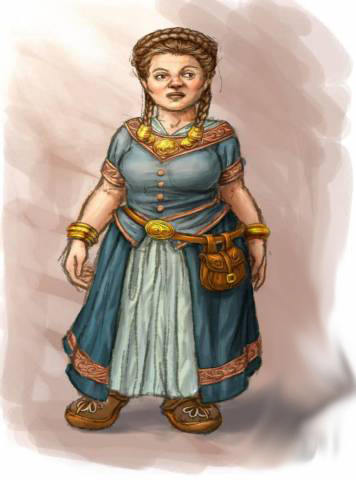
By this point in their life, a Dwarf usually lives for around 200 years. Dwarfs exceeding 200 years of age are given the extremely privileged title of "Gormtrommi", which translates to "Great Beards". Though few in number, the Great Beards are held in the highest esteem within both their clan and society. Their knowledge and experience are especially valuable to the clan and craftguilds during difficult times. Some remain on the clan's Elder Council, while others rededicate themselves to their crafts. Loremasters and master runesmiths are almost always Great Beards.
Those very rare Dwarfs who exceed 400 years of age earn themselves the legendary status of "Karugrombthi", which translates to simply as "Living Ancestors". These are amongst the greatest of the Dwarfen people, for they are venerated as the blessed of the Ancestor Gods and the symbols of their Clan's good fortune. While Humans tend to become more frail with advancing age, the vigor of a Living Ancestor remains undiminished. As such, it is said by this point, the only thing that could threaten a Living Ancestor's life is injury or fatal disease.
It is sometimes said that Living Ancestors are too stubborn to die; among Dwarfs, it is more respectful to say that they have more important things to do then to die. Driven by the thirst for knowledge or the desire to accomplish a certain task, these ancient dwarfs seem never to age. The great runesmith Kragg the Grim, for example, reached his 1620th year in 2512 IC.
Death and Burial. According to ancient lore, the earth gave birth to the Dwarfen race. In death, their bodies are returned to her embrace while the spirit journeys to the Halls of ancestors for all time. The priests of Gazul are held responsible for the special rites to perform before the final journey can begin.
Dwarfs who die of old age sense their stamina and strength fading, and know that their time is fast approaching. A priest of Gazul is thus summoned, and the dying Dwarf gives the priest the possessions that will be accompanied to his tomb. Then, the heirs of the dying Dwarf would assemble to witness the dying Dwarf's bequest, like the reading of a will among humans, except that it takes place before death. Once this task is completed, the Dwarf spends the remainder of the time with friends and family.
When death has come, the priest returns to take the body to the Temple of Gazul, where it lies in state for four days. There, the priest invokes the protection of Gazul over the body to ensure his safe arrival to the halls of the Ancestors. Similar to the rites used by the Priests of Morr, the rites also serves a dual purpose in protecting the body from being used in necromantic purposes. At the end of the four days, the clan's burial vaults is opened and the body is entombed. Once done, the priest of Gazul re-affixes the sealing rune to the vault to prevent any desecration until the next burial. Those Dwarfs that die in battle are given the same rites by an accompanying priest, but are not given the same amount of respect as those that die in the holds. Instead, they are buried honorably on the spot, with only the bodies of Kings, Runesmiths or Elders being returned home for burial.
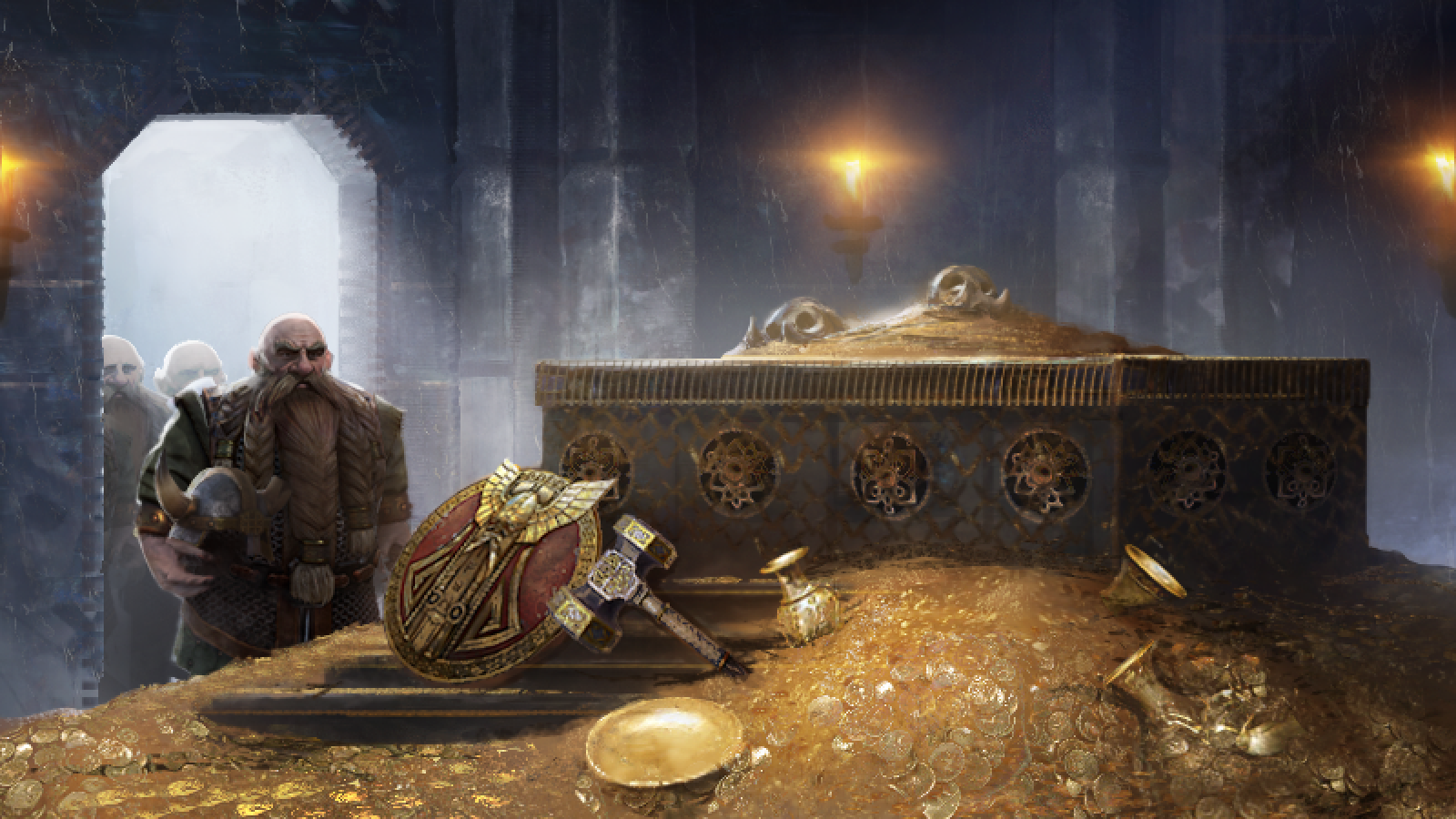
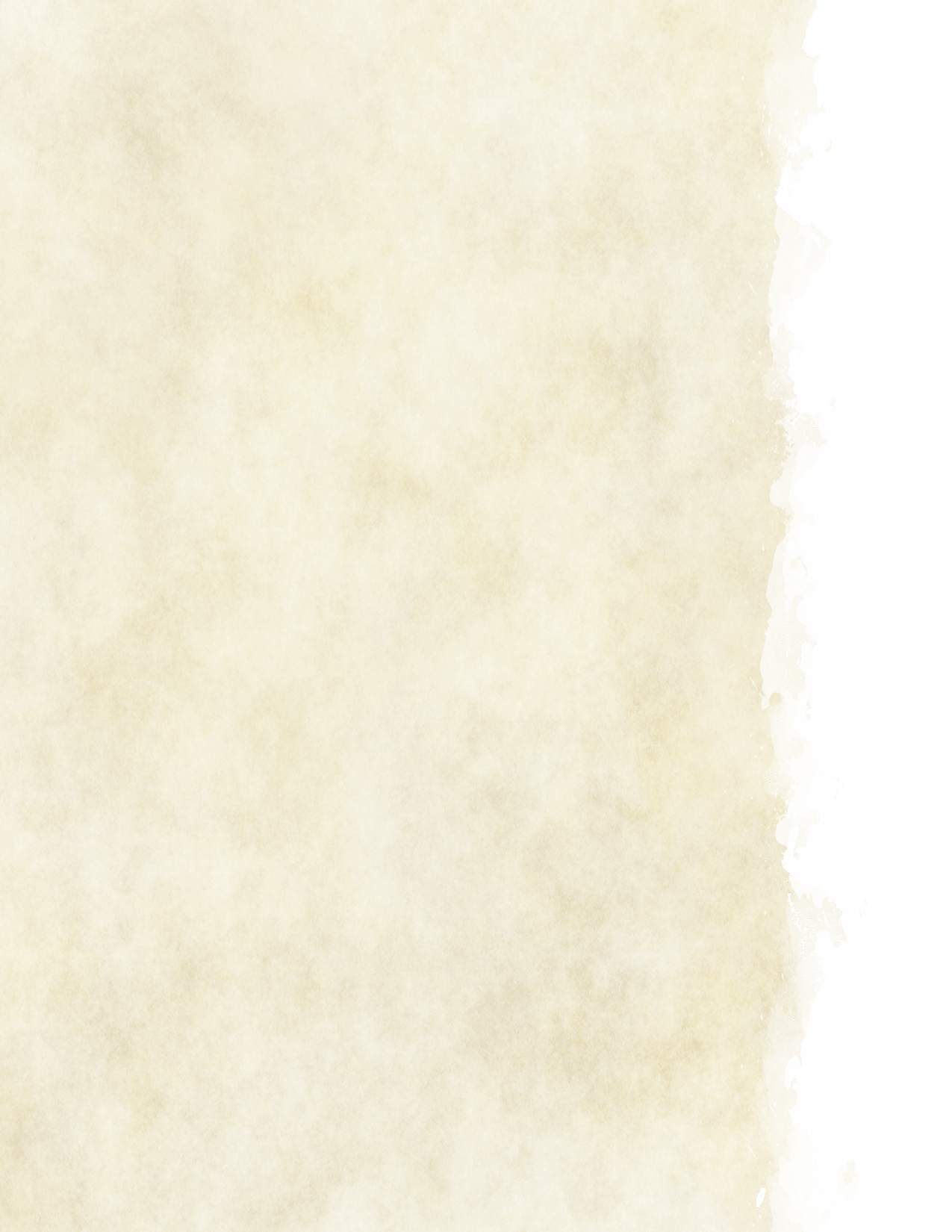


Foreign Dwarfs. Though the Dwarfs may consider themselves a single, unified people, there are nonetheless many different types of Dwarfs living within the known world, just as there might be different types of Humans, Elves and Greenskins abound within the wider world.
Foreign Dwarfs:
- Norse Dwarf. Norse Dwarfs are a very outlandish group that once held a large portion of Norsca as their mountain realm. Their main kingdom, known as Kraka Drak, is located just West of Norsca.
- Grey Dwarfs. Grey Dwarfs is a term used to refer to those colonists whom have lost their former homes within the Worlds Edge Mountains and have now made a new life within the less hostile Grey Mountains.
- Imperial Dwarf. Imperial Dwarfs are Dwarfs that have made a new life within the Empire of Man, giving their services up at a high price and aiding the heirs of Sigmar, the greatest friend of the Dwarfs.
- Chaos Dwarf. Chaos Dwarfs are the descendants of those Dwarfs that wandered east and turned from the Ancestor Gods when the tide of Chaos advanced. These Dwarfs bear minor physical mutations, like tusks and in rare cases horns and cloven hooves.
Government
The entire Dwarfen people are all ruled by a spiritual and political leader known as a High King, and below him are a class of lesser Dwarf Kings who each rule a stronghold or Karak, the Khazalid for "mountain stronghold". In theory, the High King has absolute rule over all of his people and all the Mountain Kingdoms, for he is said to be the direct descendant of an Ancestor God and as such may issue edicts or demands if he so chooses. In reality however, the High King actually has to consult and cooperate between each of his fellow Kings, and as of tradition and mutual respect, each Dwarf King must follow and answer the edicts imposed by his High King. The current High King of the Dwarfs is Thorgrim Grudgebearer.
Each Dwarf King has complete authority within his own Karak and the surrounding territories he occupies. He may pass laws and give edicts to his subjects, but as of tradition, he would usually have a Council of the oldest, wisest and most respected Dwarf to consult the issue and ask for advice. As is the King's duty, a Dwarf King must always put his people and his kingdom's well being above all others. These duties may range from as simple as hearing the grievances between fellow individuals or clans, to as large as leading a Throng to face the enemy in combat.
The position of a Dwarf King and that of the High King is hereditary, with only those of the original royal blood line having any legitimacy to control and claim a Karak.
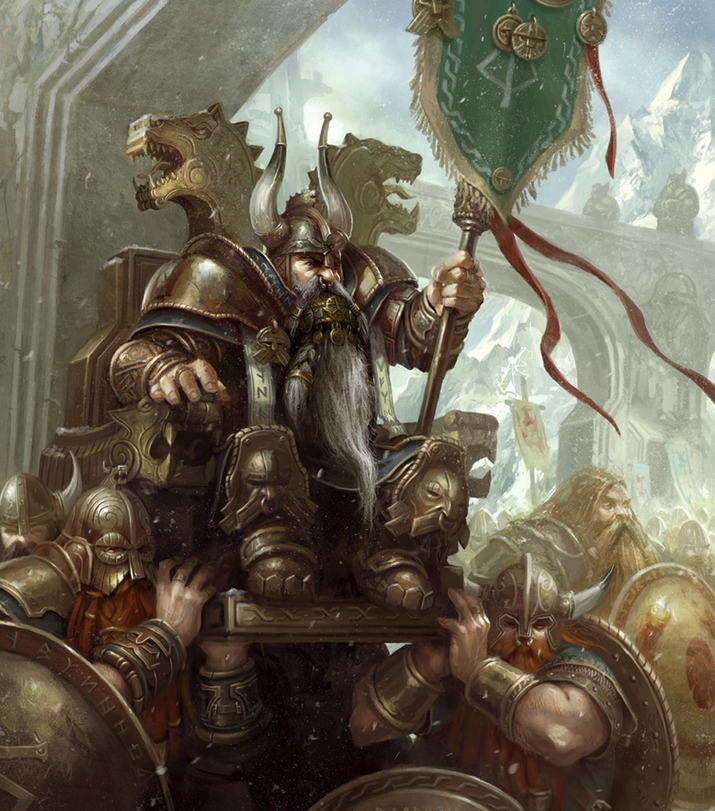


As such, a Dwarf King is also the head of the Royal Clan, which are basically extended families who can trace their lineage to the very first Dwarf who had claimed, built, and ruled the Karak from which they are currently living in. Priding themselves in their loyalty between one another, only a handful of Dwarfs have ever tried to usurp the throne of a Dwarf King in its history, making a large scale Civil War between various Karaks near non-existent. Only if a royal line is extinguished or disgraced will the throne be open for legitimacy. In such an event, there are several possibilities and outcomes. Either a high ranking individual such as a Thane or Prince will be found worthy of succession, or a highly prestigious Dwarf Clan can take up the mantle as the new Royal Clan.
Below the King is a class of nobles with varying degrees of titles and status, usually taking the name of Thanes. These high ranking Dwarfs are amongst the oldest, wealthiest, and most skilled individuals within their Kingdom, and each are often the leaders of a single Dwarf Clan. These Thanes owe fealty to their Dwarf King and are allowed to hold an important office within the ruling body, but such a position is not inherently hereditary but rather given to those of great skill and merit.
King Alrik Ranulfsson of Karak Hirn:
"When I were but a lad, my father, the King, taught me three things: Never accept a gift from an Elf, never trust gold that glistens in the darkness, never forget a grudge. On his deathbed I swore to uphold those values to me own dying day, and Grungni willing, I will."
Council of Elders. A dwarf king’s edicts are rarely challenged, but he is never a tyrannical ruler. To temper his ambitions and guide his rule, a Council of Elders meets with him when important decisions must be made. The council comprises the wisest, oldest, and richest longbeards of the hold, as well as the high priests of the Ancestor Gods, the masters of the great guilds, and other respected personages such as chief victualler and the king’s treasurer.
The queen, or in her absence the eldest matriarch of the hold, sits in on council meetings to soothe frayed tempers for it is believed that dwarfs are less likely to argue in the presence of a lady. Should no decision be reached, the impasse is resolved by voting. The elders’ voting power is proportional to their wealth, with the richest among them casting the most votes. Usually, the king can outvote all the elders combined due to the size of his hoard, but it is considered unwise for a king to go against the collective wisdom of his council.
Religion
Contrary to popular beliefs, Dwarfs do not worship a certain religion or holy deity, but rather has a belief centered around the veneration and reverence of their ancient ancestors. They believe that the spirits of their ancestors are constantly watching over them, guiding their actions in order to fulfill a grander purpose for the benefit of all Dwarf kind. Dwarf society is often built around these principles, where the oldest amongst their group are often held in higher esteem and respect within the community.
Should a very old and highly respected Dwarf die, the community would carve out monumental tombs in order to venerate their deceased ancestors, with the oldest of relics and treasures being both the most highly valued and as a symbol of the ancient power the Dwarfs once wielded.
It is said in the oldest of Dwarf folklore that there once existed a pantheon of powerful deities who led the Dwarf people into their new found homes within the Worlds Edge Mountains. Having many names with the Khazalid language, this pantheons is well known by many outsiders simply as the Ancestor Gods. According to the Dwarfs, these deities were amongst the first of the Dwarfen race, carved by time from the rocks of the mountains, and birthed by stone itself. Rather then be worshiped in holy reverence like the Gods of the Old World, the Dwarfs consider these ancient deities as living ancestors. In fact, it is said that the High King is the direct descendant of Grungni and Valaya, two of the most important of all the Ancestor Gods. Over the years, these Ancestors eventually gathered a following of like minded individuals, resulting in the creation of semi religious Cults, the most prominent of which is the Slayer Cult of Grimnir.
Major Ancestor Gods.
Although each Ancestor God is traditionally revered in equal measure, it is a common knowledge that the Dwarfs venerate three Ancestor Gods far more than any other. These includes:
- Grungni; God of Smiths and Miners, and the husband of Valaya.
- Valaya; Goddess of Hearth, Healing, and Protection.
- Grimnir; God of War and the brother of Grungni.
Lesser Ancestor Gods.
Though less well known, these Gods are nonetheless still revered as amongst the greatest Ancestors of their race.
- Gazul; Lord of the Underearth and protector of the Dwarf dead.
- Smednir; Shaper of Ore, and the son of Grungni.
- Thungni; God of Runesmiths, and the younger brother of Smednir.
- Morgrim; God of Engineers, and the son of Grimnir.
Society
The most important principles of Dwarf society are often summarized by three things: age, wealth, and skill. The more of these a Dwarf has, the higher you are in Dwarf society. Dwarfs do not boast of their family achievements, they merely set the record straight and proclaim their ancestors' greatness by their own personal wealth and skills. Unlike humans, Dwarfs live naturally long lives, with some growing as old as several centuries to even a thousand years of age. When Dwarfs start their lives off as young youths, they are often mockingly called by their elders as Beardlings. As their name applies, these youths still have short beards which indicates their young age, and will continue to be youths until they reach at least more then 70 years of age. Whilst they age, these youths would learn the basic skills of their Clans, and will take up mining, smiting, and is required to partake a time within active military duty.
The oldest Dwarfs within a community are the Longbeards or Greybeards. Dwarfs never cut or trim their beards, as the length of a beard indicates age, and thus wisdom. As such, these older Dwarfs are highly respected within their communities and their peers, and are often looked to for guidance and leadership. Only a Dwarf who has reached the age of a hundred, or has a beard that is touching the very floor will he be readily considered a Longbeard. Dwarfs also have an affinity for their peoples own past and tradition and would constantly seek to remember their forebears by repairing and maintaining their products. All Dwarfs know how to reforge an ancient blade and are constantly trying to incorporate ancient relics into their newer works. All of the most powerful of these weapons are forged by Gromril, the strongest, rarest, and most treasured metal known to their people.
They also enjoy hoarding their hard earned treasures and gold within massive Vaults. When a Dwarf dies, his wealth goes to his family and so passes down the generations. This process ensures the memory of the dead will always continue, as well as to secure a Dwarf's supply of money for a more desperate time. Often, a Dwarf will measure his security by how far off the ground they are when they sit on their treasures. Such is the greed that Dwarfs have for their treasure hoards that the supplies within a stronghold itself are so huge that it attracts hordes upon hordes of Orcs and Goblins, who are all willing to risk their lives by the hundreds all for the chance to earn some plunder.
Dwarfs have a rigid and unyielding sense of honor, which is centered around oaths or a promise. A promise does not die with an oath maker, nor does treachery die with an oath breaker. A Dwarf will be bound to an unfulfilled promise made by an ancestor, and will commit themselves to their completion. Likewise, they will look to the descendants of oath breakers for recompense. Serious breaches of faith against the Dwarfs are recorded in the Book of Grudges. This massive tome is kept in Karaz-a-Karak, the capital of the old Dwarf Empire, and constitutes something of a chronicle of Dwarf history.
Dwarf Guilds. Dwarfs are possessive, and to help guard the secrecy of their most skilled crafts, the Dwarfs have created guilds: artisan clans that trace their ancestry to a single master of old. Thus, to be born into the Clan of Morgrim, better known as the Runesmiths Guild, is to be destined, in some fashion, to be involved in the arcane study of working metal and magic into mighty runes of power.
All guilds follow the path of apprentice, journeyman and master, with a council of the guild’s masters responsible for enforcing the strict rules. This keeps skills within a clan, although as their talents are in high demand, guild members tend to be thinly spread across many strongholds. Each guild has all manner of secret handshakes and unusual rituals that allow them to identify other members that they have never met before. These guilds form a small, but authoritative faction in Dwarf society.
Guilds:
- Armorer Guilds. Armorer Guilds, alongside Weaponsmiths are amongst the larger craftsguild within Dwarf society. It is their duty to provide the Hold with armor of all kinds, from leather to gromril.
- Weaponsmith Guilds. Weaponsmiths Guilds, alongside Armorers are amongst the larger craftsguild within Dwarf society. It is their duty to provide the Hold with weapons of all kind, from small daggers to powerful axes and hammers.
- Artisan Guilds. Artisian Guilds are one of the smaller Guilds that encompass a large diversity of professions, from pottery, carpentry, glass blowing and tanning amongst other crafting specialty.
- Brewer Guilds. Brewer Guilds are one of the most famous craftsguild within Dwarfen society, for Dwarfs reserve a deep amount of respect for those that produce their ales within their taverns.
- Engineer Guild. There is only one Engineer's Guild, and it is their responsibility to moderate and watch over the designs for new machines for the benefit of Dwarf kind.
- Farmer Guilds. Farmer Guilds are the smallest of the craftsguild, as trade with the Empire has provided all the foodstuff the Holds will ever need. Instead, those few farmer guilds that remain have dedicated themselves to the growing of grain for the brewers, for only the finest grain will be found suitable for the ales of the Dwarfs.
Guilds:
- Herder Guilds. Herder Guilds are still a common sight amongst the Holds, for it provides them with adequate meat, wool and grain during the long winter months. Cheese is of particularly importance within a Dwarfs diet.
- Healer Guilds. Healer Guilds are small craftguilds dedicates themselves to the healing arts, which provide the holds with highly trained herbalist, doctors and surgeons amongst other similar professions.
- Jewelsmith Guilds. Jewelsmith Guilds are one of the largest and most competitive Guilds within the Holds, creating many fine works of art for those willing to pay for their exorbitant fees.
- Metalsmith Guilds. Metalsmith Guilds are just like Jewelsmith Guilds, large and also highly competitive amongst the Clans and Holds. They produce all the tools and metalware used in daily life.
- Miner Guilds. Miner Guilds form one of the core pillars of Dwarfen society, for Mining is just as important a skill to a Dwarf as perhaps any other trait. As such, there will always be at least one Miner Guild within any settlement of Dwarfs.
- Runescribe Guilds. The Runescribe Guilds are the historians and scholars of their race; whose duty mainly revolves around the recording and keeping of ancient lore and history that remains important to their race.
- Runesmith Guilds. Runesmith Guilds is perhaps one of the smaller yet far more prestigious craftsguild within the Holds, for it takes decades to hone ones craft in order to fully be a member of such a guild. They are held responsible for the keeping and crafting of powerful runic weapons, armor and relics.
- Stonemason Guilds. Stonemason Guilds, just like the Miners Guild forms one of the core pillars of Dwarfen society. Since time immemorial, the skill of masonry has always been the hallmark of a Dwarfen Hold and its history.
- Warrior Guilds. Warrior Guilds are considered the largest of all the Guilds within the Holds, and are found perhaps in almost every single Dwarfen community. It is they that shall defend the hold or wage war when the King calls, and it is they that shall provide the best warriors to do such a task for the benefit of all Dwarf kind.
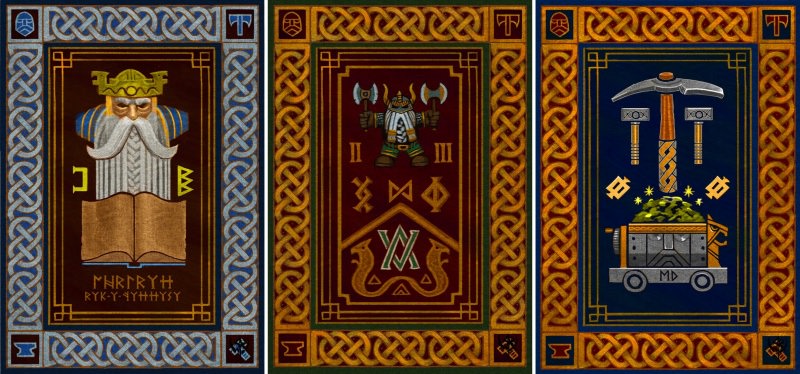
Dwarf Clans
Dwarf clans are in essence extended families who can trace their ancestry back to a founding ancestor who may have settled a specific valley, built a strong hold or founded a mine. Each stronghold is home to several Dwarf clans. The social ranking of a Dwarf is based on the social ranking of his Clan. The lowest ranking are the disgraced Clans who are often outcasts from the holds. The next lowest are the Clans which have no home hold, and instead wander from hold to hold as traders, as well as work in the cities of the Empire. The middle ranking class are the respectable clans who dwell within the holds. The top ranking clans are the clans which engage in the most respected trades, such as goldworking, weaponsmithing, runesmithing, and engineering. The ruling class is the royal clan, whose members are the nobility, one of whom is the king of the Hold.
Dwarf clans are thus mostly made up of many families, all of which share a common homeland, bloodline or ancestry. Often times, these Dwarf clans aren't originally from the place they are currently living in, for they might have lost their homeland to an invading enemy force. Yet although their lands have been lost, each of these clans has never given up the hope of one day reclaiming their homeland and building it anew. The ancestors of these clan are highly honored, and part of this honor involves singing their sagas and maintaining their tombs and relics. Each clan is lead by the clan head also known as a thane. Some clans have their own identity sporting personal banners, sigils, and warcry.
Most Dwarfs practice a trade, but as war is common, each clan readily forms into one or more regiments, ready for battle. Thus, though they might be gemcutters, stonemasons or miners, when enemies arise, they don heavy mail and take up weapons. It is customary for members of such regiments to display colors and symbols from their clan and/or stronghold; not a uniform, as such, but rather a reflection of the pride those individuals take in their common bond. After thousands of years of warfare, many clans have been wiped out or driven far from their homelands, their original holds lost or destroyed. In this way, surviving strongholds now house not just their founders, but also Dwarfs from many different clans. These displaced clans pledge fealty to a new king, swearing oaths to fight for their adopted stronghold. However, no matter where a clan re-settles, or how long they remain with a new hold, they maintain a strong sense of their unique identity and harbor hopes of one day reclaiming their ancestral homes.
Known Clans:
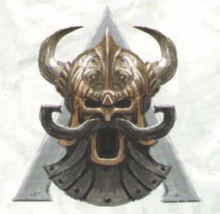
- Clan Gunnisson. Also known as the War's Son, this Dwarf Clan was once the royal bloodline of King Gunn, the first Lord of Mount Silverspear before its eventual collapse by the hands of Greenskin invaders.
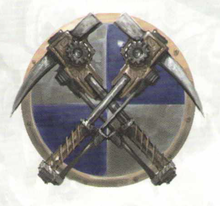
- Stonebreakers Clan. Famous for their masonry and miners, this prominent Clan currently is located within the confines of the industrial city of Zhufbar, where their great skills are in great demand.
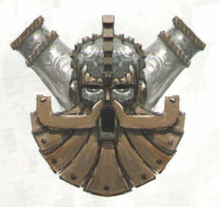
- Bronzebeards Clan. Formerly called the Stonebeards, this Clan was displaced by Orc marauders following the fall of Cragmere, and is now in the service of the Ironpick Clan, the rulers of Karak Norn.
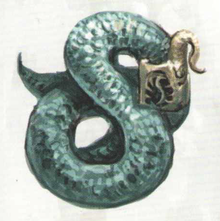
- Clan Helhein. A former Dragonback Clan, this Clan once held the riches of the Ekrund Mines, but has since been forced out and currently lives within the confines of Karaz-a-Karak.
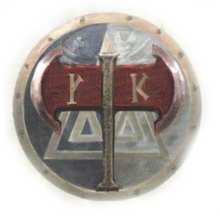
- Clan Ullek. An ancient Dwarf Clan that can trace their lineage to Ullek Redaxe, a thane who held a prestigious position beneath the first High King, Snorri Whitebeard. The Clan resides in Karaz-a-Karak.
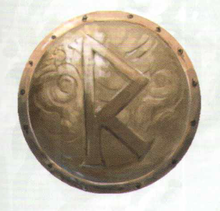
- Clan Barruk. Famously known for carrying Goldshields into battle, this wealthy Clan has moved out of Karag Dron after depleting the nearby mines and is now searching for riches in the south.
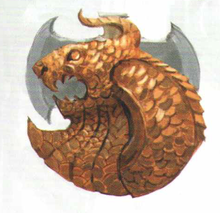
- Clan Drakebeard. A Royal Clan within Karak Kadrin, this anceint and mighty Clan is lead by none other then Ungrim Ironfist, the Slayer King of Karak Kadrin.
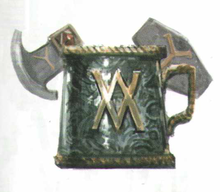
- Clan Yinlinsson. An ancient Dwarf Clan settled in Karaz-a-Karak, who are famous throughout the mountain realms for their fine lagers of ale.
- Norgrimlings. A former mining Clan of Karak Eight Peaks, the Norgrimlings has since dedicated their life to eradicating Skaven wherever they find them. Famous for theirs Ironbreakers this Clan is now scattered across many holds.
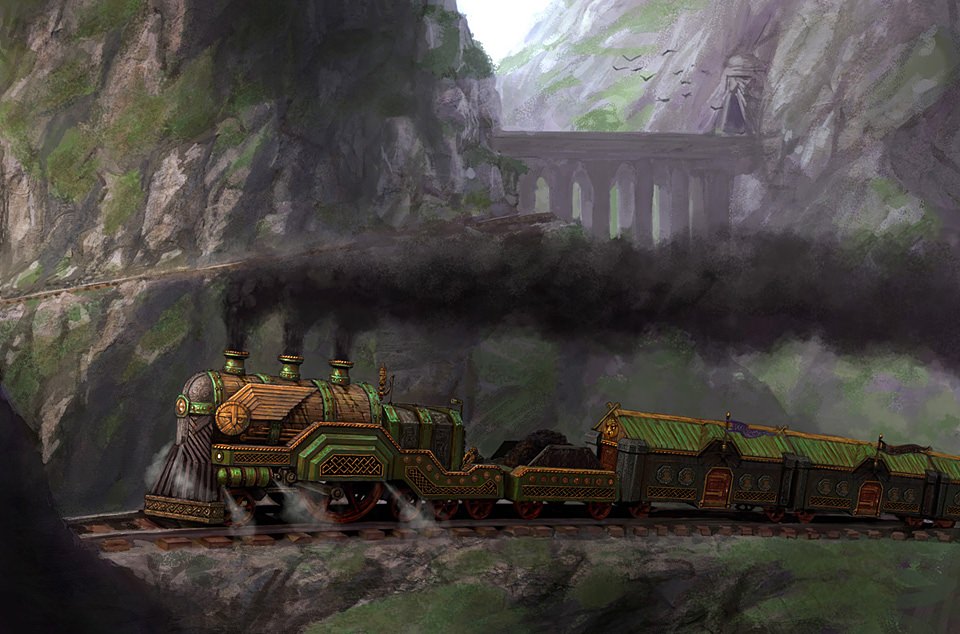

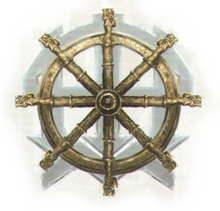
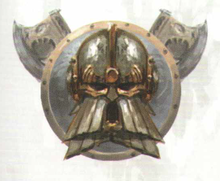
- Cragbrow Clan. A distinct branch of the Engineers Guild known famously for their expertise in the creation and maintenance of massive warships and smoke belching Ironclads. The Cragbrow were amongst the first to found the hold of Barak Varr.
Dwarf saying:
"Manling coins are like their words: never trust them. Use your weighing scales and keep your axe handy!"
Economy
A Dwarf stronghold is already a self sufficient economy. Weapons, armor, tools, and machines are all produced within their forges and workshops. Specialist goods are traded between Karaks along overland routes or via the Underway. Caravans are protected below ground by stalwart Ironbreakers and overland by bands of dwarf rangers. Adept at surviving above ground, rangers are tasked with keeping mountainside settlements and tradeways safe from the depredation of raiders.
Goods that the Dwarfs cannot produce themselves are often traded with neighboring races, the most prominent are the Humans within the Empire of Man. When these Humans began colonizing and cultivating the lowlands during the founding of the Empire, it became clear that they were far superior farmers and herders then the Dwarfs would ever care to admit. Nonetheless, the Dwarfs were far superior in the crafting of goods such as weapons, armor and tools. This eventually led to mass trade between the two races, freeing up the Dwarfen Clans to look to other more distinguishable pursuits such as mining and metalworking.
Most dwarfs regard trading goods for profit a demeaning profession. As such, it is a common misconception that a dwarf trader usually belong to clans without a hold that already suffer from social stigma. Bereft of their ancestral hoards, trading is the only way these unfortunate individuals can survive. Such statements are often not always true, for there are still plenty of Dwarf clans that still garner great within society and have a jealously large treasure trove of gold earned by the humble profession of trading goods.
Farming. Many outsiders have often thought that provisioning such a large Karak with ample supply of food and crop may seems problematic at first glance, but the Dwarfs anything if not resourceful. The highlands that surround most Dwarf holds are usually barren; unfit for both arable farming and pasture. However, the typical dwarf can subsist off little food and is content with a plain, unfussy diet. A few family of Dwarf Herders maintain flocks of goats amongst the peaks for milk and meat while Dwarf rangers would hunt down wild mountain animals for fur and flesh. Those few Dwarf Farmers that occupy these slopes have been known to grow stunted crops of barley and wheat on steep fields within a Karaks' walls. The wheat flour is mixed with gravel and baked into rock hard, tasteless, but sustaining, stone bread, while the barley itself is expectedly used to brew strong beer that is incredibly nourishing for dwarfs but near lethal to anyone else.
A curious example of dwarf resourcefulness is their use of the body parts of one of their most fearsome ancestral enemies, the Troll. When a troll’s corpse is dragged into their hold by a band of courageous hunters, nothing goes to waste. The innards form the main ingredients of "kuri"’", a traditional dish spiced with wild berries, washed down with "troll brew", an intoxicating beverage with supposedly regenerative properties, traditionally imbibed from tankards fashioned from troll skulls. Tanned troll hide is used to make tough boots, coats, and cloaks, and even the creature’s fat acid is utilized by engravers to etch metal.
Should a Dwarf Hold have need for a greater sum of food products, the Clans have been known to barter their skills and services to the Human kingdoms that often occupy the fertile lowlands outside of their mountain holds. Metalwork and other crafts are traded to the Empire in exchange for venison, beef, and other foodstuffs that a hold cannot produce itself. Dwarf made goods fetch a high price among men because of their excellent quality and durability, but the dwarfs retain their finest crafts as heirlooms to expand their treasure hoards. Although many karaks' contain immense wealth, most if not all Dwarfs are extremely tight fisted about their wealth and would rather count their unnecessary large sum of gold then to spend it. This mental mindset had often made the Dwarf economy very wealthy, yet slow and mostly stagnate.
Khazalid
The Dwarf language is called Khazalid. It is an ancient language that has remained unchanged over many thousands of years both in its spoken and written runic form, absorbing only a few words from Elven and human languages. Khazalid is kept a secret language, and is rarely spoken in the company of other races, except for their feared and infamous battle cries; only scholars of the Empire and certain Elves from the past know of any inkling of the Dwarfen language due to Current and past alliances. Khazalid includes very few words of obvious Elven or Human origin. By contrast there are many loan words from Khazalid in the tongues of Men, which suggests that Dwarfs must have taught some fundamental words to their taller allies.
This is most obviously the case of words to do with traditional Dwarfen craftskills of smithing and masonry, skills which Dwarfs taught Men many centuries ago. Khazalid well reflects the nature of the Dwarfs. There are a relatively large amount words for things such as different kinds of rock, underground tunnels and precious metals. It is said there are over a hundred words for "gold" in Khazalid, each subtly different and describing its lustre, color, purity and hardness. On the other hand, there are few words for abstract concepts. Words for physical things are also used for concepts which the Dwarfs perceive as related.
An example is the Khazalid word for mountain, which is also used to denote concepts such as unyielding, enduring and permanence. The sound of Khazalid is guttural. Dwarfs have deep, resonant voices and a tendency to speak more loudly than is strictly necessary. Khazalid vowel sounds in particular are uncompromisingly precise and heavily accented. Consonants are often spat aggressively or gargled at the back of the throat. Contrary to Men, whose dialect differs widely depending on geographic location, the Dwarfs remain fairly consistent in dialect across the Dwarfen realm, although there are exceptions.
Dwarf Naming. Dwarfs take great stock in names, each Clan and hold keeping long and detailed lists documenting those who live therein. Although there are exceptions, Dwarf names typically follow one of two specific pattern. The first is based on the parent's name, usually the father's, by adding the letters "sson" or "sdottir" to the end of the parent's name. Famous examples include Morgrimsson, the son of former High King Morgrim Blackbeard, or Burloksson, the son of Burlok Damminsson, himself the son of Dammin. The second method is a title describing an especially dominating feature, such as physical appearance, strength, martial ability, talent, skill, profession or demeanor. Examples of this would be Thorgrim GrudgeBearer or Helgar LongPlaits.
It is not uncommon for Dwarfs, over their long lives, to acquire a string of several names. They will begin with a given name, such as Thorg or Balric. This is often followed by the clan he belongs to and names that associates to his dominating features, such as perhaps Shieldsplitter or Forkbeard. Finally, there can be titles or ranks from his clan, guild or duty, such as Thane, Master, or Captain of the Deeps. Outside of formal occasions, most of theses names are often dropped for convenience, with the given name being the most commonly used.
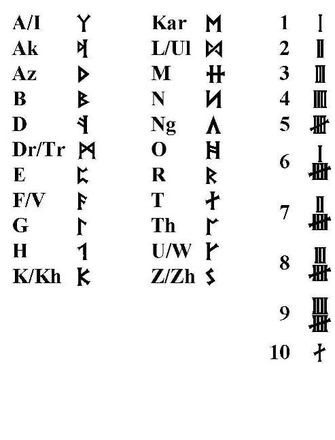
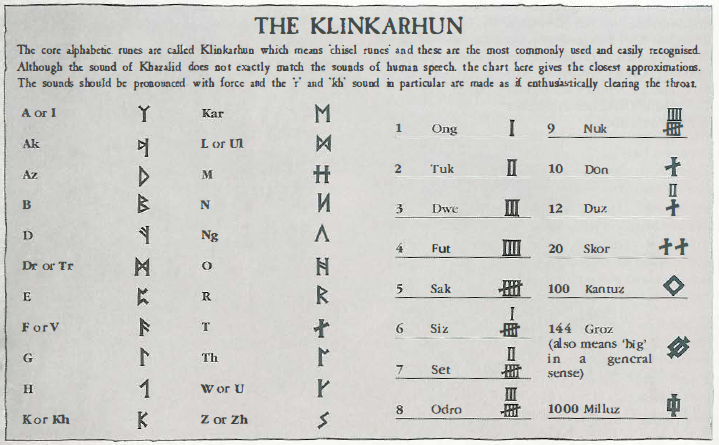
Basic Structure
Whilst Khazalid undoubtedly has a formal grammatical structure, as an outsider, it can be very hard to discover what that might be. Theoretically, and in general, Khazalid places the subject before the verb and the object afterwards, but emphasis of pronunciation alone can sometimes determine a word's position within the structure of a sentence. In other cases, the importance of a particular word can demand that it be placed first in the sentence. Such words are often placed first out of respect and then again in their proper place later on, for example "the king; I went to see the king." When repeated words are written or carved, they commonly appear as individual runes at the start of a sentence and klinkarhun elsewhere.
The first principle of the dwarf tongue is that almost all of its words represent solid physical things. There are surprisingly few specific words for abstract concepts. As a result many words double up as both a physical thing and an abstract concept strongly associated with that thing. For example, the root word for "big stone" is kar and the most common word for a mountain is karaz; the "az" ending denoting a single material thing or specific place. The same root word, kar, is also used to mean enduring in the form "karak"; the "ak" ending denoting an abstract concept. Thus Karaz-a-Karak, the name of the dwarf capital, means "enduring mountain" or literally "big stony stone place", though the name is more attractively rendered into human speech as Everpeak.
Curiously, the dwarf word for the race of men is umgi, whilst its abstract form of umgak means "shoddy", the dwarf word being equivalent to "man-made". To many, this demonstrates how important it is to look at the end of dwarf words; for it is these special signifiers which usually tell you what the word actually means. There are many types of signifiers, some of which are given below, and by combining the different signifiers with root words it is possible to expand the basic Khazalid lexicon given here.
Although root words are often used on their own, many Khazalid words consist of a root word followed by one or more signifiers. Example:
| Root Word | |
|---|---|
| Kar | |
| Meaning | big stone |
| Combined |
| Signifier n1 | Signifier n2 |
|---|---|
| az | i |
| place | racer, person |
| mountain | mountaineer |
Some root words don't exist in a separate form at all. If a root word consists entirely of consonants it is usually written with an extra "a" at the end but this is dropped when a signifier is added. For example "Ska" is the root for "thief", "theft" and "to steal".
- Ska + az; Skaz a thief in general; a thief
- Ska + azi; Skazi a specific thief; the thief
- Ska + ak; Skak a theft
- Ska + it; Skit a steal
Common Signifiers
In the case of all signifiers a "g" or "k" can be added immediately before the signifier if the preceding root or signifier is a vowel or weak consonant such as "l" or "r". This avoids placing two vowels together, which is something Khazalid strenuously avoids. However there are no rules for this, and in many cases one of the vowels is simply missed out especially if it is the weaker vowel "a" or "i", which are almost the same sound in Khazalid and the same rune in klinkarhun.
- az: This is a very important and common signifier and it means the word represents a specific physical thing or place; a particular mountain, not mountains in general. It is usually placed directly after the root before any other signifiers. There are many things that the dwarfs regard as so real and solid that the -az signifier is used even though they are talking about something which is neither a place nor a material object. For example "galaz" which means "fearless". In this case the -az refers to the "real essence" of the idea. So, from the root "dur" which means "stone that can be riven" comes "duraz" which means "a stone stab" but also "durak" which means "hard like a stone slab". Although it is perfectly right to describe a tough dwarf as durak (rock hard) it would also be correct to describe him as duraz (literally stone).
- ak: This is the other major common signifier and means that the word represents a concept, something abstract such as honor, courage or fortitude. Of course, dwarfs being dwarfs, really important abstract concepts are accorded the status of real things, so "a grudge to be avenged" is "dammaaz", not "dammak", but dammak still stands for the general concept of outstanding grudges.
- ar: Signifies something that continues indefinitely over time; usually an activity such as trade "ubar" but also an experience such as chronic pain "utar" and natural forces such as the movement of the sun "zonstrollar" = sun-walk-ing.
- en: This signifies something that is currently ongoing but not indefinite such as journeying "strollen", marching "gotten" or carrying a heavy burden "hunken".
- i: This signifier shows that the word refers to an individual person, or a profession, or race. In general it is most easily thought of as representing the definite article "the" or even "that person just there". Many personal names end with this signifier, too.
- al: This signifier shows that the word refers to a group or band of people or creatures, rather like a collective noun. So, whilst the word for both the race of men and "the man" is "umgi" a band of men is "umgal". It is also used to encompass a person's kinfolk in the form "Grummal"; Grumm's people often translated as Grummlings.
- it or git: This signifier, when applied to a noun, indicates something small or trivial. It is also used for a present tense verb.
- ul or kul: Common word ending for dwarf words and not always a signifier but often means "the art of, understanding of, or master of". For example "grungkul" the art of mining, and "kazakul" the art of battle or generalship.
- ha: This signifier always appears at the end of a word and is the equivalent to an exclamation mark. It is pronounced very abruptly and can be read as "so there" or "so watch it"; definitely fighting talk.
Useful Elements
The following words are the dwarf equivalent of conjunctions, relative pronouns and other common grammatical elements. Although words in their own right, they are often appended directly before other words to form new compound words such as "ok-rik" which means usurper king, literally "why-king", and "a-guz" which means "replete", literally "with-food".
- A; Of, with within, to
- Ad; Did, done (preceding a verb)
- Af; They, you (plural)
- Ai, I, Ap and Ip; All forms of yes
- An; Will/shall/am going to/with purpose (preceding a verb)
- Anad; Will have done or shall have done
- Bin; In, on, beside
- Anu; Soon, very soon, any minute now!
- Bar; But, bear in mind, except for (also the word for a fortified gate).
- Ek; He, she, it, you (singular)
- Nai, Na or Nuf; All forms of no, not and never
- Nu; Now, at this time
- Ok; Why, how
- Or; I, me, myself
- Sar; May, could, might (preceding a verb)
- Um; Them, those, these
- Un; And
- Ut; Us, we, ourselves
- Wanrag; Where
- Wanrak; When (preceding a verb)
Lexicon 1 (Khazalid-English)
A
- Agrul; Stone carving; lines in face of a very old Dwarf.
- Angaz; Ironwork.
- Ankor; Domain or realm.
- Arm; The Khazalid irregular verb to be (present tense arm; past tense urz).
- Ar'Uzkul; Dwarfen term for Geheimnisnacht.
- Az; War-axe.
- Az-Dreugidum; “War-axe of Doom”; fabled weapon wielded by Grimnir, Ancestor God of Slayers.
- Azgal; Treasure hoard.
- Azul; Metal of any kind; dependable; a sturdy dwarf.
B
- Bak; Fist, punch.
- Bar; A fortified gateway or door.
- Barag; War machine.
- Baraz; A bond or promise.
- Boga; A candle which blows out unexpectedly plunging the tunnel into darkness.
- Bok; Banging your head on the roof of a low tunnel; characteristic scar on forehead caused by same!
- Boki; Slang word for dwarf miners.
- Bolg; Large, fat belly. Also a state of extreme wealth, age and contentment.
- Bozdok; Unhinged as a result of constantly banging one’s head on low roofs and pit props; "crosseyed".
- Bran; Clever, alert, mentally sharp.
- Brodag; An annual brewing festival of Grungni.
- Bryn; Gold that shines strikingly in the sunlight; anything shiny or brilliant.
- Brynduraz; "Brightstone", name of a precious blue crystal found beneath Mount Gunbad.
- Bugrit; An invocation against ill luck uttered by a Dwarf who has banged his head, hit his thumb, stubbed his toe or some other minor misfortune. Usually repeated three times for luck.
C
- Chuf; Piece of very old cheese a Dwarf Miner keeps under his hat for emergencies.
- Cor-Dum; Dwarfen name given to Morghur.
D
- Dal; Old, good.
- Dammaz; A grievance, grudge or insult to be avenged.
- Dammaz Kron; The Book of Grudges.
- Dar; A challenge or bet.
- Dawi; Dwarfs.
- Dawi-Zharr; lit. "fire dwarf", Chaos Dwarfs.
- Dawongr; Dwarf-Friend.
- Dawr; As good as something can get without it being proven over time and hard use. Most dwarf words for "good" imply age and reliability too but "dawr" simply means "looks like it might be good". It literally translates as "like dwarf".
- Deb; New, untried, raw.
- Dibnin; The act of tinkering with something that already works perfectly, out of a belief that it can still be improved; hence "Dibna", a Dwarf who engages in "Dibnin".
- Doh; Stupid, slow witted, gullable.
- Dok; Watch, observe, see, the eye.
- Don; Ten.
- Dongliz; The parts of a Dwarf’s body impossible for him to scratch.
- Dork; Giant, tall, unstable.
- Drakk; Dragon.
- Drek; Far, a great distance; great ambition or enterprise.
- Dreng; Slay in combat.
- Drengi; Slayer, one of the cult of Slayers.
- Drongnel; Dragon stew with cave mushrooms marinated in strong ale.
- Drung; To defeat, vanquish.
- Duk; Low, narrow tunnel.
- Dum; Doom or darkness.
- Dunkin; Annual bath traditionally taken whether needed or not.
- Durak; Hard.
- Duraz; Stone or slab.
- Durazbrog; Stonebread.
- Duz; Twelve.
- Dwe; Three.
E
- Ekrund; A stairway descending beneath the ground.
- Elgi; Elves.
- Elgram; Weak, enfeebled, thin.
- Elgraz; Construction that looks as if it is about to collapse.
- Endrinkuli; An engineer or mechanic (generally a Dwarf Engineer).
F
- Fleg; Banner, standard.
- Frongol; Mushrooms that grow at the back of a cave.
- Frurndar; "the Tainted", another term for Chaos Dwarfs.
- Fut; Four.
G
- Galaz; Gold of particular ornamental value.
- Gand; Find, discover.
- Garaz; Fearless, rebellious.
- Gazan; Plains, wasteland.
- Ghal; Skull.
- Ghal Maraz; "skull splitter", name of the legendary warhammer of Sigmar.
- Gibal; Fragments of food enmeshed in a Dwarf’s beard.
- Ginit; Small stone which works its way into your boot causing discomfort.
- Girt; Broad tunnel with plenty of headroom.
- Git; The Khazalid irregular verb to go (present tense git; past tense ged).
- Gnol; Old, reliable, proven, wise.
- Gnollengrom; Respect due to a Dwarf who has a longer and more spectacular beard.
- Gnorl; An especially bright and obvious boil or similar blemish on the end of the nose.
- Gor; Wild beast.
- Gorak; Great cunning, uncanny.
- Gorl; Gold that is especially soft and yellow; the color yellow.
- Gormlhune; Mannslieb, roughly translated into Reikspiel as "High Moon", or "Old Moon".
- Gorog; Ale; high spirits; a drinking binge.
- **Go;**t March or travel quickly and with purpose.
- Gov; Thane.
- Gozunda; Practically anything kept under the bed for "emergencies".
- Grik; Pain in the neck caused by continually stooping in low tunnels.
- Grim; Harsh, unyielding.
- Grimaz; Barren place.
- Grimgrong; lit; "Unyielding Anvil", also the name for one of the great gates of Karak Azul.
- Grindal; Long flaxen plaits worn by Dwarf maidens.
- Grint; Waste rock or spoil left by miners’ excavations.
- Grizal; Poor meat.
- Grizdal; Ale that has been fermented for at least a century.
- Grob; The color green, also Goblins and Orcs; literally greenies.
- Grobi; Goblins.
- Grobkaz; Goblin work, evil deeds.
- Grobkul; Art of stalking Goblins in caves.
- Grog; Inferior or watered ale; mannish brew.
- Grom; Brave or defiant.
- Grombolgi; Halflings
- Grombolgi-kazan; The Moot
- Gromdal; An ancient artefact.
- Gromthi; Ancestor.
- Grong; Anvil.
- Gronit; The Khazalid irregular verb to do (present tense gronit; past tense gird).
- Gronti; Giant (as in the creature).
- Groz; One hundred and forty-four; can also mean big in a general sense.
- Grumbak; A short measure of ale; trivial complaint or grumble.
- Grumbaki; A grumbler or whiner.
- Grund; Hammer, also sometimes called "rikkaz".
- Grung; A mine.
- Grungnaz; Making or smithying.
- Grungni; Dwarf ancestor, god of mines and smiths.
- Grungron; A forge.
- Gruntaz; Strip of cloth worn round the loins and supposedly eaten in extreme emergencies hence, "down to his gruntaz".
- Gruntitrogg; Secret coming of age ritual practiced amongst Dwarfkind; details of this are amongst the most closely kept of all Dwarf secrets.
- Guz; To consume food or drink.
- Guzzen; Feed, insert, push.
H
- Hazkal; Ale brewed recently; a fiery young warrior.
- Hunk; Carry heavy rocks or other burden.
- Hruki; Breed of mountain goat.
I
- Ik; Putting your hand in something slimy and unpleasant in the darkness.
- Ip; Yes.
- Irkul; Pillared vault hewn in rock.
- Izor; Copper.
J
- Jifful; Process of careful and precise adjustment to fit; especially in respect of engineering or stonemasonry.
K
- Kadrin; Mountain pass.
- Kalan; Clan.
- Kantuz; One hundred.
- Karag; Volcano or barren mountain.
- Karak; Enduring.
- Karaz; Mountain.
- Karin; Shield, temporary protection.
- Karugrombthi; Living Ancestors.
- Kazad; Fortress.
- Kazak; War or battle.
- Khaz; An underground hall.
- Khazhunki; Knight, cavalry, rider. Lit. "carried warrior".
- Khazukan; Dwarfs, literally "hall dwellers".
- Khrum; War drum.
- Klad; Armor.
- Klinka; Chisel.
- Klinkarhun; Common runes.
- Kol; Black stone, the color black, sombre.
- Kolraki; Stormvermin.
- Konk; Gold that is ruddy in color; large and bulbous nose.
- Krink; Bad back due to continual stooping.
- Kro; Crow, raven, dark bird.
- Kron; Book, record or history.
- Kruk; A seemingly promising vein of ore which gives out suddenly; an unexpected disappointment; a venture which comes to nothing.
- Krunk; Underground rockfall; a disaster!
- Krut; A discomforting disease contracted from mountain goats.
- Kruti; A Dwarf suffering from krut; a goatherd; an insult.
- Kulgur; The art of cooking Troll.
- Kuri; Meat stew boiled up by traveling Dwarfs from whatever ingredients are at hand. Traditionally spiced with wild berries.
- Kvinn; Lady.
L
- Lok; Highly embellished or intricate; praiseworthy.
M
- Makaz; Weapon or tool.
- Mhornalhune; Morrslieb, translated roughly as "Shadow Moon" in Reikspiel.
- Milluz; One thousand.
- Mingol; Tall watchtower built on lowland.
N
- Naggrund; An area of great upheaval, devastation, or industry.
- Nai; No.
- Narwangli; A dung collector or Dwarf who smells strongly of dung.
- Nogarung; Drinking tankard made from a Troll’s skull.
- Nubungki; A Dwarf child deformed at birth, shunned by its clan and exiled. A great shame to the clan and the hold.
- Nuk; Nine.
O
- Odro; Eight.
- Ogri; Ogre.
- Ok; Cunning or skillful.
- Okri; Craftsman; a common personal name.
- Ong; One.
- Onk; Comradely accretion of dirt and grime on a company of Dwarfs who have spent many days underground.
- Onkegruni; "Widow Maker", name of the axe Grimnir gave his son Morgrim.
R
- Ragarin; Coarse and uncomfortable clothing made from a Troll’s hide.
- Rhun; Rune, word or power.
- Rhunki; Runesmith.
- Rik; King or lord.
- Rikkazen; Crush, to beat to a pulp, to turn to rubble.
- Rikkit; A small stone that falls on your head as you walk down a tunnel.
- Ril; Gold ore that shines brightly in rock.
- Rink; Command, to give orders, to lead.
- Rinn; A lady Dwarf or king’s consort.
- Rinri; Queen.
- Rogwak; An improvised team game played underground and using anything to hand as a ball, often a rock, preferably a Goblin’s head, or even a whole Goblin.
- Rorkaz; Informal shouting contest.
- Ruf; A large underground dome either natural or constructed.
- Runk; A one sided fight; a sound thrashing!
- Rutz; Slackness of bowels caused by drinking too much ale.
S
- Sak; Five.
- Set; Seven.
- Siz; Six.
- Skarrenruf; The color bright blue, the day time sky.
- Skaz; Thief.
- Skof; A cold meal eaten underground.
- Skor; Twenty.
- Skrat; To search for gold amongst rock debris or stream bed; scavenge; sparse living.
- Skrati; Poor prospector.
- Skree; Loose rock on a mountainside.
- Skruff; A scrawny beard; an outrageous insult!
- Skrund; To hew rock; to get stuck in!
- Skuf; A drunken brawl or skirmish.
- Slotch; The sodden mix of water, mud and pulverized stone found at the bottom of a mineworking.
- Smak; Punish physically.
- Stok; To hit or strike.
- Strol; Walk or travel leisurely.
- Stromez; Stream.
T
- Thag; Slay by act of treachery.
- Thagi; Murderous traitor.
- Thaggoraki; Skaven, assassin, footpad.
- Thindrongol; Secret vault in which ale or treasure is hidden.
- Thingaz; Dense forest.
- Throng; Army; huge assembly of dwarfs; a clan.
- Thrund; A handgun.
- Trogg; A feast or heavy drinking bout.
- Troll; Troll.
- Tromm; Beard; respect due to age or experience.
- Tuk; Two.
- Tusk; Tooth.
U
- Ufdi; A Dwarf overfond of preening and decorating his beard; a vain Dwarf; a Dwarf who cannot be trusted to fight.
- Umanar; Roughly or approximately, and also indecision or vacillation.
- Umgak; Shoddy, poorly made.
- Umgi; Men.
- Unbak; Break permanently.
- Unbaraki; An oathbreaker, there is nothing worse in Dwarf estimation; an insult of the worst kind.
- Und; A watchpost carved into the mountainside.
- Ungdrin Ankor; The Underway, the ancient underground roadway of the dwarfs.
- Ungor; Cavern.
- Ungrim; A Dwarf who has not yet fulfilled an important oath; an untrustworthy Dwarf.
- Urbar; Trade.
- Urbaz; A trading post or market.
- Urk; Orc or enemy; also fear, to be afraid of, to retreat.
- Uzkul; Bones or death.
- Uzkular; Undead.
V
- Valdahaz; Brewery.
- Varf; Wolf, hound.
- Varn; Mountain lake.
- Vongal; Raiding band.
- Vorn; A farm.
W
- Wan; On its own at the start of a phrase, wan shows the phrase is a question. It’s the Dwarf equivalent of a question mark. This is usually missed off where a standard wan; question word is used instead (wanrag, wanrak, wanrum). Wan is also used immediately before another word to frame a question: "ek wangit?" "are you going" literally "you go?", "wandar" "is it good?" literally "good?".
- Wanaz; A disreputable Dwarf with an unkempt beard; an insult.
- Wattock; An unsuccessful Dwarf prospector; a down-at-heel Dwarf; an insult.
- Wazzok; A Dwarf who has exchanged gold or some other valuable item for something of little or no worth; a foolish or gullible Dwarf; an insult.
- Werit; A Dwarf who has forgotten where he placed his tankard of ale; a state of befuddlement.
- Wutroth; Wood from ancient mountain oak.
- Wyr; White.
Z
- Zak; An isolated hut in the mountains.
- Zaki; A crazed Dwarf who wanders in the mountains.
- Zan; Blood, the color red.
- Zanen; A bleeding wound.
- Zangunaz; Vampire.
- Zank; Cleave, cut, divide.
- Zharr; Fire.
- Zhuf; Waterfall, torrent, or rapidly flowing river.
- Zint; The metal tin, hence zinti, a tinsmith or tinker.
- Zorn; Upland plateau or high meadow.
- Zon; Sun.
Lexicon 2 (English-Khazalid)
- !: Ha (to be added at the end of the last word of the sentence)
- ?: Wan (to be added at the front of the first word of the sentence)
A
- Ale: Gorog (also used for high spirits, drinking binge), Grizdal (ale which has been fermented for at least a century), Grog (inferior, watered ale; mannish brew), Grumbak (short measure of ale), Hazkal (ale brewed recently, also fiery young warrior)
- Alive: Karu (see "ancestor")
- Ambition: Drek (see "enterprise", "far")
- Ancestor: Gromthi, Karugromthi (Living Ancestor)
- And: Un
- Anvil: Grong
- Approximately: Umanar (see "indecision")
- Armour: Klad (iron armor, iron plating)
- Army: Drangthrong (Huge Dwarf Army), Throng (see "clan")
- Arrival: Katalhüyk (end of a journey)
- Art of inscribing runes on precious metal with a Troll’s Tooth: Arkhandrazkal
- Art of stalking Goblins in caves: Grobkull
- Art of hunting and catching Trolls: Khulghur
- Art of cooking Troll: Kulgur
- Artifact: Gromdal (ancient artifact)
B
- Back: Krink (bad back due to continual stooping)
- Banging (one’s head on the roof of a low tunnel): Bok
- Banishment: Ghull, Ghull-dreng (see "exile")
- Banner: Fleg (see "standard")
- Barren: Grimaz (barren place), Norn (barren earth, area with limited resources)
- Battle: Kazak (see "war")
- Beard: Skruff (scrawny beard, outrageous insult), Tromm (also respect due to age or experience)
- Bearded: Gorm (see "old")
- Beast (wild), Beastmen: Gor
- Befuddled: Werit (Dwarf who has forgotten where he placed his tankard or ale)
- Bet: Dar (see "challenge")
- Belly (large, fat): Bolg (also refers to state of extreme wealth, age and contentment.
- Berserker: Bakraz (see "nutter")
- Beside: Bin (see "in", "on")
- Bird: Kro (black bird, see "crow", "raven")
- Black: Drazh (see "night"), Kol (color)
- Blood: Zan (see red)
- Blue: Skarrenruf (see "sky")
- Boarding house: Tiwaz (see "inn", "rest")
- Bond: Baraz (see "promise")
- Bones: Uzgul, Uzkul (see "death")
- Book: Kron
- Brave: Grom
- Brawl: Skuf (see "skirmish")
- Bread: Brog (see "cake")
- Breezy: Zilfin (see "windswept")
- Brewery: Valdahaz
- Brilliant: Bryn
- But, bear in mind, except for: Bar
C
- Cake: Brog (see "bread")
- Candle (that blows out unexceptedly plunging tunnel into darkness): Boga
- Cannon: Barag (see "siege machine", "war machine")
- Capture: Und (see "keep", "hold out")
- Carry (verb): Hunk (carry heavy rocks or other burden)
- Cavalry: Kazhunki (see "knight", "rider")
- Cavern: Ungor (see "tunnels"), Vulkhrund (cavernous hiding place)
- Cave-in: Rikigraz (see "landsldie")
- Challenge: Dar (see "bet")
- Chaos: Dum
- Cheese: Chuf (old cheese used in emergencies by Dwarf miners)
- Chisel: Klinka
- City: Kazad (see "fortress")
- Clan: Throng (see "army’)
- Cleave: Zank (see "cut", "divide")
- Cleaver: Maraz
- Clever (alert, mentally sharp): Bran
- Clothing: Ragarin (coarse, uncomfortable clothing made from the hide of a troll)
- Cloud: Orrud (red cloud, volcanic plume)
- Complaint: Grumbak (trivial complaint)
- Conquer (verb): Drung
- Construction (that looks like it is about to collapse): Elgraz
- Consume (verb): Guz (to consume food or drink, see "eat", "drink")
- Contest: Rorkaz (informal shouting contest)
- Copper: Izor
- Could: Sar (see "may", "might")
- Craftsman: Okri
- Crazy: Zaki (crazed dwarf who wanders in the mountains)
- Crescent: Lhune
- Crow: Kro (see "raven", "bird")
- Crown: Gron
- Cruel: Grimaz
- Cunning: Gorak (see "uncanny", "magical"), Ok (see "skillful")
- Cut: Zank (see "cleave", "divide")
D
- Danger: Khatül (lurking danger)
- Dark: Dhark
- Dark (the dark beneath the world): Dharkhangron (see "underground")
- Darkness: Dum
- Death: Uzgul, Uzkul (see "bones")
- Defeat (verb): Drung
- Defiant: Grom
- Dependable: Azul (also see "metal")
- Desolate: Vlag (see "lonely")
- Desolation: Naggrund (desolate area where dragons or trolls live, see "devastation", "ruin")
- Devastation: Naggrund (see "ruin")
- Did: Ad
- Dirt: Onk (accredtion of dirt and grime on company of Dwarfs who have spent many days underground)
- Disappointment: Kruk (unexpected disappointment)
- Disaster: Krunk
- Discover (verb): Gand
- Disreputable: Wanaz (disreputable dwarf with unkempt beard)
- Distance: Drek
- Divide: Zank (see "cut", "cleave")
- Do (verb): Gronit (present tense: gronit;
past tense: gird) - Dog: Varaz (mad dog)
- Domain: Ankor
- Dome: Ruf (underground dome, natural or constructed)
- Done: Ad (see "Did")
- Doom: Dum
- Door (fortified): Barak (see also "gateway")
- Dragon: Drakk (also used for "monster" in general)
- Dragon stew: Drongnel (stew with mushrooms marinated in strong ale)
- Dragonslayer: Drakendrengi
- Drink: Guz
- Drink (verb): Guzzen
- Dwarf, Dwarfs: Dawi
E
- East: Nar (see "sunrise")
- Eat (verb): Guz
- Elder: THrongrink
- Elves: Elgi
- Embellished: Lok
- Enemy: Urk (see "ork")
- Enfeeble: Elgram
- Enduring: Karaz
- Engineer (Dwarf): Endrinkuli
- Enterprise: Drek (see "ambition", "far")
- Eternity: Azamar (see "forever")
- Exile: Ghull, Ghull-dreng (see "banishment")
- Explosion: Thrund (see "gun", "gunpowder")
- Eye: Dok
F
- Far: Drek (see "ambition", "enterprise")
- Farm, Farmland: Vorn
- Fearless: Garaz
- Feast: Trogg (also heavy drinking bout)
- Feed: Guzzen (see "insert", "push")
- Fight: Runk (one-sided fight, a sound trashing)
- Find (verb): Gand
- Fire: Har, Zharr
- Flood: Ruvalk (see "river")
- Food (fragments found in beard): Gibal
- Foolish: Wazzock (gullible, foolish dwarf, one who exchanged a valuable for an item of no worth)
- Forest: Thingaz (dense forest)
- Forever: Azamar (see "eternity")
- Forge: Grungron
- Fortune: Akrak (see "luck")
- Fortress: Kazad (see "city")
G
- Gatehouse: Migdhal (see "outpost")
- Gateway (fortified): Barak
- Guard: Undi (see "watcher")
- Giant, Giants: Gronti
- Giant Slayer: Grontdrengi
- Gift: Zaraz
- Glass: Mizpal (volcanic glass)
- Go (verb): Git
- Goatherd: Kruti (insult, slang)
- Goblin, goblins: Grobi, Grobkaz (goblin work, evil deeds)
- Gold: Bryn (gold which shines strikingly in the sunlight), Frorl (lucky gold, known to bring good fortune and prosperity), Galaz (gold (of particular ornamental value), Gorl (gold which is especially soft and yellow), Gorlm (old gold, passed down through many generations and left undisturbed in guarded treasure vaults), Konk (gold that is reddy in color), Kurz (unlucky gold, that has been used in misadventure or in which brings the recipient has fallen foul of circumstance, such as gold that has been used to pay for inferior goods), Ril (gold ore which shine brightly in rock)
- Good: Dal (see "old")
- Good (as good without being proven over time and hard use): Dawr
- Great Axe: Az-Dreugi (see "War-Axe", "Weapon")
- Green: Grob
- Grudge (grievance, insult to be avenged): Damnaz
- Grumble: Grumbak
- Grumbler: Grumbaki
- Gullible: Doh (see "stupid"), Wazzok (see "foolish")
- Gun: Thrund (see "gunpowder", "explosion")
- Gunpowder: Thrund (see "gun", "explosion")
H
- Hall: Khaz (underground hall, palace halls)
- Hall-dwellers: Khazukan Dawi (literally "stay at the Hold" Dwarfs)
- Hammer: Grund, Rikkaz
- Hard: Durak, Grom (see "brave")
- Harsh: Grim (see "unyielding"), Grimaz
- He (she): Ek
- Headband: Thongli (worn by warriors who have slain an orc or goblin)
- Hew (verb): Skrund (to hew rock with hammers and picks)
- High: Gorm
- Highway: Drin
- History: Kron (see "book"), Zagaz (see "remembering", saga)
- Hit: Stok (see "strike")
- Hold out (verb): Und (see "keep", "capture")
- Honour: Thrynaz (code of honor) (see "law", "rules")
- Horde: Vorkhul (migrating horde of orcs and goblins)
- Horn: Goruz (Horn, made of horns), Hirn (instrument)
- Hound: Varf (see "wolf")
- How: Ok
- Humans: Umgi
- Hut: Zak (isolated mountain hut)
I
- I: Or (see "me", "myself")
- Ice: Wyr (see snow, white)
- In: Bin (see "on", "beside")
- Indecision: Umanar (see "approximately")
- Industral work: Angaz (see "Ironwork")
- Inn: Tiwaz (see "rest", "boarding house")
- Insert: Guzzen (see "feed", "push")
- Intricate: Lok
- Ironwork: Ang
- It: Ek
J
- Jewel, Jewels: Izril
- Justice: Vengryn (see "revenge", "vengeance")
K
- Keep: Migdhal (see "outpost")
- Keep (verb): Und (see "capture", "hold out")
- King: Rik (also used for "lord")
- Kingship: Za
- Knight: Kazhunki (see "cavalry", "rider")
L
- Lady: Kvinn
- Lake: Varn (mountain lake)
- Landslide: Rikigraz (see "cave-in")
- Lava: Haraz
- Laws: Thrynaz (see "rules", "honor" )
- Length: Langk
- Lonely: Vlag (see "desolate")
- Long: Langk (see "length")
- Lordship: Za
- Luck: Akrak (see "fortune")
M
- Machine (siege, war): Barag
- Magical: Gorak
- Make (verb): Grungnaz
- March (verb): Got
- Market: Urbaz
- Masonry (in the sense of "massive masonry"): Azkahr
- May: Sar (see "could", "might")
- Me: Or (see "I", "myself")
- Meadow: Zorn (high meadow, see "plateau", mountainous)
- Meal: Skof (cold meal eaten underground)
- Meat: Grizal (poor meat), Kuri (meat stew)
- Merchant: Vithang (see "trader")
- Metal: Azul
- Metalwork: Grungron
- Might: Sar (see "could", "may")
- Mine: Grung
- Miner: Boki (slang)
- Money: Wulthrung (see "payment", "obligation", "reward")
- Monster: Drakk (see "Dragon")
- Moonlight: Lhune (see "crescent")
- Mountain: Karag (barren mountain, see "volcano"), Karak
- Mountain Pass: Kadrin
- Mountainous: Zorn (mountainous land, see "plateau", "meadow")
- Mushrooms (from back of a cave): Frongol
- Myself: Or (see "I", "me")
N
- New: Deb (see "untried", "raw")
- Night: Drazh (see "black")
- No: Nai, Na, Nuf
- Nose: Konk (large and bulbous nose)
- Now: Nu
- Nutter: Bakraz
O
- Oathbreaker: Unbaraki
- Observe: Dok
- Obligation: Wulthrung (see "money", "payment", "reward")
- Of : A
- Ogre: Ogri
- Old: Dal (see "good"), Gnol (see "wise"), Gorm (see "high", "wise", "powerful", "bearded"), Karaz (see "enduring", "strong")
- On: Bin (see "In", "beside")
- Ork: Grob (greenskins), Urk
- Orkslayer: Urkdrengi
- Ourselves: Ut (see "we", "us")
- Outpost: Migdhal (fortified outpost)
- Own (verb): Bezek (see "posses")
- Owner: Bezeki
P
- Pain: Grik (pain in neck caused to continually stooping in low tunnels)
- Parry: Klang
- Payment: Wulthrung (see "money", "reward", "obligation")
- Plains: Gazan
- Plaits: Grindal (long flaxen plaits worn by maidens)
- Plateau: Zorn (upland plateau, see "meadow", "mountainous")
- Polished: Ril (see "gold")
- Posses (verb): Bezek
- Possesor: Bezeki
- Power: Rhun (see "rune", "word")
- Powerful: Gorm (see "old")
- Praiseworthy: Lok
- Promise: Baraz (see "bond")
- Prospector: Skrati (poor prospector)
- Proven: Gnol
- Push: Guzzen (see "food", "insert")
Q
- Queen: Rinn
- Quick: Alabrin (see "swiftness")
R
- Raiders: Vongal (raiding band of men)
- Raven: Kro (see "crow", "bird")
- Raw: Deb (see "new", "untried")
- Realm: Ankor (see "Domain")
- Rebellious: Garaz
- Record: Kron (see "book")
- Red: Zan (see "blood")
- Redstone: Rhyn
- Reliable: Gnol
- Remember: Zagaz (remembering, see "history", "saga")
- Respect: Gnollengrom (respect due to a Dwarf who has a longer and more spectacular beard)
- Rest: Tiwaz (see "inn", "boarding house")
- Revenge: Vengryn (see "revenge", "justice")
- Reward: Wulthrung (see "payment", "obligation", "money")
- Rider: Kazhunki (see "knight", "cavalry")
- River: Ruvalk (See "flood"), Zhuf (rapidly flowing river, mountain river, see "waterfall")
- Road: Drin
- Rock: Duraz, Grint (waste rock left by mining excavations), Skree (loose rock on mountainside, rocky ground)
- Ruin: Naggrund
- Rules: Thrynaz (see "law", "honor")
- Rune: Rhun (see "word", "power")
S
- Sage: Zagaz (see "remember", "history")
- Scar: Bok (scar from banging one’s head on the roof of a low tunnel, see "banging")
- Scavenge: Skrat (see "search")
- Sea: Varr
- Search: Skrat (to search for gold amongst rock debris or stream bed)
- See (verb): Dok
- Settlement: Kazid (see "town", "village")
- Shadow: Mhornar
- Shieldwall: Thrung
- Shiny: Bryn, Ril (see "gold")
- Shoddy: Umgak
- Shrine: Thryng (shrine of ancestors, see "temple")
- Silver (colour): Azril
- Skilful: Ok (see "cunning")
- Skirmish: Skuf (see "brawl")
- Skull: Ghal
- Sky: Skarrenruf (see "blue")
- Slag: Muzkhgrum (blast furnace slag)
- Slay (verb): Dreng, Thag (to slay by act of treachery)
- Slayer: Drengi
- Smash (verb): Drung
- Smithying (verb): Grungnaz
- Snow: Wyr (see "ice", "white")
- Song: Skaud (loud, booming sound)
- Soon: Anu (also translates as "very soon", "any minute now")
- Sombre: Kol (see "black")
- Splitter: Maraz
- Stairway (descending belowground): Ekrund
- Staff: Wand (magical rune staff)
- Standard: Fleg (see "banner")
- Stone (slab): Duraz, Kol (black stone), Rikkit (small stone which falls on your head as you walk down a tunnel)
- Stream: Stromez
- Strike (verb): Stok (see "hit")
- Strong: Karaz
- Stronghold: Karak (see "mountain")
- Stupid: Doh
- Sturdy, Sturdy Dwarf: Azul
- Sun: Zon
- Sunrise: Nar
- Sunset: Yar (see "west")
- Swiftness: Alabrin (see "quick")
T
- Tankard: Nogarung (drinking tankard made from the skull of a Troll)
- Temple: Thryng (see "shrine")
- Thane: Gov
- Them: Um (see "those", "these")
- These: Um (see "them", "those")
- They: Af
- Thief: Skazi
- Thievery: Skaz
- Thin: Elgram
- Those: Um (see "them", "these")
- Thunder: Dron
- Tomb: Grongol (tomb of the ancestors)
- Tool: Makaz
- Tooth: Tusk
- Tough: Grom (see "brave")
- Tower: Barak (see also "gateway")
- Town: Kazid (see "village", "settlement")
- Trade: Urbar
- Trader: Vithang (see "merchant")
- Trading post: Urbaz (see "market")
- Traitor: Thagi (murderous traitor)
- Travel (verb): Got (to travel quickly with purpose), Strol (travel leisurely)
- Treasure: Azgal (treasure hoard)
- Tribute: Thragh
- Troll: Troll
- Trolldrengi: Trollslayer
- Tunnel: Duk (low, narrow), Girt (broad with plenty of headroom), Ungor
U
- Unbearded: Elgi (see "Elves")
- Uncanny: Gorak
- Underground: Dharkhangron (see "Dark")
- Underway: Undgrin Ankor
- Us: Ut (see "we", "ourselves")
- Unsuccessful: Wattock (unsuccessful dwarf)
- Untried: Deb (see "new", "raw")
- Untrustworthy: Ungrim (untrustworthy dwarf)
- Unyielding: Grim (see "harsh")
V
- Vain: Ufdi (Vain Dwarf, overly fond on preening his beard)
- Vampire: Zangunaz
- Vanquish (verb): Drung
- Vault, Vaults: Grongol (see "tomb"), Irkul (pillared vault hewn in rock), Thindrongol (secret vault in which ale or treasure is hidden)
- Vein: Kruk (promising vein of ore that gives out unexpectedly, see "disappointment")
- Vengeance: Vengryn (see "justice", "revenge")
- Village: Kazid (see "town", "settlement")
- Volcano: Karag
W
- Walk (verb): Strol
- Wall: Barak (see also "gateway"), Huzhrung (massive city wall)
- War: Kazak (see "battle")
- War Axe: Az
- War Drum: Khrum
- Wasteland: Gazan
- Watch (verb): Dok
- Watcher: Undi
- Watchpost: Und (see "keep", "capture", "hold out")
- Watchtower: Mingol (tall watchtower on lowland)
- Waterfall: Zhuf (see "river")
- Water pump: Kuchungkuchung
- Water wheel: Kuchungkuchung (see "water pump")
- We: Ut (see "us", "ourselves")
- Weak: Elgram
- Weapon: Az (see "war axe"), Makaz (see "tool")
- West: Yar (see "sunset")
- When: Wanrak
- Where: Wanrag
- Whiner: Grumbaki (see "grumbler")
- White: Wyr (see "snow", "ice")
- Why: Ok
- Windswept: Zilfin (see "breezy")
- Will: An (also used for "shall", "am going to", "with purpose"), Anad (will/shall have done)
- Wise: Gnol (see "respect"), Gorm (see "old", "powerful", "bearded")
- Wolf: Varag (see "dog"), Varf (see "hound")
- Wood: Wutroth (wood from ancient mountain oak)
- Word: Rhun (see "rune", "power")
- Work: Ori
- Wound: Thrag
Y
- Yellow: Gorl
- Yes: Ai, I, Ap, Ip
- You : Ek (singular), Af (plural, see "they")
- Young: Garaz
Dwarfen songs:
- We march like thunder on the hills, to right the wrongs of old
- Wrath and fury, Grudge and strife, We march into the afterlife
- Win her hands with songs of old. Gromril steel and hoard of gold
- Rats and vermin, sneak and squeak, guard your hold, from deep to peak
- His axe shone silver in the dark, his brow was wrathful bold, (The Doom of Broggi Stonehand, a fine song to go with an ale or twelve, indeed it is a fine tale of grudges settled and foemen lying like firewood on the mountainside)
- Axe Bite Pass take me back, one dead gobbooo, two dead orks, (trumpet sounds)
- In Grimnir’s hold with purpose bold, the liberator strikes! In Gromril hold on throne of gold, DOWN DOWN DOWN WE GO! We’ll mine for gold and fight for hold, Where a Dawi stands victory rooose!
Dwarfen Armory
The Dwarfs are the leading experts in the most advanced technology ever possessed by any mortal race. Being the first to discover the potential of steam engines and gunpowder, the Dwarfen race are a race of Engineers as well as Warriors, unsurpassed in all avenues of science and technology and hindered only by the highly strict traditions imposed by their elders and their society. Under the watchful guidance of the Dwarfs, the Empire of Man is also rapidly catching up with their advancements, and may soon replace them as a technological superpower.
Gromril
Gromril, also known as meteoric iron, star metal, silverstone or silversteel, is the toughest and sturdiest metal in the world and is forged into the best and hardest swords, axes and armor. No weapons made by mundane means last forever, except for perhaps gromril weapons. It is the favored metal of any Dwarf Runesmith, and in its purest form, it holds runes better than any substance in the world. As only Dwarf Runesmiths have the secret knowledge and skill to work this ore, gromril armor and arms are quite rare.
Mining In the ancient past a meteor crashed from the sky to pound a huge gaping crater out of the rock of the Worlds Edge Mountains, which filled with the melt water of the surrounding mountains becoming the vast lake known as Varn Drazh or Black Water. All around the shores are to be found valuable metal ores, including the much prized meteoric iron known as gromril. Strongholds were founded by the Dwarfs around Varn Drazh to mine the meteoric metals. Karak Varn was hewn out of the cliffs overlooking Black Water, and the gromril mined there used to be smelted in Zhufbar.
Uses. Many times more precious than gold, gromril is used to make armor and weapons for the Dwarf nobility and for elite military units. Such examples include many of the heavy, but perfectly balanced, great hammers that Dwarf Lords give to their Hammerers as a symbol of their bond, but by far the most iconic items are the full suits of plate armor worn by Ironbreakers.
All manner of fell creatures lurk below and the Ironbreakers guard the deep abandoned tunnels from those that would otherwise invade the hold. They spend much of their time below ground in the deepest, least visited parts of the stronghold. In these dark places, ambush and rockfall are commonplace hazards and survival is often dependent on wearing the right armor. Accordingly, Ironbreakers wear fine suits of gromril armor, crafted by the smiths of the hold and worn as a badge of honor by this select band of warriors. Irondrakes use an even stronger version, as when first used, even the gromril armor of the Ironbreakers struggled to protect against the intense heat generated by the fiery blasts of their Drakeguns. With the aid of Runesmiths, new armored suits were developed for the Irondrakes, bearing runes of protection first designed to safeguard those who work in the high temperatures of the massive forges. Because of its rarity, the Dwarfs do not trade items made of gromril with other races. Gromril armor is always made in plates; only Grungni himself, it is said, possessed the skill and magical power to work gromril into chain mail. The most skilled Dwarf weaponsmiths make axes and hammers from gromril. Gromril weapons are normally inscribed with runes. A gromril weapon has the same characteristics as its steel counterpart, except that it can never be broken by normal means.
Armor
| Armor | Cost | Armor Class (AC) | Strength | Stealth | Weight |
|---|---|---|---|---|---|
| Medium Armor | |||||
| Miner's Gear | 80 gp | 14 + Dex modifier (max 2) | ─ | ─ | 15 kg |
| Dwarfen Scale Mail | 100 gp | 15 + Dex modifier (max 2) | ─ | ─ | 20 kg |
| Heavy Armor | |||||
| Dwarfen Mail | 150 gp | 17 | Str 13 | disadvantage | 25 kg |
| Dwarfen plates | 3000 gp | 19 | Str 15 | disadvantage | 30 kg |
| Gromril Plates | 6000 gp | 20 | Str 17 | disadvantage | 40 kg |
| Irondrake's Plates | 10000 gp | 22 + fire resistance | Str 17 | disadvantage | 45 kg |
| Shield | |||||
| Gromril Shield | 100 gp | +3 | Str 13 | ─ | 5 kg |
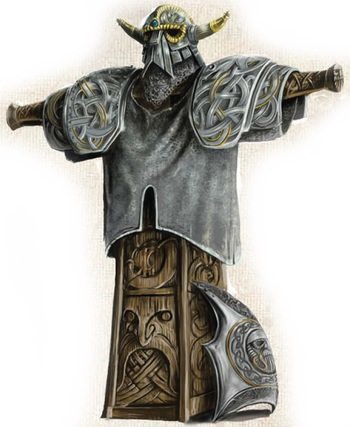
Weapons
| Name | Cost | Damage | Weight | Properties |
|---|---|---|---|---|
| Martial Ranged Weapons | ||||
| Drakefire Pistols | 200 gp | 1d10 fire | 10 kg | Heat(5) (range 12/36m), heavy, misfire(2) |
| Drakegun | 300 gp | 2d8 fire | 25 kg | Heat(10), bulky, heavy, misfire(2), special, two-handed |
| Drakegun (Trollhammer Torpedoes) | 500 gp | 4d6 fire + 4d6 thunder | 30 kg | Ammunition (range 18/45m), bulky, loading, misfire(2), scatter(4d6), two-handed |
| Grudge Raker | 100 gp | 2d8 piercing | 3 kg | Ammunition (range 9/30m), misfire(1), reload(2), scatter(1d8), two-handed |
| Thrund | 100 gp | 2d6 piercing | 5kg | Ammunition (range 100/400m), bulky, heavy, loading, misfire(1), two-handed |
Firearm Properties
The following properties will not be featured universally on every firearm and will vary from gun to gun.
Bulky. Firearms and ranged weapons with the bulky property have to be made stable in order to be fired effectively due to their weight and the damage they can put out with a single shot. You cannot move and attack during your turn while wielding a bulky firearm.
Burst Fire. A weapon that has the burst fire property can make a normal single-target attack, or it can spray a 3m cube area within normal range with shots. Each creature in the area must make a Dexterity saving throw, taking the gun's automatic damage on a failed save, or half as much damage on a successful one. This action subtracts rounds from your gun equal to the number listed in parenthesis.
Burst Fire Save DC (Not Proficient) = 12
Burst Fire Save DC (Proficient) = 8 + your proficiency bonus + your Dexterity modifier
Heat. A firearm with the heat property operates under intense temperature. Each time this weapon is used it generates a number of heat points (listed in parenthesis). When the heat points are more than 50 the firearm explodes dealing 2d10 fire damage in a 1,5m radius around it. As an action the wielder can release a venting valve loosing 10 heat points.
Misfire. If you make an attack roll and the roll matches or is lower than a firearm's misfire number, (such as 2, for example), your gun jams. You cannot make an attack with it again until you spend an action to clear the chamber. Your firearm's misfire number then goes up by 1, to a maximum of 10. You can spend 1 minute and make a DC 10 + your gun's misfire number, Dexterity (Tinker's tools) or Intelligence (Tinker's tools) check to reduce your gun's misfire number to its original value.
Reload. A limited number of shots can be made with a weapon that has the reload property. A character must then reload it using an action or a bonus action (the character's choice).
Scatter. Firearms with the scatter property have two types of damage, a regular damage roll and a scatter damage roll. When you make an attack roll with one of these guns against a creature, compare your attack roll to the AC of all creatures within 1,5m of the target. If your attack would hit them, deal the firearm's scatter damage roll to the creatures.
Special Weapons
Weapons with special rules are described here.
Drakegun. The drakegun shoots a secret solution of alchemical fire in a 12m long and 3m wide line. Each creature in the area of effect must make a Dexterity saving throw, taking the gun's damage on a failed save, or half as much damage on a successful one. When releasing this attack the wielder still has to roll a d20 for a chance of misfire.
Bombs
| Type | Damage | Radius | Dexterity Save DC |
|---|---|---|---|
| Blasting Charge | 4d6 fire | 3m | 12 |
| Dynamite | 6d6 bludgeoning | 6m | 12 |
| Grenade | 5d6 piercing | 9m | 15 |
| Gunpowder Keg | 7d6 fire | 6m | 14 |
| Powder Horn | 3d6 fire | 1,5m | 12 |
Dwarf Warriors
Dwarf Warriors are the most common frontline infantry of the holds, and form the overall bulk of most Dwarf armies. In times of war, the leaders of the clan call the muster of any Dwarfs old enough to fight to form together into regiments. Most of the individuals that will answer the call to arms are craftsmen of some sort: stone carvers, brewers, minters, and the like. But once they don their well forged mail, put on their steel helm and heft an axe in hand, they leave behind the artisan, turning that same industrious nature to their other calling; warfare.
Dwarfs make formidable fighters; they are strong and extremely resilient, broad of shoulders and wide of girth. Although they are by no means quick, they are physically robust and can maintain a steady plodding pace, marching for days on end despite being loaded down by burdens and heavy mail. When they charge into battle, the momentum generated by their wide, armor clad bodies is remarkable, hitting the foe with resounding force. They have broken many enemy battle lines this way, splintering Elven phalanxes, carving through Orc formations and hacking apart the great masses of Skaven that make up their verminous armies.
Any foe that has fought Dwarfs has quickly learned to respect them, even the elite troops of other armies have met their match against these warriors. They are grim and determined fighters, unwilling to retreat and able to advance and battle on even in the face of great adversity. Tales abound of Dwarfs hopelessly outnumbered, backed into unfavorable ground and pressed on all sides, somehow emerging triumphant.
Protected by their heavy mail, their skillful use of overlapping shield walls and, finally, by their own tough and obstinate nature, Dwarf individuals, units and armies as a whole seem able to absorb punishing blows that would cause other races to break and flee. With Dwarfs, such suffering only serves to make them angrier. Their feeble limbed foes, too worn out and tired at the end to even lift their weapons, are slaughtered, save for those fast enough to flee the iron shod and implacable advance of the Dwarfs.
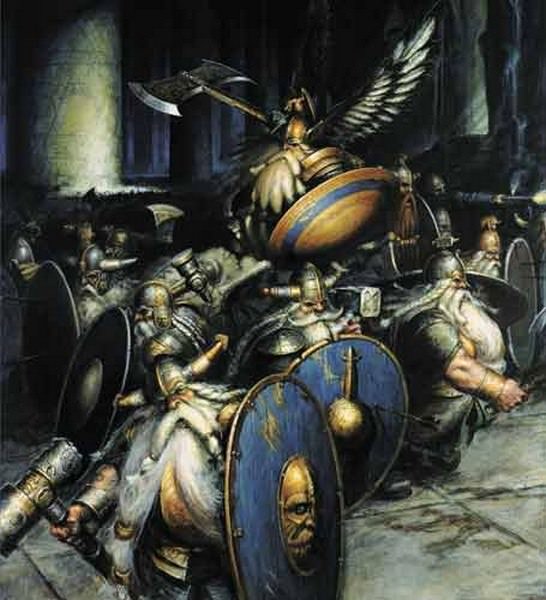


Dwarf Warrior
Medium humanoid, lawful good
- Armor Class 19 (shield, dwarfen mail)
- Hit Points 38 (5d8 + 15)
- Speed 7,5m.
STR DEX CON INT WIS CHA 15(+2) 10(+0) 14(+2) 10(+0) 14(+2) 8(-1)
- Saving Throws Con +5
- Damage Resistances magic, poison
- Senses darkvision, passive Perception 12
- Languages Common, Khazalid
- Challenge 1 (200 XP)
Dwarfen Shield Wall. Three or more dwarf warriors close together in a line can form a shield wall. While in this formation each warrior has advantage on Athletics checks and Strength saving throws, an AC of 22 and is considered behind three-quarters cover for ranged attacks from the front of the shield wall.
Dwarfen Toughness. Dwarfs are famous for their resilience. They have advantage on saving throws against poison, resistance against poison damage, and their hit point maximum is increased by an amount equal to their number of hit dice.
Magic Resistance. Dwarfs are highly inert to magic and cannot use it, with the exception of rune magic and runic objects. Because of that, they all have resistance against magical damage and advantage on saving throws against magic.
Actions
Dwarfen Battleaxe. Melee Weapon Attack: +6 to hit, reach 1,5m, one target. Hit: 7 (1d8 + 3) slashing damage.
Defensive Posture. The dwarf warrior holds its shield up defensively, providing half cover to all the creatures behind it and imposing disadvantage on all attack rolls made against it until the start of its next turn.
Quarreller/Thunderer (Dwarf Warrior variant).
A Quarreller/Thunderer is a CR 1 (200 XP) creature with the stats of a dwarf warrior but with the following changes:
- It has the following attack options:
- Dwarfen Heavy Crossbow. Ranged Weapon Attack: +6 to hit, range 30/120m, one target. Hit: 6 (1d10+1) piercing damage.
- Thrund. Ranged Weapon Attack: +5 to hit, range 100/400m, one target. Hit: 7 (2d6) piercing damage.
Quarrellers
Dwarf Quarrellers serve as dedicated regiments of heavily armored skirmishers and missile infantry for the armies of the Dwarfs. Since the Dwarfs first settled upon the treacherous slopes of the Worlds Edge Mountains, the Dwarfs required a means to drive out the many ferocious beasts that occupy its peaks at a long and safe distance. This dilemma has resulted in the creation of the first crossbow, as the traditional bows used by the High Elves were far too large to be properly used and lack greatly in proper hitting power. Such is the versatility of the crossbow that it had little need for improvements, as it had enough stopping power to drop a Black Orc in its tracks.
When the clans are called to fight, some Dwarfs arm themselves with crossbows and join the battle as Quarrellers. These formations are tasked with raining bolts down upon their foes; a task they perform with orderly zeal. Quarrellers seek to thin down the enemy’s ranks, punish units attempting to outflank their own forces and engage in ranged duels with the foe’s missile armed troops.
Dwarfs have never taken to bows, partly because they do not suit their short physical stature, but also due to the limitations of such weapons in confined tunnels. The powerfully built Dwarf crossbow can easily fire shots that outdistance the puny bows used by Goblins, and the crossbow bolts pack enough punch to devastate even heavily armored foes. With typical Dwarf precision, a unit of Quarrellers will unleash its hail of bolts, reload, take aim and fire again. Protected by heavy armor and their own sturdy constitutions, it is a rare day when an enemy, even one with more skilled marksmen than the Dwarfs, can win a long ranged shooting contest against a unit of Quarrellers. Of course, should the enemy approach near enough to engage the Quarrellers in close combat, they will find hardened warriors eager to put their axes to work as well.
The number of Dwarfs that use crossbow have fallen some in recent time as more and more started taking up handguns, but the crossbow will never disappear entirely. The Quarrellers that remain are a stubborn bunch, preferring to trust their own eyes over those new fangled sights. If nothing else, many begrudge the cost of gunpowder when all a crossbow takes is a little bit of elbow grease and a determined eye.
Thunderers
Thunderers are those Dwarfs that have been trained in the use and maintenance of a customized handgun or firearms, forming into their own regiments of armor piercing missile infantry. It took many, many years after the Dwarfs had discovered the revolutionary use of black powder before the handgun became widely used as a weapon. Indeed, in these earlier times, these handguns were held with great suspicion by the highly conservative Dwarfs, with the earlier prototypes usually being only given to Dwarf Engineers. Now, however, nearly all the Dwarf Holds can field whole regiments of Thunderers.
Standing in closely packed ranks, Thunderers take aim and then discharge their handguns, unleashing a thunderous fury and a cloud of gun smoke. The sturdy Dwarf handgun packs an even deadlier shot than a crossbow, its bullet fired with such velocity it can tear through armor and better take down more heavily protected foes, such as Chaos Warriors.
When called into battle, these Dwarfs would marshal around their own Clan regiments and fight in a tight formation on the battlefield. When the enemy is within sight, these Dwarfs form up into ranks where each row of Thunderers will take aim and unleash a murderous barrage of armor piercing bullets with deadly precision. Being methodical, the Dwarfs continue to load and fire in a disciplined manner, so long as their foes are within range. Even when the enemy advance close, almost right up on top of them, Thunderers will seek to get off one last shot. While the onset of bloodthirsty foes might cause lesser races to rush their aim, the steady coolness of the Dwarfs, not to mention the precision make of their weaponry, ensures that every volley is fired with the same lethal accuracy as the last, until the moment the Thunderers take up their axes and meet the foe’s charge in the bloody press of close combat. In short time, these Dwarfs transform into a shieldwall of axe bearers who are just as durable as a regiment of Dwarf Warriors.
Dwarfen Trait.
The adjective Dwarfen in front of a normal weapon or armor is equivalent to a +1. For example a Dwarfen Battleaxe is considered a nonmagical Battleaxe +1.
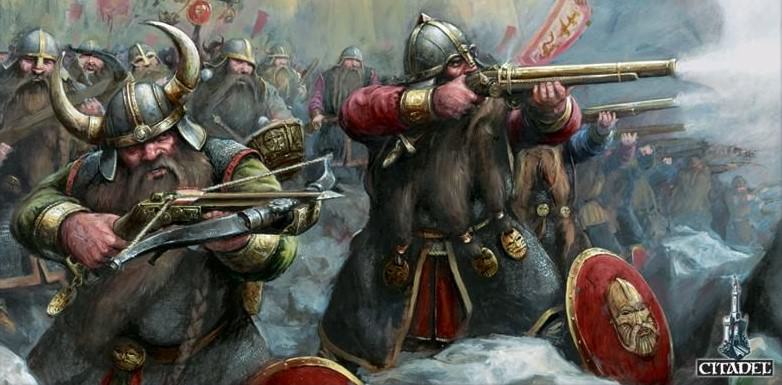






Longbeards
Dwarf Longbeards are the oldest and most battle hardened warriors within a Dwarf army. Highly prestigious individuals, these Longbeards garner great respect within a Dwarf stronghold, and are often chosen to be the leaders and advisers of many domestic issues and military campaigns. Only a Dwarf who has reached the age of five hundred, or has a beard that is touching the very floor will he be readily considered a Longbeard. This ensures that they receive the proper respect from other Dwarfs, who have been taught at an early age, and quite rightly so, to always respect their elders and listen to their well earned wisdom.
Indeed, for it is true that the Longbeards have fought in more wars, beaten more foes, and endured greater hardships than any young Dwarf could possibly imagine. They constantly grumble about how today's Goblins are far smaller and weaker than they used to be, and how nothing is as well made as it was in their day. No young Dwarf would dare argue with them, for they indeed have the experience and the beard to prove it.
Should the Kingdom of the Dwarfs come under siege by their most hated of enemies, the Longbeards would be one of the first to take command. Equipped with some of the most well crafted Dwarfen armor and weapons within their Clan, these Longbeards muster into their own regiment of crack heavy infantry, forming a unbreakable wall of shield and muscle that few can ever hope to crack. In battle, Longbeards are able to demonstrate their time won skills, showing little regard for even the smallest shifts in fortune that would throw less experienced warriors into confusion, and enduring punishments that could break the mighty resolve of even a Dwarf. Such is their inspiring presence on the battlefield that the Longbeards provide the army a reliable anchor which holds the rest of the army together. With the stern gaze of the Longbeards upon them, Dwarf Warriors are far less keen to falter against the enemy onslaught, and fight ever harder to prove their worth in the eyes of their elders.
Longbeard
Medium humanoid, lawful good
- Armor Class 19 (dwarfen plates)
- Hit Points 68 (8d8 + 32)
- Speed 7,5m.
STR DEX CON INT WIS CHA 17(+3) 10(+0) 16(+3) 12(+1) 18(+4) 8(-1)
- Saving Throws Con +7, Wis +8
- Skills Athletics +7, Insight +8
- Damage Resistances magic, poison
- Senses darkvision, passive Perception 14
- Languages Common, Khazalid
- Challenge 3 (700 XP)
Dwarfen Shield Wall. Three or more longbeards close together in a line can form a shield wall. While in this formation each warrior has advantage on Athletics checks and Strength saving throws, an AC of 24 and is considered behind three-quarters cover for ranged attacks from the front of the shield wall.
Dwarfen Toughness. Dwarfs are famous for their resilience. They have advantage on saving throws against poison, resistance against poison damage, and their hit point maximum is increased by an amount equal to their number of hit dice.
Magic Resistance. Dwarfs are highly inert to magic and cannot use it, with the exception of rune magic and runic objects. Because of that, they all have resistance against magical damage and advantage on saving throws against magic.
Old Grumbler (3/Day). The longbeard is so stubborn and resilient that when required to make a saving throw it can choose to roll its Constitution saving throw instead.
Actions
Multiattack. The longbeard makes two attacks with its dwarfen greataxe.
Dwarfen Greataxe. Melee Weapon Attack: +8 to hit, reach 1,5m, one target. Hit: 10 (1d12 + 4) slashing damage.
Inspiring Presence. Each dwarf allied with the longbeard that is within 9m of it, can hear it, and not already affected by Inspiring Presence gain advantage on Wisdom saving throws and 2d10 temporary hit points until the end of combat.
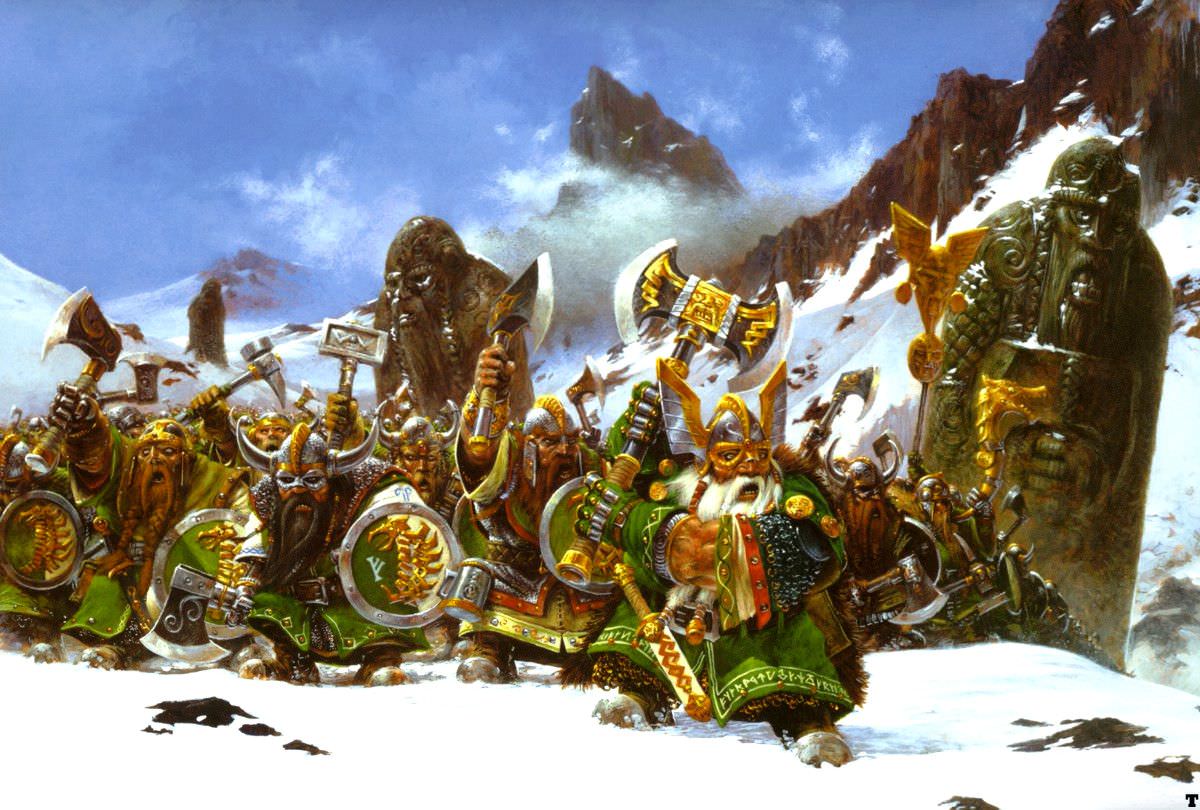


Rangers
Rangers are the long ranged eyes and ears of most Dwarf settlements. They patrol far from the safety of the hold, often spending long periods out in the wilderness, keeping watch on the Dwarfs’ many enemies and tracking dangerous beasts. It is they who explore hidden valleys, push through collapsed sections of the Underway and scale the cliffsides in search of new pathways. Rangers will hunt down and dispose of lone monsters or ambush small mobs of Goblins, but when they confront larger creatures or enemy armies on the march, the Rangers send signals to the nearest outposts to alert them of the encroaching danger.
While all holds are thankful for such services, that doesn't mean the Rangers are well respected. Rangers are a wandering lot, often moving between holds. After months surviving in the wilderness, far off the beaten track, they are, at best, weather beaten and travel worn. Most consider them to be outcast clans, desperate to earn their way back into a hold. Sometimes this is the case, but just as often, the Rangers turn out to be an independent minded breed of Dwarf, small groups from respectable clans that feel more at home on the mountainsides. Unlike most of their kin, they camp under the stars, moving from rough camp to camp. With such free spirits, it is no wonder that so many Dwarfs are mistrustful of Rangers, generally believing them to be a bit unhealthy from breathing so much open air and exposing themselves so often to the sun.
Durgrim Redmane, Hammerer:
"Something odd about a Dwarf who likes being up on the surface all day, hunting and such. In the olden days we wouldn't have gone above for more than an hour unless we had to. All that sun and air's bad for your health you know, and there's plenty of Ranger gone missing never to return. Course, some say they got sun touched and wandered off, others think the Trolls and Orcs got them. Who am I to say?"
To survive on the harsh mountain slopes without the security of a nearby hold to fall back to, Rangers have learned to be stealthy and to fight in a manner unique for Dwarfs. They are ambush hunters, experts at approaching the enemy from unexpected angles. Where possible, they will trigger avalanches, misdirect wayward foes over cliffs, or lead them into the teeth of an oncoming icestorm. Rangers are walking arsenals and carry a slew of different weapons: crossbows to skewer foes at long range, throwing axes for close ranged slaying while on the move, an axe for close combat and, for truly imposing foes, great axes. They have learned to keep bedrolls, pots, pans, and climbing gear secreted in camps hidden along their mountainous routes, yet still, they must carry all their provisions on their backs as well.
When dealing with large enemy forces, Rangers will first attempt to forewarn all Dwarfs in the invaders’ path and then they will trail the foe, picking off stragglers and waiting for an opportunity to wreak havoc. In this way, when the enemy finally confronts a Dwarf force, the Rangers will often be in position to outflank the foe, arriving behind their battle fines to destroy war machines, pincushion lone wizards, or launch an attack to otherwise help gain an advantage for the Dwarfs.
Many times, a Ranger’s greatest deeds go unwitnessed: acts of sabotage such as rolling gunpowder barrels downhill onto enemy camps, spiking the foe’s water supplies with intoxicating agents, or leading the wild beasts that haunt the mountain passes onto the enemy trail, allowing wild Manticores or hungry Wyverns to do some of their work for them. Still, no matter how many Night Goblin Fanatics they lure into rockpiles, many Dwarf clans will give them only cursory thanks and little respect.
Rangers are mysterious figures, and it is not surprising that many tales are told of their deeds. The most famous of their kind is the regiment known as Bugman’s Rangers, vengeance seekers who follow their brewmaster, turning up out of the wilds with grim tidings before lending a hand in the battle that is sure to follow. Others, too, have grown in status: the Redbeards that haunt the High Pass; the grim survivalists called Ulthar’s Raiders, known for the trail of Goblin heads they leave on stakes near Karak Eight Peaks; and the Frostbeard Clan, hardy Rangers who set clever traps to ensnare monsters on the slopes north of Karaz-a-Karak.
Bugman's Ranger (Ranger variant).
A Bugman's Ranger is a CR 3 (700 XP) creature with the stats of a dwarf ranger but with the following changes:
- It has the Bugman's Brew (1/Day) action option: The ranger drinks, as a bonus action, the famous healing ale, regaining immediately 1d12 hit points and 1d4 hit points at the start of its turn for the next 1d20 rounds. During the duration, the ranger makes ranged attack rolls and Dexterity saving throws with disadvantage, as it is considered drunk.
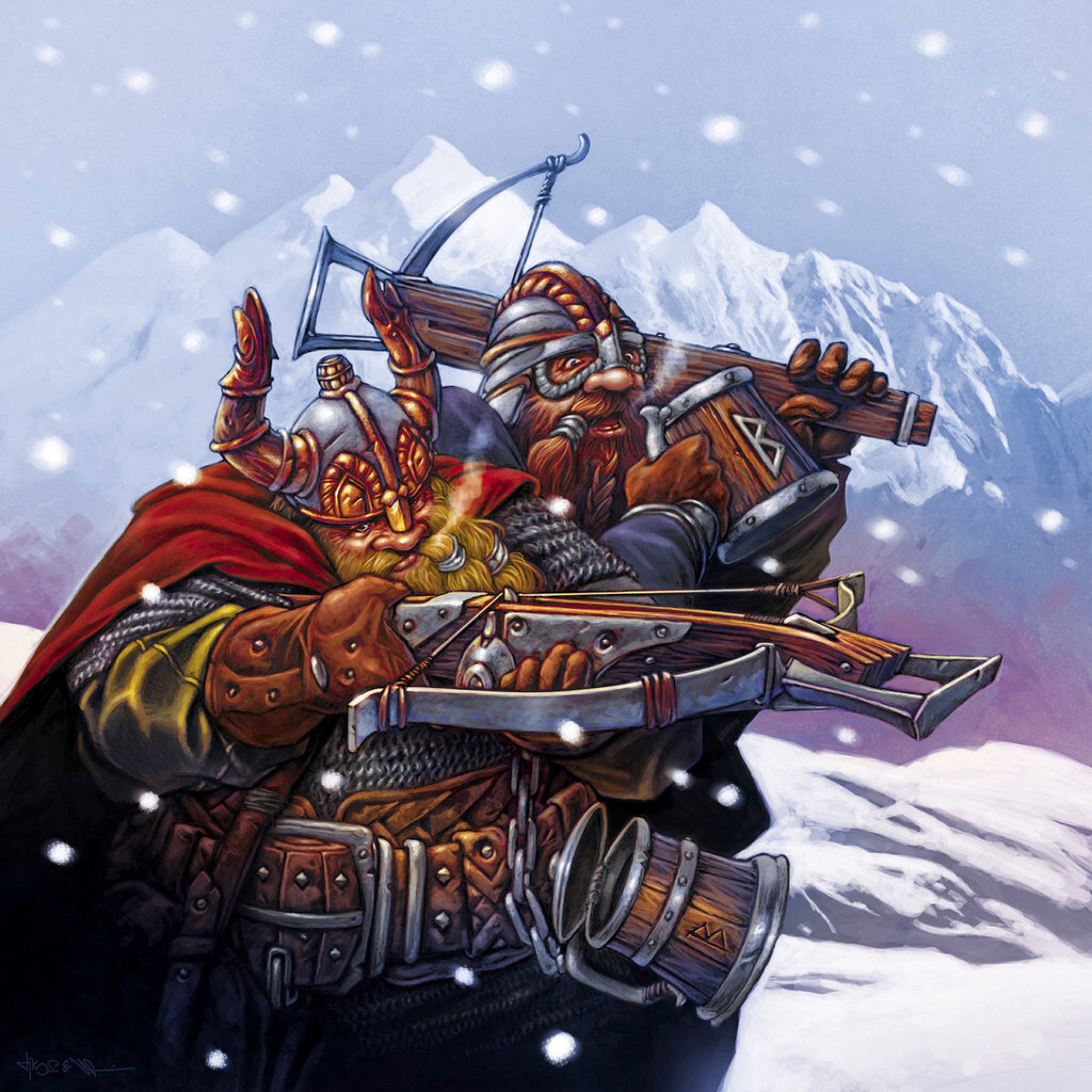


Ranger
Medium humanoid, lawful good
- Armor Class 17 (dwarfen scale mail)
- Hit Points 51 (6d8 + 24)
- Speed 9m.
STR DEX CON INT WIS CHA 15(+2) 14(+2) 16(+3) 10(+0) 16(+3) 8(-1)
- Saving Throws Dex +5, Con +6
- Skills Acrobatics +5, Athletics +5, Perception +9, Stealth +8, Survival +9
- Damage Resistances magic, poison
- Senses darkvision, passive Perception 19
- Languages Common, Khazalid
- Challenge 2 (450 XP)
Ambusher. The ranger has advantage on initiative rolls and, on its first turn during combat, it has advantage on attack rolls against creatures that have not yet acted. In addition any hit the ranger scores against a surprised creature is a critical hit
Dwarfen Toughness. Dwarfs are famous for their resilience. They have advantage on saving throws against poison, resistance against poison damage, and their hit point maximum is increased by an amount equal to their number of hit dice.
Evasion. If the ranger is subjected to an effect that allows it to make a Dexterity saving throw to take only half damage, the ranger instead takes no damage if it succeeds on the saving throw, and only half damage if it fails.
Magic Resistance. Dwarfs are highly inert to magic and cannot use it, with the exception of rune magic and runic objects. Because of that, they all have resistance against magical damage and advantage on saving throws against magic.
Sneak Attack (1/Turn). The ranger deals an extra 7 (2d6) damage when it hits a target with a weapon attack and has advantage on the attack roll, or when the target is within 1,5m of an ally of the ranger that isn't incapacitated and the ranger doesn't have disadvantage on the attack roll.
Actions
Multiattack. The ranger makes two attacks with its dwarfen crossbow or dwarfen greataxe.
Dwarfen Crossbow. Ranged Weapon Attack: +8 to hit, range 30/120m, one target. Hit: 8 (1d10+3) piercing damage.
Dwarfen Greataxe. Melee Weapon Attack: +6 to hit, reach 1,5m, one target. Hit: 9 (1d12 + 3) slashing damage.
Miners
Dwarf Miners are those irregular band of Dwarfs that answer the call to battle outfitted with tools of their trade, such as mining equipment, Pickaxe, Mattock, and boxes of lethal dynamite. Dwarfs have an insatiable thirst for gold, and their Miners construct deep shafts into the heart of the mountains in their quest to acquire the valuable metal. They also mine for ores and gemstones, and are very skilled at digging tunnels at incredible speed. The networks of mines and tunnels run through every mountain range. In battle, they use their knowledge of the tunnels and mastery of the heavy, two handed pickaxe with deadly intent.
They also have an instinct for the stone, knowing where best to dig and when to pause to shore up a section of tunnel. Collapses and other accidents are rare. The longer established a mine is, the more mechanical contrivances there will be. Steam powered engines, fixed in position, continually haul chains which tow wagons out of the depths. Some clans may even use a new fangled boring machine that some Engineer has invented. Great steam engines draw in fresh air or haul chains to tow wagonloads of rock out of the depths. Some Miners even take to war with a few of their gadgets, such as blasting charges or a steam drill to aid in tunneling under enemy battle lines quickly. But, however successful they are, they can never replace the skill and experience of a Dwarf Miner.
When Dwarfs march to war, many mining clans form regiments to join the battle. As a point of pride, they do not bear axes, but instead wield the same heavy two handed mining picks and mattocks they use to laboriously carve out tunnels. As it turns out, these well balanced and sturdily made tools work equally well whether digging into bedrock or hacking apart Goblins. Because tunneling in the deeps is dangerous work, Miners constantly wear heavy armor and helms. Down the ages, this mail has served to protect them against rockfall and cave-ins as well as turning aside such attacks as Elf arrows or rusty Skaven blades.
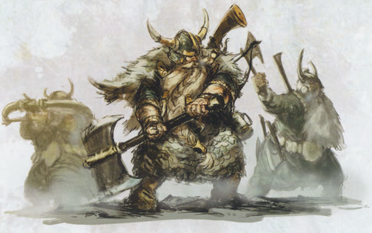
Miners have a wide knowledge of subterranean tunnels and, if there is not already an easily accessible underground route to an enemy's vulnerable flank or rear, the Miners will make one! Few enemies react calmly to the trudge of heavy boots behind them, and many a desperate battle has been won by Miners arriving in the nick of time from an unexpected quarter. Led by a Prospector, the most veteran member of the crew, Miners can wreak havoc on a foe’s battle plans.
Miners are extremely skilled in the art of using black powder to blast their way to mineral deposits, needless to say something this destructive can be useful in a tight spot during battles and sieges. Their Prospector can wield a steam drill instead, a piece of mining equipment that is also of use on the battlefield. A small steam engine, usually alcohol powered, is used to drive the hammer with such force that it can punch through rock, and armor, with ease.
Miner
Medium humanoid, lawful good
- Armor Class 14 (miner's gear)
- Hit Points 30 (4d8 + 12)
- Speed 7,5m.
STR DEX CON INT WIS CHA 15(+2) 10(+0) 14(+2) 10(+0) 14(+2) 8(-1)
- Damage Resistances magic, poison
- Senses darkvision, passive Perception 12
- Languages Common, Khazalid
- Challenge 1/2 (100 XP)
Tunneler. As an action the miner can start digging, gaining a 3m burrow speed. In addition the miner causes double damage to objects and structures.
Dwarfen Toughness. Dwarfs are famous for their resilience. They have advantage on saving throws against poison, resistance against poison damage, and their hit point maximum is increased by an amount equal to their number of hit dice.
Magic Resistance. Dwarfs are highly inert to magic and cannot use it, with the exception of rune magic and runic objects. Because of that, they all have resistance against magical damage and advantage on saving throws against magic.
Actions
Dwarfen Pickaxe. Melee Weapon Attack: +5 to hit, reach 1,5m, one target. Hit: 7 (1d8 + 3) piercing damage.
Blasting Charge (3 Ammunitions). The miner throws the blasting charge up to 12m away, causing it to explode upon impact. Each creature in a 3m radius must make a DC 12 Dexterity saving throw, taking 14 (4d6) fire damage on a failed save, or half as much damage on a successful one.
Prospector (Miner variant).
A Prospector is a CR 2 (450 XP) creature with the stats of a dwarf miner but with the following changes:
- It has 60 HP (8d8 + 24)
- It has the Steam Drill action option: Melee Weapon Attack: +6 to hit, reach 1,5m, one target. Hit: 17 (4d6 + 3) piercing damage. The miner can also use its drill to dig the ground gaining a 7,5m burrow speed.
- The Steam Drill has the following weapon properties: heat(5), heavy, misfire(2),
two-handed.
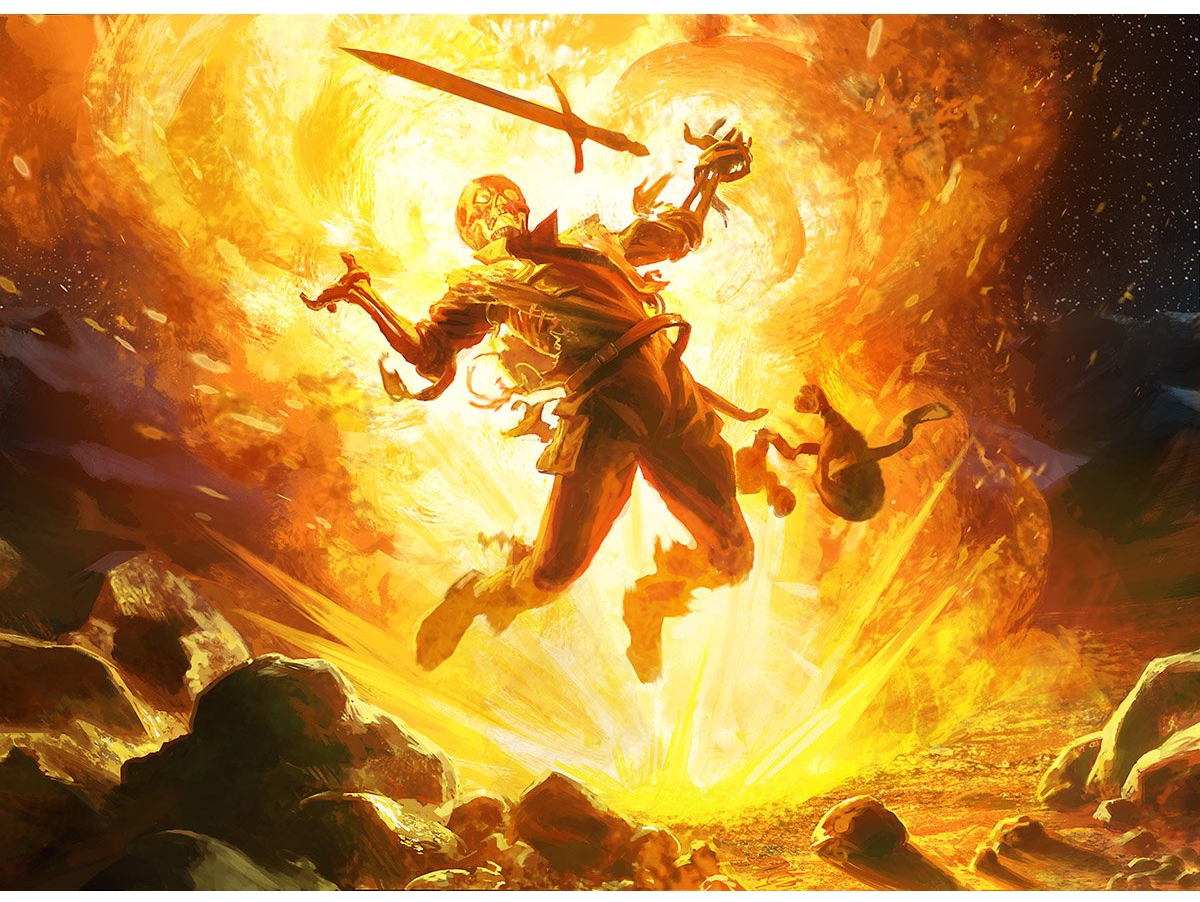



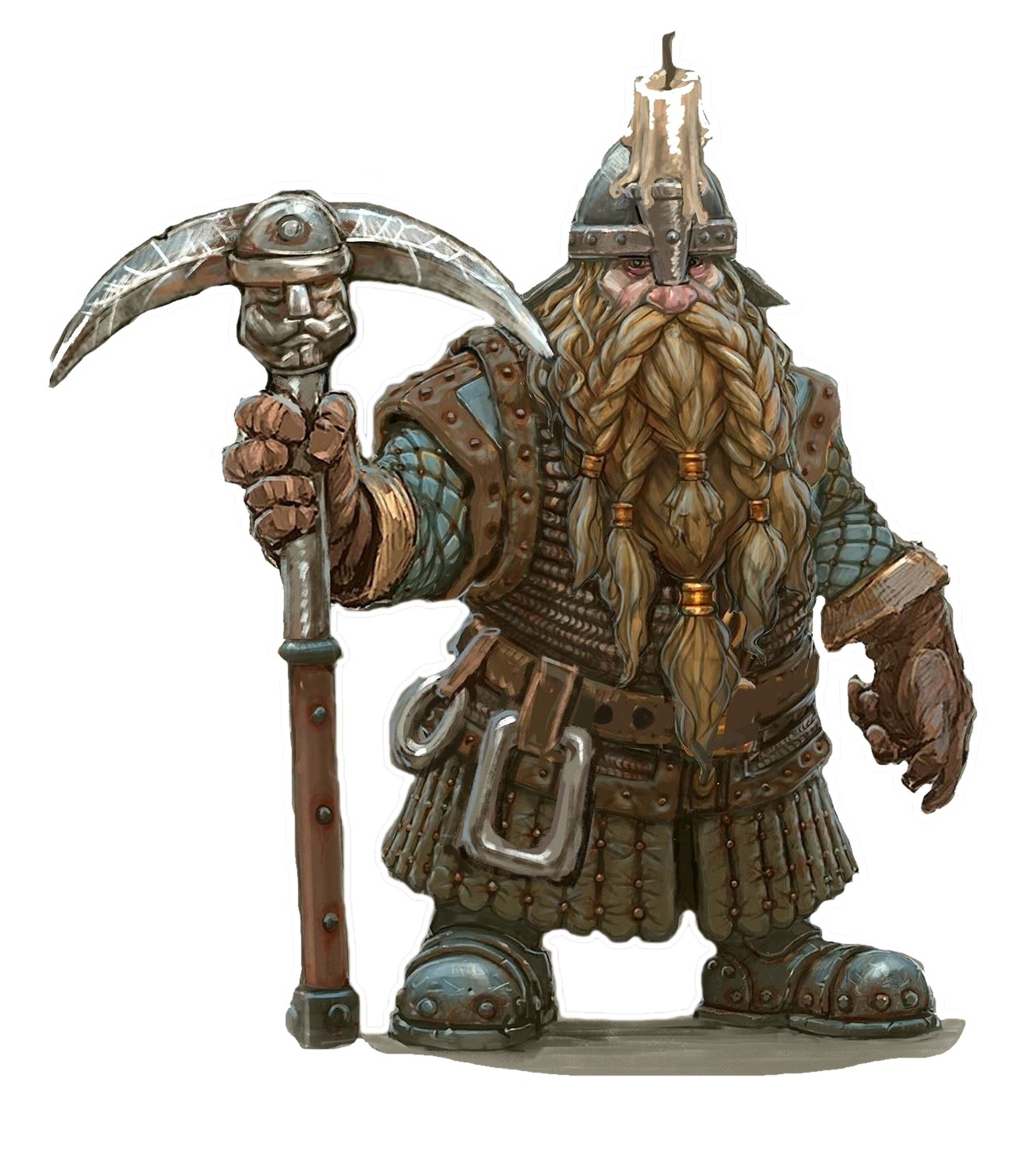
Ironbreakers
Dwarf Ironbreakers are amongst the most heavily armored warriors fielded by the armies of the Dwarfs. Clad from head to toe with full suits of magnificent Gromril armor and Rune weapons, these warriors are considered by many to be the elite of the elite. Many Dwarf strongholds have deep tunnels which the Dwarfs have long since abandoned. These tunnels have become home to all kinds of monsters such as Night Goblins, Skaven, Trolls and even more sinister horrors.
Where old and abandoned workings join the inhabited levels the Dwarfs have docked passages and built gates, but even so they must be constantly on the lookout for intrusion from below. The Ironbreakers guard these old passages and protect the stronghold from attack. They spend much of their time below ground in the deepest, least visited parts of the stronghold. Because of the extreme danger of their duties they wear heavy gromril armor engraved with runes.
Most of Karaz Ankor lies beneath the surface of the world, from the towering vaults and labyrinthine galleries of the holds to the endless tunnels of the Underway. Adjoining these are the shafts of countless mines, sunk deep in the bottomless dark. Many of these passages have been infiltrated, penetrated by the gnaw tunnels of Skaven, or the mushroom filled holes of the Night Goblins. The blackness of the underworld is also home to other monsters, crawling horrors and slinking beasts unknown to surface dwellers. The Dwarfs barricade intrusive passageways and build gates to block incursions from below, but even so, constant vigilance is needed. To safeguard the deepest and most dangerous passages, the Dwarfs call upon the Ironbreakers.
All manner of fell creatures lurk below and the Ironbreakers guard the deep abandoned tunnels from those that would otherwise invade the hold. They spend much of their time below ground in the deepest, least visited parts of the stronghold. In these dark places, ambush and rockfall are commonplace hazards and survival is often dependent on wearing the right armor. Accordingly, Ironbreakers wear fine suits of gromril armor, crafted by the smiths of the hold and worn as a badge of honor by this select band of warriors.
They stand resolute, barring danger from advancing beyond their post. It is an honor to be selected to join the Ironbreakers, for they are trusted to protect the hold’s most vulnerable entrances. Only the strongest and bravest are accepted into their ranks, but the dark offers no vainglory, and those warriors who choose a path of greater ambition must seek out the Hammerers. To serve as an Ironbreaker, a Dwarf must take vows to stand bold, even if no king, Lord or Thane is near. Behind and above him are the beardlings, treasure troves, ancestral tombs, and the very halls that the forefathers of his race carved out of rock in ages past. Before and below an Ironbreaker will be only the dark, the all consuming blackness that hungers to grasp everything into its clutches.
Ironbreakers are trained to fight in tight formations, wedged into the confines of narrow tunnels. There, they find defensible positions and let the enemy break upon their overlapping shields as waves crash into rock. Impervious, implacable and unmoving, they form a living line, gromril hard, that holds back the flood of terror that lurks in the dark below. Enemies fall before their axes like winter wheat before the scythe and blows clang harmlessly off their nigh impervious armor or are caught and deflected by their sturdy shields. Each regiment of Ironbreakers will have a veteran, a grizzled unit leader known as an Ironbeard, who knows the undertunnels like the back of his hand. It is an Ironbeard’s duty to maneuver the unit into a favorable position and to call out the battle formations, such as the box of iron, the steel square, and so on.
Such is the reputation of the Ironbreakers that they will often be called upon to fight on the surface when the full might of a throng is mustered, but for each battle in sunlight, an Ironbreaker will have fought a dozen in the dark deeps beneath the mountains. Some Ironbreakers can carry cinderblast bombs, small grenades thrown by hand, whose shrapnel is especially deadly in close confines.
Durgrim Redmane, Hammerer:
"Down in the mines, that can be dangerous work. Not as dangerous as it used to be, mind, but then that's why our ancestors formed the Ironbreakers. Head to foot in the best gromril armor, it'd be a brave Goblin, Troll or ratman who faces an Ironbreaker and doesn't turn tail. And even if the roof caved in, not that a good proper Dwarf roof would do that, but them Goblin tunnels is shoddy work, nine times out of ten he'd climb out again, dust himself down and get back to the fight, not like you young whelps..."
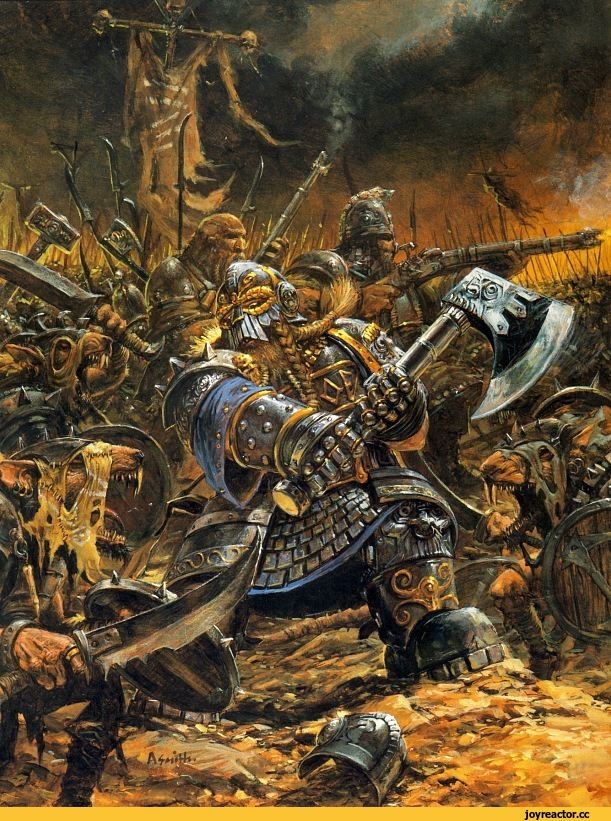


Ironbreaker
Medium humanoid, lawful good
- Armor Class 23 (gromril shield, gromril plates)
- Hit Points 105 (10d8 + 60)
- Speed 7,5m.
STR DEX CON INT WIS CHA 18(+4) 12(+1) 20(+5) 10(+0) 14(+2) 8(-1)
- Saving Throws Str +8, Con +9
- Skills Athletics +8, Perception +6
- Damage Resistances magic, poison
- Senses darkvision, passive Perception 16
- Languages Common, Khazalid
- Challenge 7 (2900 XP)
Dwarfen Toughness. Dwarfs are famous for their resilience. They have advantage on saving throws against poison, resistance against poison damage, and their hit point maximum is increased by an amount equal to their number of hit dice.
Iron Box. Four or more ironbreakers, fighting together back to back in a square, can form a shield box. While in this formation each warrior has advantage on Athletics checks and Strength saving throws, an AC of 25 and is considered behind three-quarters cover for ranged attacks.
Magic Resistance. Dwarfs are highly inert to magic and cannot use it, with the exception of rune magic and runic objects. Because of that, they all have resistance against magical damage and advantage on saving throws against magic.
Actions
Multiattack. The ironbreaker makes two attacks with its runic battleaxe or grudge raker.
Runic Battleaxe. Melee Weapon Attack: +10 to hit, reach 1,5m, one target. Hit: 10 (1d8 + 6) slashing damage plus 5 (1d10) force damage.
Grudge Raker. Ranged Weapon Attack: +7 to hit, range 9/30m, one target. Hit: 10 (2d8+1) piercing damage. Misfire(1), Scatter (1d8)
Cinderblast Bomb (3 Ammunitions). The ironbreaker throws the grenade up to 21m away, causing it to explode 1d4 rounds later. Each creature in a 9m radius must make a DC 15 Dexterity saving throw, taking 18 (5d6) piercing damage on a failed save, or half as much damage on a successful one.
Tunnel Fighter. The ironbreaker excels at defending narrow passages, doorways, and other tight spaces. As a bonus action, it can enter a defensive stance that lasts until the start of its next turn. While in this defensive stance, the ironbreaker can make opportunity attacks without using its reaction, and it can use its reaction to make a melee attack against a creature that moves more than 1,5m while within its reach.
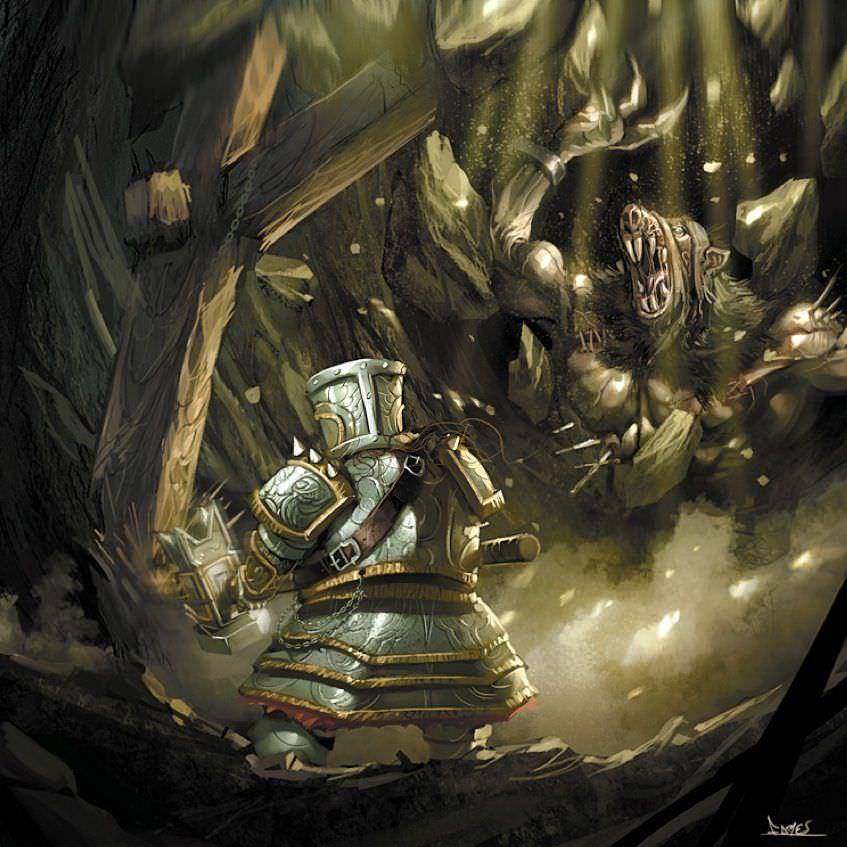


Hammerers
Dwarf Hammerers forms a Dwarf King's personal bodyguard, chosen by the King himself. They are individuals from different units, and perhaps even clans, who have proven themselves in uncountable battles, showing not just great strength and deadly martial prowess, but also steadfast loyalty and a bold and courageous nature. They are formed into a hard hitting shock unit, a force capable of breaking enemy formations the way a heavy warhammer crushes shale.
In addition to being a formidable fighting unit, the Hammerers are often used as a Thane or Lord’s personal bodyguard. Duty to a liege is a sacred thing to Dwarfs. An individual bound by oath to his Lord will fight all the harder, and for the leader of the throng, a Hammerer will gladly give his life rather than face the dishonor of failure. A king surrounded by his Hammerers is the keep in the center of the throng: grim and unyielding, a living personification of the indomitable Dwarf spirit. Of course, the allegiance goes both ways, and it is a Lord’s duty to properly equip these hand picked units and to seal the oath between them.
Durgrim Redmane, Dwarf Hammerer:
"Course, if I weren't a Hammerer, I'd be with the Longbeards these days. When you've got proper beards you might understand what a bit of gnollengrom means, what it's like to respect a Dwarf for the fullness of his beard. This beard here says I'm old, and that means I knows best, and you knows that too, so that's why you're going listen to my advice, then you can grow up to be proper Dwarfs and pass on your advice to the next generation. Remember, a Dwarf's only as big as his beard."
The symbol of the bond between a Lord and his Hammerers is the weapons they carry. Each is given a heavy, but perfectly balanced, great hammer, which is often made of gromril. Outfitted in heavy, well polished Dwarf mail, Hammerers wade into combat wielding their great weapons. They swing their hammers in sweeping arcs, hitting their enemies with such vigor that only enchanted or hell forged armor can withstand the force of their blows. With a cracking and crumpling, the whirling hammerheads send up gory debris, as splintered shields, cracked bits of armor and even heads or limbs are thrown into the air by the sheer force of the impact. Dwarf battle lines have been known to cheer at the sight of the great hammers rising and falling around their king’s banner, beating out a rhythmic noise that is not unlike the deep booming industrial sounds made by the vast drop hammers found in the larger Dwarf forges.
As the most elite warriors, Hammerers enjoy a high status within their hold. When not personally shielding their Thane or king, they are tasked with guarding key elements, such as the throne room or front gate. Larger strongholds will have many regiments of Hammerers, and these often become known by the name of what or whom they guard, such as the Peak Gate Guard of Karak Norn or the Drakebeard Guard, the Hammerers assigned to guard Thane Ull Hammerhand of the Drakebeard clan in Karak Kadrin.
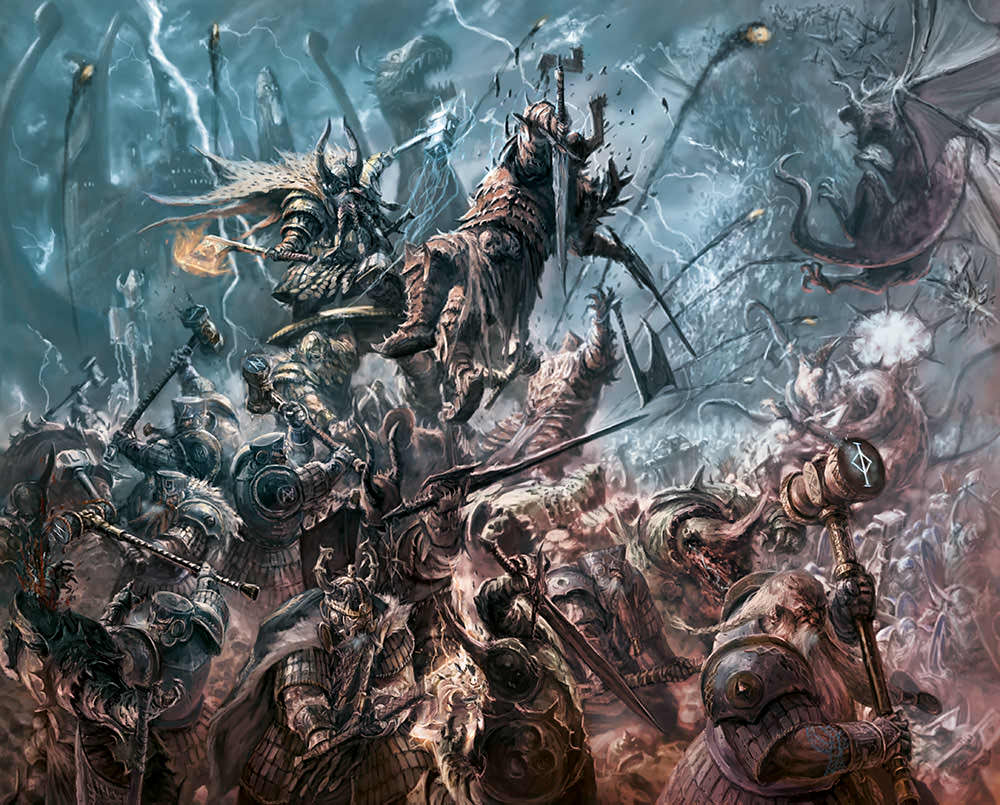

Hammerer
Medium humanoid, lawful good
- Armor Class 20 (gromril plates)
- Hit Points 76 (8d8 + 40)
- Speed 7,5m.
STR DEX CON INT WIS CHA 20(+5) 10(+0) 18(+4) 10(+0) 14(+2) 12(+1)
- Saving Throws Str +9, Con +8
- Skills Athletics +9
- Damage Resistances magic, poison
- Senses darkvision, passive Perception 12
- Languages Common, Khazalid
- Challenge 7 (2900 XP)
Bodyguard. Two or more hammerers, fighting together around their lord to defend it, can form a defensive formation. The attacks against the protected creature have disadvantage until there will be at least two hammerers in a 3m radius around it.
Dwarfen Toughness. Dwarfs are famous for their resilience. They have advantage on saving throws against poison, resistance against poison damage, and their hit point maximum is increased by an amount equal to their number of hit dice.
Mighty Charger. If the hammerer moves at least 6m toward a target and then hits it with an attack on the same turn, the target takes an extra 7 (2d6) bludgeoning damage. If the target is a creature, it must succeed on a DC 15 Strength saving throw or be pushed up to 6m and knocked prone.
Magic Resistance. Dwarfs are highly inert to magic and cannot use it, with the exception of rune magic and runic objects. Because of that, they all have resistance against magical damage and advantage on saving throws against magic.
Actions
Multiattack. The hammerer makes three attacks with its runic maul.
Runic Maul. Melee Weapon Attack: +11 to hit, reach 1,5m, one target. Hit: 14 (2d6 + 7) bludgeoning damage plus 5 (1d10) force damage. If the target is a creature, it must succeed on a DC 15 Strength saving throw or be knocked prone.
Slayers
A Dwarf Slayer is the ultimate warrior, the perfect personification of death and destruction, and bringer of doom to the enemies of the Dwarf race. Slayers are the strangest and most deadly of all Dwarf warriors. They are outlandish doom seekers, individuals who have wholly dedicated the entire fiber of their being to the hardest and most destructive life of battle that they can possibly find. Dwarfs are a proud people, and none of them cope well with failure or personal tragedy no matter how small. The loss of a single family member or a hoard of treasures is inconsolable to a Dwarf, a fate that can seriously unhinge their obsessive minds. Eventually these burdens become far to heavy to bear, and a Dwarf would eventually snap, making him forswear the fellowship and comforts of family, clan, and hold, opting instead for a life of self imposed exile. Having broken ties with everything they once held dear, these Dwarfs leave behind all possessions save for their own axes.
To become a Slayer is to become an engine of mass destruction, a warrior that seeks nothing more in life than an honorable and glorious death that shall expunge the shame that has pushed him upon this path, and to be remembered in the saga's of his people for all time. To first become a Slayer, the Dwarf must make a pilgrimage towards the holy Shrine of Grimnir located within the treacherous peaks of Karak Kadrin, also known as Slayers Keep. There the Dwarf would ritually shave his head save for a solitary crest, a fearsome plume which they dye bright orange and stiffen with pig grease. The larger the crest, the deadlier the Dwarf. After the ritual, the Dwarf would cut a name upon a pillar, where the names of many other Slayers have been carved over the millennium. With his pilgrimage finished, the Dwarf would march upon the treacherous wilderness and deliberately seek out mighty battles towards fearsome foes and against overwhelming odds.
The life of a Slayer is a solitary existence of battle after battle. Most Slayers would die upon their first or second battle against their enemies, but those that survive these battles are considered the unlucky ones. Whether by their sheer martial skills, toughness or determination, these Dwarfs, though unsuccessful in their quest, have inadvertently been molded into a magnificent warriors. This natural selection weeds out all but the most exceptional of their kind, meaning that any Slayer met is most likely psychopathically dangerous. As a Slayer continues to carve a massive toll of beast upon his axe, they often take the names of the beast they slay. Such names includes becoming a Trollslayer, or a Giantslayer. The greatest of these already formidable warriors are the infamous Daemonslayers or Dragonslayers, warriors who have managed to survive the encounter with two of the most ferocious creatures to ever live, slaying it and surviving to tell the tale.
In times of war, Slayers would often arrive from the wilderness to join a Dwarf throng into battle, lending their considerable combat skills in an effort to further the Dwarf cause. Many desperate wars have been won by the ferocity and sheer determination of these Slayers. Even when bloodied and battered after battle's end, they will pause only long enough to slake their thirst before beginning their death quest anew. Probably the greatest Slayer to have ever lived is Gotrek Gurnisson, bearer of the legendary Axe of Grimnir and a Slayer that has killed the greatest number of enemies known in Dwarf history.
Gotrek Gurnisson, swearing upon the Oath of the Slayer:
"I am a Dwarf! My honor is my life and without it I am nothing. I shall become a Slayer. I shall seek redemption in the eyes of my ancestors. I shall become as death to my enemies, until I face he that takes my life and my shame."
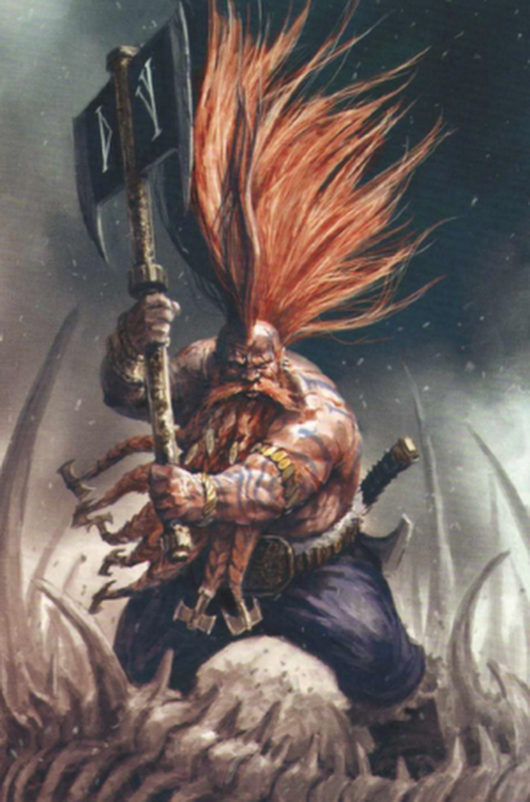


Slayer
Medium humanoid, lawful good
- Armor Class 13
- Hit Points 68 (8d8 + 32)
- Speed 9m.
STR DEX CON INT WIS CHA 18(+4) 16(+3) 17(+3) 10(+0) 14(+2) 15(+2)
- Saving Throws Str +8, Dex +7, Con +7
- Skills Acrobatics +7, Athletics +8, Intimidation +6
- Damage Resistances magic, poison
- Senses darkvision, passive Perception 12
- Languages Common, Khazalid
- Challenge 5 (1800 XP)
Dwarfen Toughness. Dwarfs are famous for their resilience. They have advantage on saving throws against poison, resistance against poison damage, and their hit point maximum is increased by an amount equal to their number of hit dice.
Magic Resistance. Dwarfs are highly inert to magic and cannot use it, with the exception of rune magic and runic objects. Because of that, they all have resistance against magical damage and advantage on saving throws against magic.
Monster Slayer. The slayer deals an additional 1d8 of damage for every weapon attack, and has advantage on attack rolls, against Large or bigger sized creatures.
Slayer's Frenzy. As a bonus action, the slayer can enter a rage at the start of its turn. The rage lasts for 1 minute or until the slayer is incapacitated. While raging, it gains the following benefits:
Advantage on Strength checks and saving throws.
+2 bonus to damage rolls with melee weapon attacks.
Resistance to bludgeoning, piercing and slashing damage.
Actions
Multiattack. The slayer makes four attacks with its dwarfen battleaxes.
Dwarfen Battleaxe. Melee Weapon Attack: +10 to hit, reach 1,5m, one target. Hit: 9 (1d8 + 5) slashing damage.
Leap (Recharge 5-6). The slayer leaps in the air up to 6m and can attempt to ride a large, or bigger, creature with a successful Dexterity (Acrobatics) check against the creature's AC. When ridden, the creature has disadvantage on attack rolls against the slayer, and can try to buck it off with a grappling check.
Reactions
Parry. The slayer adds 4 to its AC against one attack that would hit it. To do so, the slayer must see the attacker and be wielding a melee weapon.
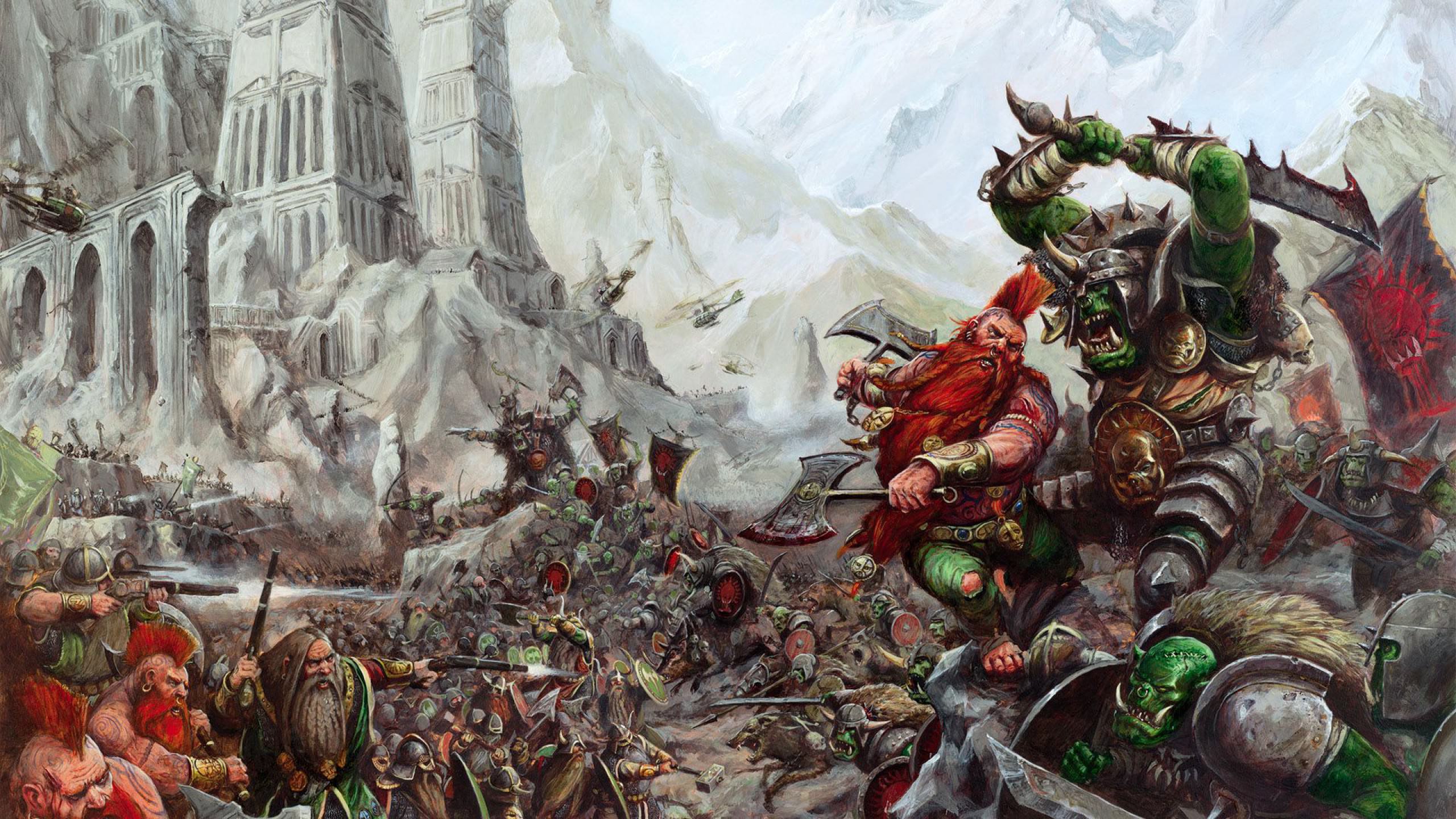

Irondrakes
Dwarf Irondrakes are those Dwarfs within an Ironbreaker regiment whom are trained in the use of the the deadly fire spewing Drakegun, a powerful technological weapon that showers enemy units with a wave of white hot alchemic fire. The creation of the Drakegun came about when the bitter underground wars that the Dwarfs fought daily have begun to evolve into a new level of intensity, as their enemies began to discover diabolical ways to break a stronghold's already formidable defenses. However, the Dwarfs' stout defiance and powerful rune weapons and armor have turned back the dark tide time and again. Beaten yet unbroken, their enemies have adapted, and in response to the heavily armored Ironbreakers, the Skaven have deployed teams of Warpfire Throwers or Globadiers as a countermeasure, whilst the Night Goblins send in mobs of Fanatics or Trolls to punch a hole in their lines. For the Dwarfs, this war of attrition is costing far too many lives to continue.
In response, the Dwarf Engineers of Zhufbar invented new weapons that can deter these countermeasures with blazing efficiency. The Drakegun was one such invention, a weapon so powerful that once it is fired, the entire tunnelway will be lit with alchemic fire that will burn for many hours afterwards. Such a weapon allowed the Ironbreakers to cut off key positions within the tunnels beneath a Hold from a much more superior threat such as an onrushing charge of enraged Mangler Squigs or a whole battalion of heavily armored Stormvermin.
Ironbreakers who showed an aptitude with the Drakegun were further trained and formed into new units. When first used, even the Gromril armor of the Ironbreakers struggled to protect the user against the intense heat generated by the weapon. In response, Runesmiths have begun to imbue new armored suits with Runes of Protection against extreme heat, enabling these Ironbreakers to endure the heat of their own weapons and those Warpfire Throwers sent by the Skavens.
In combat, when confronted by a foe capable of breaking through a wall of Ironbreakers, a new fighting tactic has been developed. Ironbreakers would open ranks to allow the Irondrakes to file past. With well drilled precision and the barking orders of an Ironwarden, the darkness of the tunnels is soon illuminated by molten fire blasts. The stalwart Dwarfs blaze away as attackers fall by the dozens, their crumpled bodies still smoking with fist sized holes burning through their flesh. The Irondrakes have proven so effective that their services are pressed into action wherever a throng may fight.
Irondrake (Trollhammer Torpedo variant).
An Irondrake equipped with torpedoes has the Drakegun (Trollhammer Torpedo) (4 Ammunition) action option: Ranged Weapon Attack: +7 to hit, range 18/45m, one target. Hit: 14 (4d6) fire damage plus 14 (4d6) thunder damage. Bulky, Loading, Misfire(2), Scatter(4d6).
Irondrake
Medium humanoid, lawful good
- Armor Class 22 (irondrake's plates)
- Hit Points 105 (10d8 + 60)
- Speed 7,5m.
STR DEX CON INT WIS CHA 18(+4) 12(+1) 20(+5) 10(+0) 14(+2) 8(-1)
- Saving Throws Str +8, Con +9
- Skills Athletics +8, Perception +6
- Damage Resistances fire, magic, poison
- Senses darkvision, passive Perception 16
- Languages Common, Khazalid
- Challenge 7 (2900 XP)
Dwarfen Toughness. Dwarfs are famous for their resilience. They have advantage on saving throws against poison, resistance against poison damage, and their hit point maximum is increased by an amount equal to their number of hit dice.
Hot Body. The air around the irondrake is filled with intense heat. Creatures in a 1,5m radius around it suffer 1d6 fire damage at the start of their turn for every 10 heat points the irondrake's weapon has.
Magic Resistance. Dwarfs are highly inert to magic and cannot use it, with the exception of rune magic and runic objects. Because of that, they all have resistance against magical damage and advantage on saving throws against magic.
Actions
Multiattack. The irondrake makes two attacks with its runic battleaxe or drakefire pistols.
Runic Battleaxe. Melee Weapon Attack: +10 to hit, reach 1,5m, one target. Hit: 10 (1d8 + 6) slashing damage plus 5 (1d10) force damage.
Drakefire Pistols. Ranged Weapon Attack: +7 to hit, range 12/36m, one target. Hit: 6 (1d10+1) fire damage. Heat(5), Misfire(2)
Drakegun. The irondrake shoots a solution of alchemical fire in a 12m long and 3m wide line. Each creature in the area of effect must make a Dexterity saving throw, taking 9 (2d8) fire damage on a failed save, or half as much damage on a successful one. When releasing this attack the wielder still has to roll a d20 for a chance of misfire. Heat(10), Bulky, Misfire(2)
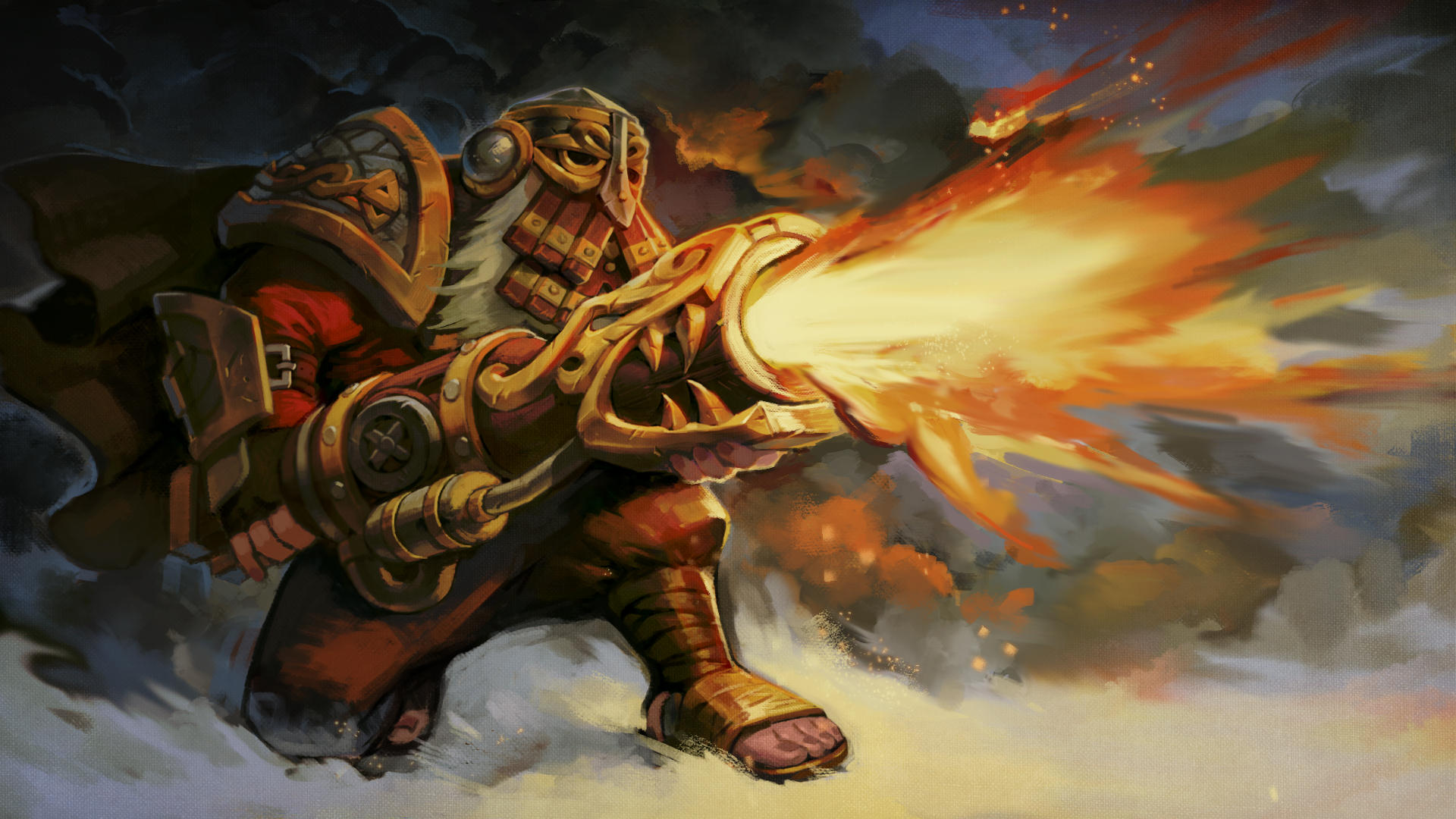


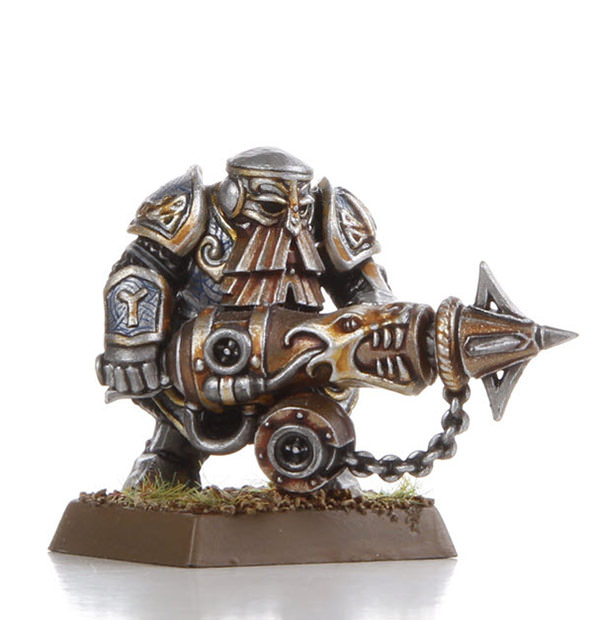
Dwarf Engineers
Dwarf Engineers are those highly schooled members of the illustrious Engineers Guild, whom are known throughout the world as unparalleled masters of science, gadgets, and technology. If a Dwarf shows a particular aptitude towards machinery, he may be granted an apprenticeship within the Engineers Guild, whose duty is to provide the Dwarf Holds access with the latest of a long line of technological advancements. Most Engineers spend much of their time repairing broken components and cursing the shoddy work of the Engineer who first constructed it. They are also responsible for the creation of blueprints or schematics for new potential technology. If the Guild thinks a concept is worthy enough, the Guild will fund the Dwarf with all the equipment, materials and help needed. Most inventions never quite take off, but others, such as the legendary Gyrocopter, quite literally did.
When these Dwarfs are called to war, they often employ their services towards a Dwarf Throng as expert artilleryman, whose main duty is to administrate the well being of the army's machinery and cannons during combat. On a few occasions, these Dwarfs have also been called into service as pilots for Gyrocopter squadrons, for only an Engineer has the knowledge and experience to properly control these machines when taking off. Should these Dwarfs be pressed into the front lines, Engineers often carry with them an assortment of gadgets and black powder weaponry that has the potential to devastate an enemy regiment wholesale. They employ their expertise to great effect in combat, shooting blunderbusses, throwing grenades at the enemy and even calling down artillery bombardments whenever it is needed. In melee, they employ even more explosives or pummel their foes into submission using their engineering spanners and other assorted tools.
Dwarf Engineer
Medium humanoid, lawful good
- Armor Class 16 (pilot suit)
- Hit Points 113 (15d8 + 45)
- Speed 7,5m.
STR DEX CON INT WIS CHA 14(+2) 18(+4) 15(+2) 20(+5) 16(+3) 10(+0)
- Saving Throws Con +7, Int +10
- Skills History +10, Investigation +10
- Damage Resistances fire, magic, poison
- Senses darkvision, passive Perception 16
- Languages Common, Khazalid
- Challenge 9 (5000 XP)
Dwarfen Toughness. Dwarfs are famous for their resilience. They have advantage on saving throws against poison, resistance against poison damage, and their hit point maximum is increased by an amount equal to their number of hit dice.
Magic Resistance. Dwarfs are highly inert to magic and cannot use it, with the exception of rune magic and runic objects. Because of that, they all have resistance against magical damage and advantage on saving throws against magic.
Trump Card. The engineer has always some gadget up its sleeve. Its spellcasting ability is Intelligence (spell save DC 18, +10 to hit with spell attacks). The engineer knows the following spells:
- Cantrips (at will): feather fall, fog cloud, jump, knock, light, mending, phantom grapnel, shocking grasp, web.
Actions
Multiattack. The engineer makes two attacks with its mechanic maul or sniper grudge raker.
Mechanic Maul. Melee Weapon Attack: +8 to hit, reach 1,5m, one target. Hit: 12 (2d8 + 3) bludgeoning damage.
Sniper Grudge Raker. Ranged Weapon Attack: +11 to hit, range 30/90m, one target. Hit: 13 (2d8+4) piercing damage. Misfire(1), Scatter (2d6)
Artillery Volley (Recharge 6). The engineer throws a flare up to 30m, calling for a bombardment from the nearby artillery positions or gyrobomber squadrons. The explosion occurs after 1d3 rounds at the end of the enginner's turn and is centered on the flare. Each creature in the area of effect must make a Dexterity saving throw, becoming blinded and deafened for 1 minute, and taking full damage on a failed save, or half as much damage on a successful one.
Artillery: r=30m, 10d6 fire damage plus 10d6 thunder damage;
Gyrobombers: 6m wide and 30m long line, 10d6 fire damage.
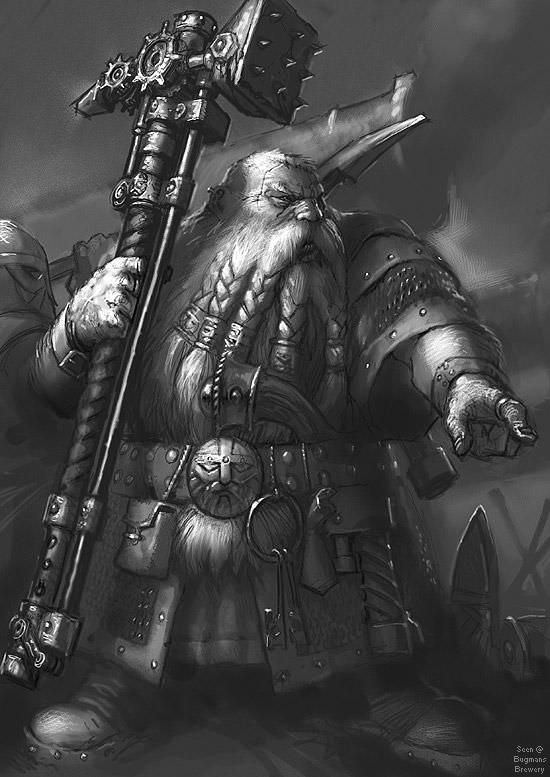


Dwarf Cannon
Large object
- Armor Class: 20 (Dwarfen Steel)
- Hit Points: 100
- Damage Immunities: poison, psychic
Dwarf Cannons are the most common artillery pieces used by all the armies of the Dwarfs. The first prototype Cannons were first invented by Dwarf Engineers within the workshops of Zhufbar, although now many of the larger strongholds have the know how to make their own. One of the most potent of war machines, a Dwarf Cannon can shatter the most heavily armored foe, rain barrages into massed enemy formations and topple the largest of monsters with great accuracy. Though these cannons are noticeably smaller than their human counterparts, they are nonetheless just as deadly and far more accurate. They are, however, somewhat temperamental devices, and even the best forged cannons in the world, such as those made by the Dwarfs, are subject to occasional malfunction on the battlefield. These malfunctions, such as the slightest crack or premature ignition of black powder, can result in devastating accidents.
Cannon Ball. Ranged Weapon Attack: +10 to hit, range 180/720m, one target. Hit: 44 (8d10) bludgeoning damage. Misfire (1), Scatter (4d10).
Flame Cannon
Large object
- Armor Class: 22 (runic gromril)
- Hit Points: 125
- Damage Immunities: fire, poison, psychic
Dwarf Flame Cannons are massive fire spewing war machines that have since put fear into the hearts of the enemy. A volatile concoction of hot oil and molten tar is mixed within the Flame Cannon before air is pumped into the barrel; soon the pressure inside is tremendous and the barrel is almost ready to burst. At precisely the right moment, the Dwarfs place a burning oily wad into the nozzle and release the pressure. The mixture catches fire as it whooshes from the barrel in a leaping spurt.
The burning oil arcs into the air towards the enemy ranks and, with a bit of luck, lands in the middle of the foe, spraying boiling tar over them. For longer ranged shots, the Dwarfs simply apply more pressure, and the most experienced crew know exactly when to release the straining valves to achieve maximum distance. Those crew who misjudge this subtle balance rarely get another chance. Enemies struck by Flame Cannons have their flesh melted off them in a slough, leaving only scorched bones and a foul smelling liquid that is best described as "goo". Even the bravest of those who survive, after seeing their comrades so gruesomely reduced, have been known to flee immediately.
Flame Blast. Ranged Weapon Attack: +6 to hit, range 100/300m, one target. Hit: 55 (10d10) fire damage and all creatures within a 6m radius sphere centered on the target must make a DC 15 Dexterity saving throw, taking 36 (8d8) fire damage on a failed save, or half as much damage on a successful one. Misfire (2).
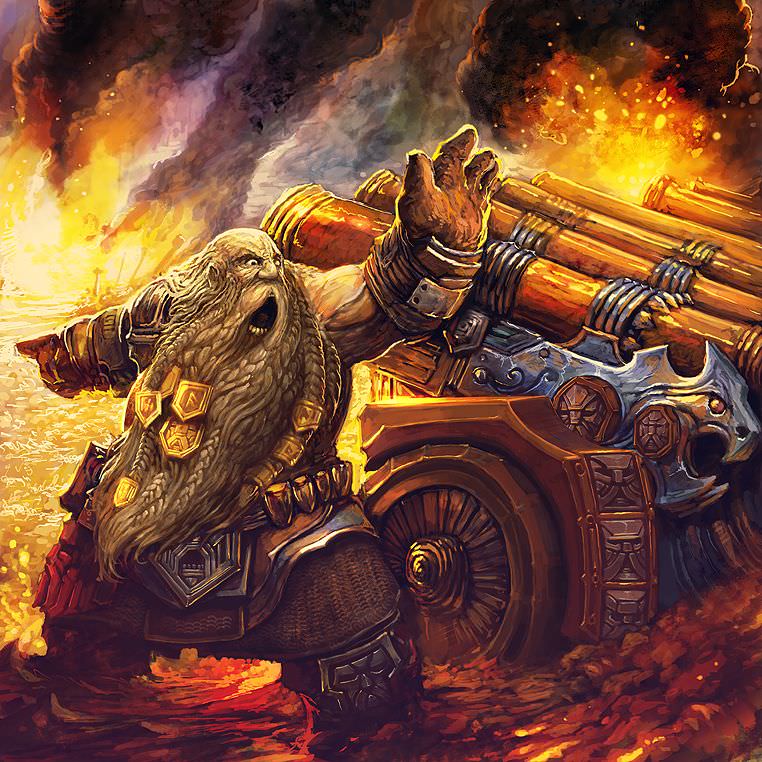


Organ Gun
Large object
- Armor Class: 20 (Dwarfen Steel)
- Hit Points: 100
- Damage Immunities: poison, psychic
The Dwarf Organ Gun, or Organ Cannon as some call it, is a strange yet infamous artillery piece created by the Engineers Guild and used extensively by the Dwarfs for its ability to shoot cannon balls at a far greater rate of fire than a typical Dwarf Cannon. Its name derives from the pipes of a musical organ instrument, which the array of barrels resembles.
Typically, the Organ Cannon's barrel are smaller and lighter than the ones used in standard cannonry, meaning it lacks the range and firepower of conventional artillery. However, the Organ Gun makes up for this disadvantage by being able to fire multiple shots at the enemy, able to literally tear apart an entire regiment of soldiers should the crew get within adequate range of the enemy.
Multishot. The organ gun fires four cannon balls.
Cannon Ball. Ranged Weapon Attack: +6 to hit, range 120/450m, one target. Hit: 28 (5d10) bludgeoning damage. Misfire (1), Scatter (3d10).
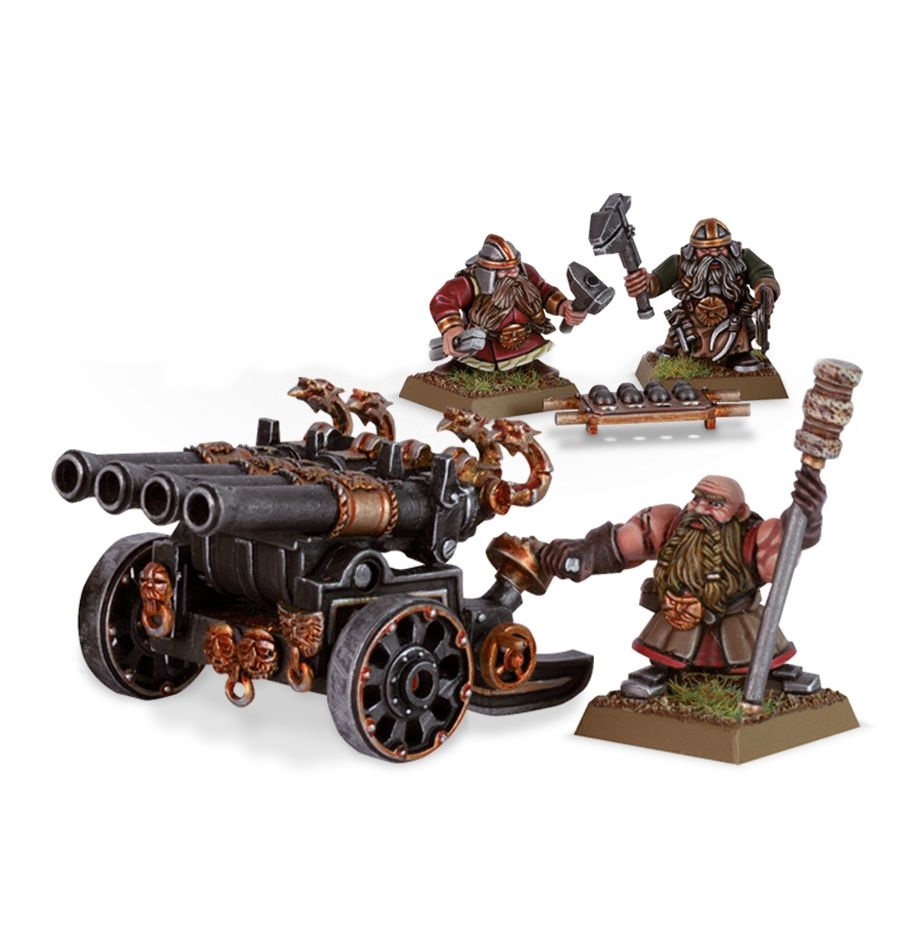
Gyrocopters
Gyrocopters are revolutionary flying machines that provides the armies of the Dwarfs with dedicated aerial support or as a form of fast reconnaissance. These war machines use a revolutionary rotor blade steam engine that allows it to take off into the air and land vertically or even hover on the spot, becoming the first technological marvel to achieve the ability of flight. The first Gyrocopter was invented and then improved upon by Dwarf Engineers, and due to its rarity only a trusted member of the Engineers Guild is allowed to maintain and operate one. The inventors of this machine were first inspired by observing wild Dragons swooping down from mountain crags. They combined the idea of wings with that of engines used to drive drilling machines and flywheels from grinding machines, which would eventually be the basis for the steam engine that powers the rotors. After several centuries of constant calibrations and revision, the first proper prototype was met with great success. The earlier models were made mostly of canvas and light weight metal, but as time went on, the newer variants became far more heavily armored, and sported an improved hull and weaponry.
Since its introduction to the Dwarf military arsenal, Gyrocopters enabled Dwarf strongholds to keep in contact without the need to risk themselves by simply flying over the dangerous enemies that occupy the mountain passes. Eventually, many Dwarf Holds have since carved out many landing pads all across the mountain peaks of their surrounding territory, from which a Gyrocopter can land and get refitted for its next mission. In times of distress, Gyrocopters have been known to carry out emergency supply drops, where supplies and messages can be dropped from a Gyrocopter directly onto a beleaguered Dwarf settlement, enabling them to hold out for far longer periods and send word for help should the threat be far too overwhelming for even the Dwarfs to handle alone.
In battle, Gyrocopters provide the Dwarfs with the speed and ability to strike anywhere on the battlefield without the need to directly risk the life of the pilot and the aircraft. Armed with a small rapid fire cannon at the front, these aircraft have proven time and again their effectiveness against the enemies of the Dwarfen race. In the past, some, potentially mad, members of the Engineers Guild invented a Gyro Multiseater to carry more than one Dwarf into the sky at time, but this creation was perceived to have little use amongst the Dwarf's military hierarchy
Durgrim Redmane, Hammerer:
"A Dwarf should have his feet on the ground or, more preferably, a hundred feet below. But they're nippy little buggars, I can tell you, and useful for getting behind the enemy and given 'em a good wallop up the backside with that rapid firing gun."
Gyrocopter
Large construct, unaligned
- Armor Class 20 (natural armor)
- Hit Points 210 (20d10 + 100)
- Speed fly 18m.
STR DEX CON INT WIS CHA 24(+7) 16(+3) 20(+5) 3(-4) 11(+0) 1(-5)
- Damage Resistances cold, fire, piercing
- Damage Immunities necrotic, poison, psychic, radiant, slashing
- Condition Immunities charmed, exhaustion, frightened, paralyzed, petrified, poisoned
- Senses darkvision, passive Perception 10
- Languages none
- Challenge 11 (7200 XP)
Immutable Form. The gyrocopter is immune to any spell or effect that would alter its form.
Machine. The gyrocopter requires a pilot to be operated. If the pilot doesn't use its action to drive the aircraft, the gyrocopter hovers on the spot unable to attack. The pilot is considered behind three quarters cover and if it happens to die, the gyrocopter will continue to move in the same direction until it will crash.
Actions
Multiattack. The gyrocopter makes four attacks with its brimstone gun.
Brimstone Gun. Ranged Weapon Attack: +8 to hit, range 30/90m, one target. Hit: 17 (4d6+3) piercing damage.
Cone of Steam (Recharge 5-6). The gyrocopter releases a torrent of hot steam from its engine. Each creature in a 9m cone must make a Dexterity saving throw. A creature takes 28 (8d6) fire damage on a failed save, or half as much damage on a successful one.
Bombs (4 Ammunition). The gyrocopter releases up to 4 bombs directly under it, causing them to explode upon impact. Each creature in a 4,5m radius must make a DC 15 Dexterity saving throw, taking 21 (6d6) bludgeoning damage on a failed save for each bomb that exploded, or half as much damage on a successful one.
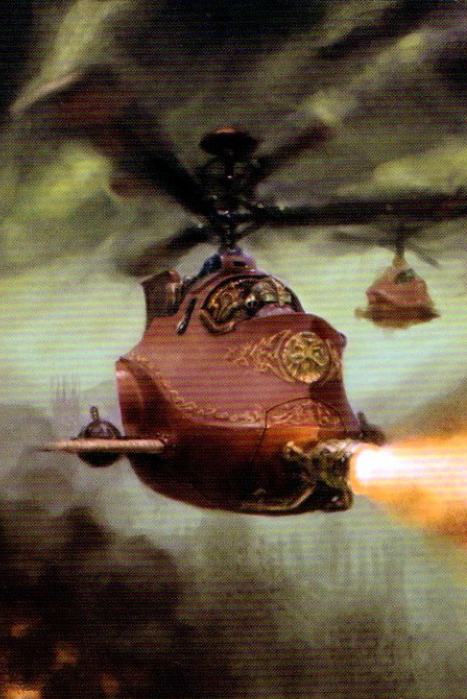


Gyrobombers
A Gyrobomber is a heavily modified version of the Gyrocopter, equipped with a large payload of powerful bombs and ordinance. Initial tests against rampaging Orcs proved successful, with the newly dubbed Gyrobomber sowing patches of destruction along its flight path. However, while the bombs did rip holes into the waves of oncoming attackers, the newly designed flying machine was not as capable at diving down to launch its bombs as was the Gyrocopter, and furthermore, the larger bombs proved more susceptible to wind shear.
All of this meant that the devastating payload was not always delivered on target. Teams of Engineers advanced a slew of ideas, one of which turned out to increase the bomb’s damage potential. By rigging the explosive content within the bomb canisters, the Engineers found they could set off a brief chain reaction, creating a bouncing bomb that would land, explode and then set off subsequent explosions. Named the grudgebuster bomb, the Engineers were naturally defensive about it, bristling at suggestions that the bombs were less accurate, they stated that the bounces gave the ordnance a greater chance to strike its target. Tests showed that, while the grudgebuster bombs might not be any more accurate, their multiple explosions wreaked more damage than ever.
Armed with their impressive bomb racks and a nose mounted clattergun, the Gyrobombers stream over the Dwarf battle lines seeking to obliterate the foe’s largest formations. Already, several flying formations have become famous, perhaps most notably the Skyhammers from Zhufbar and the Blackhammer Bombers of Karaz-a-Karak.
Gyrobomber (Gyrocopter variant).
A Gyrobomber is a CR 12 (8400 XP) creature with the stats of a gyrocopter but with the following changes:
- It has 263 HP (25d10 + 125)
- It has an AC of 18 (natural armor)
- It is equipped with 12 Grudgebuster Bombs: 9m radius, DC 14 Dexterity saving throw, 21 (6d6) bludgeoning damage. (Replace Bombs)
- It is equipped with a Clattergun: Ranged Weapon Attack: +8 to hit, range 30/90m, one target. Hit: 21 (4d8+3) piercing damage. Burst Fire (8d8, DC 16). (Replace Brimstone Gun)
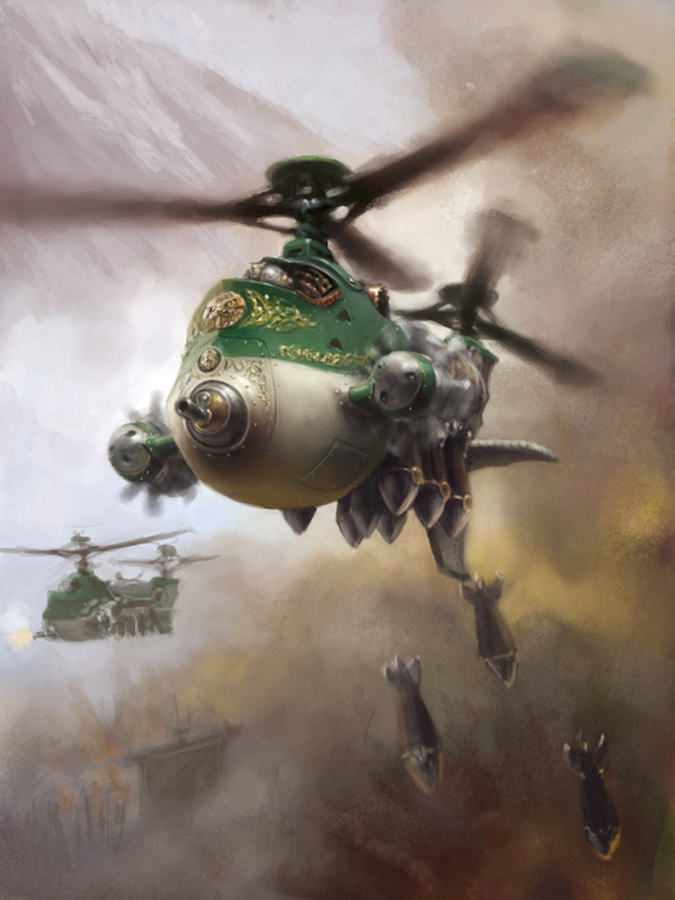


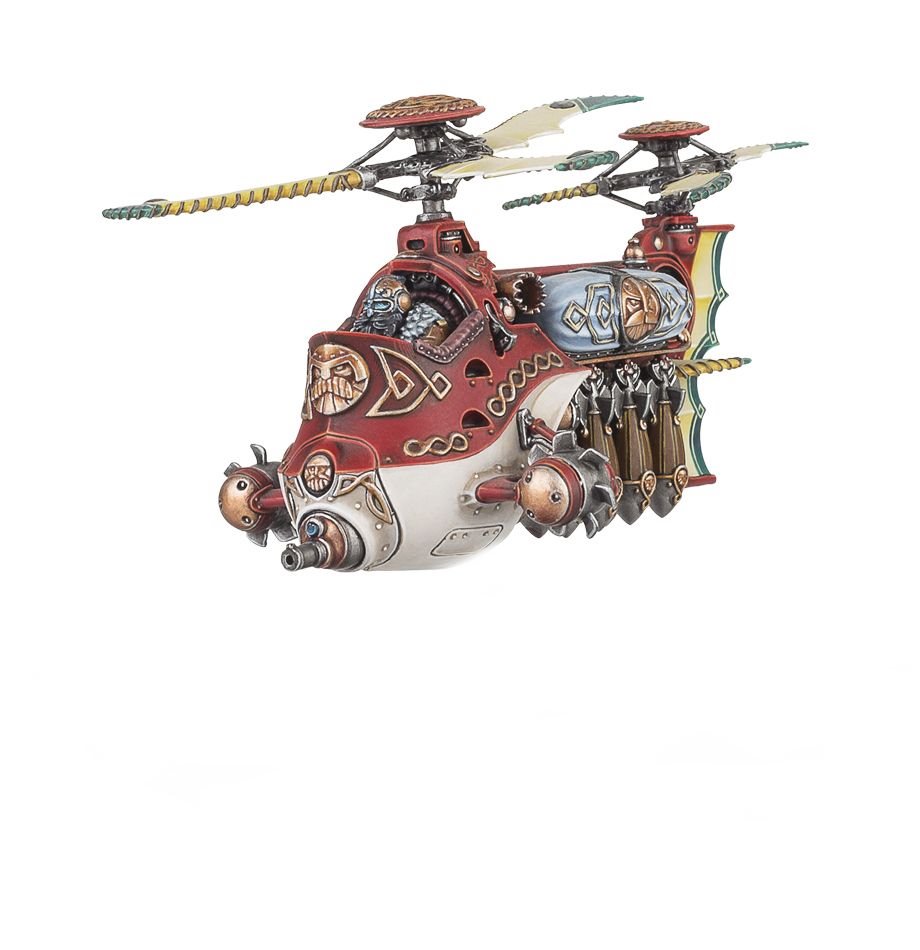
Runesmiths
Runesmiths work spells with their hammercraft, binding the Winds of Magic into mighty runes of power. They are a suspicious lot and jealously protect the secrets kept in their anvils and hammers, guarding the knowledge that allows them to make: magic items, weapons, armor, rings and talismans, of greater potency than items wrought by any other mortal race upon the world. The ancient Guild of Runesmiths is one of the oldest and most respected institutions in all of the Karaz Ankor. According to legend, its origins stretch back to the days of Grungni, the great Ancestor God of Mining, Master of the Forge and Lord of the Runes. The Runesmiths Guild claims descent from Grungni’s son. For this reason, the Runesmiths sometimes refer to themselves as the Clan of Morgrim, although they are not the only clan to claim descent from Grungni or his many sons.
The number of Runesmiths is not very great, and those remaining are related to each other, often in some very remote fashion. Each carries on his direct family's traditions, learning the craftsmanship of blending magic and metal together by use of mighty runes of power. Runesmiths are ancient and powerful individuals. At the very least they will have endured hundreds of years of harsh apprenticeship under the demanding eye and unforgiving hand of their forebear.
Older Runesmiths will have survived hundreds of years of further toil, centuries of beating runes from hot metal, and decades of searching out old secrets in the depths of lost Dwarf strongholds. As a result, it is hard to imagine a tougher or cantankerous Dwarf.
In battle, Runesmiths aid their side by dampening enemy magic, earthing spells harmlessly before they can wreak havoc amongst the Dwarfs. They do this in the same manner as they capture the Winds of Magic to forge magic items, and they often bring along rune covered talismans to aid in this endeavor. Many Runesmiths bear weapons and armor of their own crafting, and they are eager to show their comrades exactly how effective they can be. Whether by some gift of Grungni, or perhaps as a side effect of centuries of beating magical runes into white hot metal, when a Runesmith feels the rage of battle, his weapons, and those of friendly forces around him, begin to glow and radiate heat as if remembering the forgefires from which they were created. This aura of power has proven effective in helping blades penetrate the armor or toughened hides of any foe.
In times of great need, the most powerful Runelords will bring an Anvil of Doom to battle. The Anvils of Doom are the most ancient heirlooms of the entire Dwarf race. They are the very anvils upon which the rune weapons of legend were forged, and were, perhaps, the very creations of the great forgefather Grungni. The anvils are especially made to attract and hold the Winds of Magic, arcane powers which can be captured and subsequently unleashed by a Runelord. Separate runes struck in the right order can call upon the different Ancestor Gods: Valaya for loyalty, Grungni to boost the power of arms and armor, and Grimnir to unlock the energies of fury.
Runesmith
Medium humanoid, lawful good
- Armor Class 21 (gromril plates)
- Hit Points 143 (15d8 + 75)
- Speed 7,5m.
STR DEX CON INT WIS CHA 17(+3) 10(+0) 15(+2) 20(+5) 18(+4) 14(+2)
- Saving Throws Con +7, Int +10
- Skills Arcana +10, History +10, Investigation +10, Insight +9
- Damage Resistances magic, poison
- Senses darkvision, passive Perception 14
- Languages Common, Khazalid
- Challenge 8 (3900 XP)
Dwarfen Toughness. Dwarfs are famous for their resilience. They have advantage on saving throws against poison, resistance against poison damage, and their hit point maximum is increased by an amount equal to their number of hit dice.
Magic Resistance. Dwarfs are highly inert to magic and cannot use it, with the exception of rune magic and runic objects. Because of that, they all have resistance against magical damage and advantage on saving throws against magic.
Runes. The runesmith is a master magical crafter. Its runsmithing ability is Intelligence (rune save DC 18). The runesmith has the following runes inscribed on its equipment:
- Weapon: Rune of Fire, Rune of Grudges, Rune of Striking.
- Armor: Rune of Resistance, Rune of Shielding, Rune of Stone.
- Talismanic: Rune of Spellbreaking (Temp), Rune of Spelleating (Temp).
Actions
Multiattack. The runesmith makes two attacks with its runic warhammer.
Runic Warhammer. Melee Weapon Attack: +10 to hit, reach 1,5m, one target. Hit: 8 (1d10 + 4) bludgeoning damage plus 5 (1d10) fire damage.
Runesmithing.
Intelligence is the Runesmithing ability modifier used to create runes and determine their saving throw DC.
- Rune save DC = 8 +proficiency bonus +Intelligence modifier
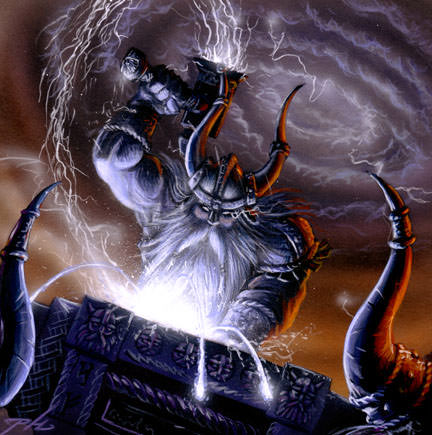


Runelords
The Runelords are the greatest of the Runesmiths. A Runelord candidate may only be promoted with the death of an existing Runelord, so this position is highly coveted and contested. Among the Dwarfs, Runelords are equal to kings, and so they move through Dwarf society as some of its most esteemed members. A few Runelords withdraw from the world, sequestering themselves away to learn the deeper secrets of the Master Runes and perhaps create a few of their own, further diminishing their numbers as their names become legend. On the battlefield Runelords dampen and channel the magic of their foes, rending it harmless. They alone have the ability to forge magical items using powerful runes, a skill passed on to a worthy relation, or taken to the grave.
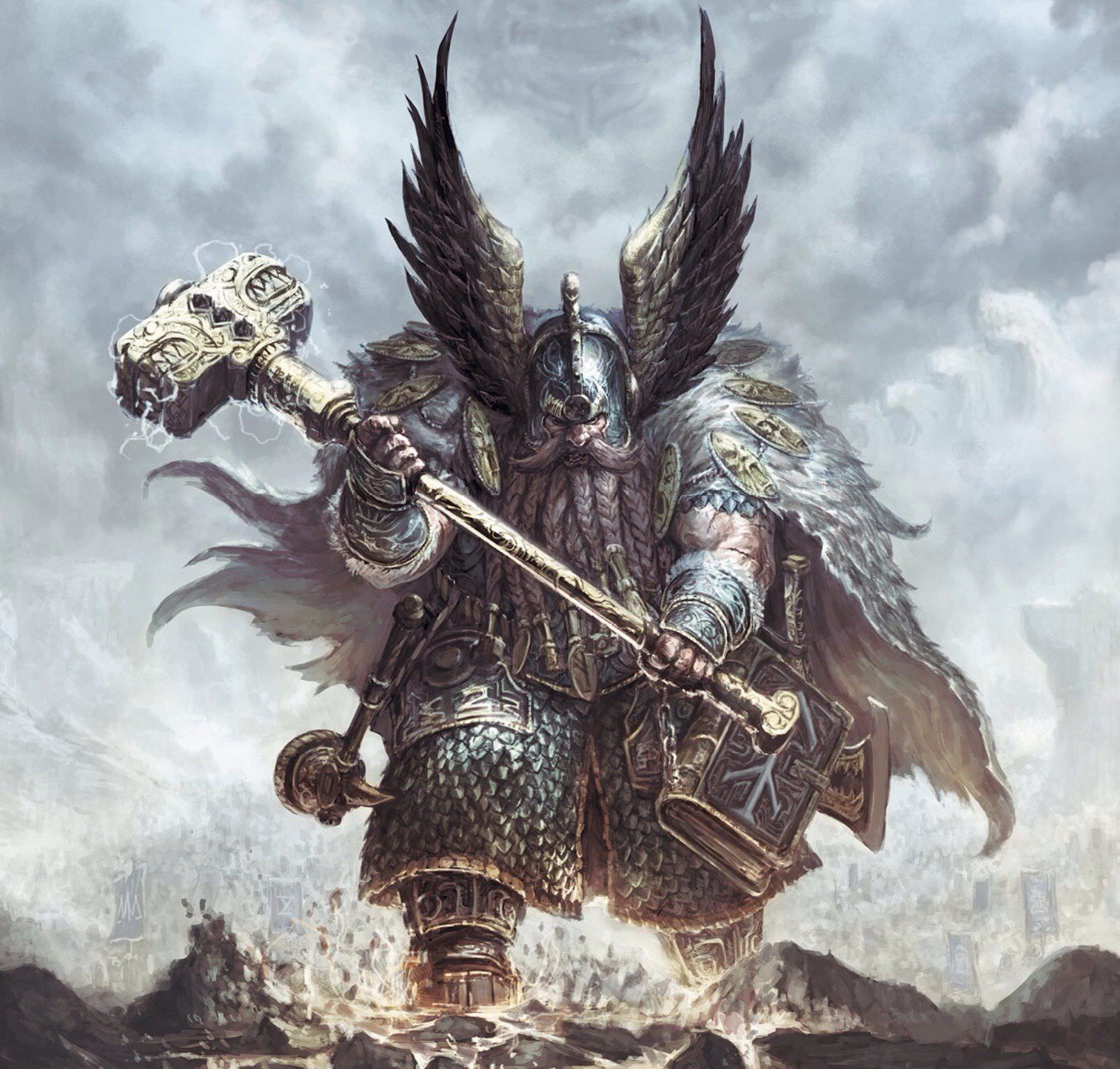


Runelord
Medium humanoid, lawful good
- Armor Class 22 (gromril plates)
- Hit Points 190 (20d8 + 100)
- Speed 7,5m.
STR DEX CON INT WIS CHA 17(+3) 10(+0) 19(+4) 24(+7) 20(+5) 18(+4)
- Saving Throws Con +10, Int +13, Wis +11
- Skills Arcana +13, History +13, Investigation +13, Insight +11
- Damage Resistances bludgeoning, magic, piercing, poison, slashing
- Senses darkvision, passive Perception 15
- Languages Common, Khazalid
- Challenge 11 (7200 XP)
Legendary Resistance (2/Day). If the Runelord fails a saving throw, it can choose to succeed instead.
Dwarfen Toughness. Dwarfs are famous for their resilience. They have advantage on saving throws against poison, resistance against poison damage, and their hit point maximum is increased by an amount equal to their number of hit dice.
Runes. The Runelord is a master magical crafter. Its runsmithing ability is Intelligence (rune save DC 21). The Runelord has the following runes inscribed on its equipment:
- Weapon: Master Rune of Flight, Master Rune of Snorri Spangelhelm, Master Rune of Swiftness, Rune of Force.
- Armor: Master Rune of Adamant, Master Rune of Gromril, Rune of Fortitude.
- Talismanic: Master Rune of Balance, Master Rune of Spellbinding.
.
Magic Resistance. Dwarfs are highly inert to magic and cannot use it, with the exception of rune magic and runic objects. Because of that, they all have resistance against magical damage and advantage on saving throws against magic.
Actions
Multiattack. The Runelord makes three attacks with its runic maul.
Runic Maul. Melee Weapon Attack: +13 to hit, reach 1,5m, one target. Hit: 11 (2d6 + 4) bludgeoning damage plus 5 (1d10) force damage.
Anvil of Doom (Recharge 5-6). The Runelord beats the anvil with its hammer, unleashing powerful magical effects in a 30m radius around it.
1) Rune of Grimnir: The skies roar with thunder as the Runelord conjures 1d6 lightning strikes to hit that many points within range. Each creature within 1,5m of these points must make a Dexterity saving throw, taking 4d10 lightning damage on a failed save, or half as much damage on a successful one.
2) Rune of Grugni: Each creature of the Runelord's choice within range, has advantage on attack rolls for its next turn.
3) Rune of Valaya: Each creature of the Runelord's choice within range, regains 2d10 hit points.Legendary Actions
The Runelord can take 2 legendary actions, choosing from the options below. Only one legendary action option can be used at a time and only at the end of another creature's turn. The Runelord regains spent legendary actions at the start of its turn.
Cast the Runes. The Runelord activates one of its runes.
Siphon Magic (Costs 2 Actions). The Runelord siphons magic through its anvil, casting Antimagic Field in a 9m radius around it.
Rune Magic
A Runesmith that meets the criteria can attempt to create magical runes. The basic process for creating temporary and permanent runes is the same; only the amount of time differs.
Step 1: Inscription
At the start of the process, the Runesmith must inscribe the chosen rune on theitem to be enchanted. This must be done with extreme care, as the tiniest imperfections can create a fatal flaw. Inscription takes 2d10 minutes for temporary runes and 1 week for permanent runes. At the end of this time, an Inscription Roll is made. The Runesmith rolls a number of d10s equal to his Spellcasting Ability Modifier and adds them together. If the result of the Inscription Roll is equal to or greater than the Inscription Number of the rune, it is created successfully. If the Inscription Roll is lower than the Inscription Number of the rune, the attempt fails, and the time spent is wasted. Unlike spellcasting, there is no danger of Tzeentch’s Curse.
Step 2: Empowering
Once the rune is successfully inscribed, it must be empowered. This is the lengthiest part of the process. The Runesmith uses runic chants and other ritualized methods to instill the rune with magic. Empowering is resolved as an Extended Arcana Skill Challenge. Each Arcana check takes 20 minutes for a temporary rune and one month for a permanent rune. Each rune requires a certain number of successes to empower (see the individual rune descriptions). Once the Runesmith achieves the specified number of successes, the item is ready for binding.
Step 3: Binding
Once the rune is empowered, the Runesmith needs to perform a few final rituals to bind the magic into the rune. This final step takes 1d10 minutes for temporary runes and 1d10 days for permanent runes. Only after the binding is complete is the rune’s power activated and the item considered magical.
Rules of Runecraft
Runesmiths follow a litany of rules laid down by their guild. Some of these rules exist for practical reasons, while others are simply tradition. The following rules govern the creation of runic items of all types.
Rule of Form
Runes must be inscribed on items of the appropriate type. Armor Runes must be inscribed on armor, Weapon Runes on weapons, and Talismanic Runes on rings, amulets, etc. Furthermore, runes must be carved, so the chosen items must be made of a resilient substance. Metal, wood, bone, and stone are appropriate, for example, while paper, leather, and ceramic are not.
Rule of Three
A single item can only contain so much magical power. Thus no runic item can have more than three runes inscribed on it at any given time. Any attempt to add a fourth rune to an item automatically fails. The same rune cannot be inscribed more than once on a single item.
Rule of Mastery
Master runes are too powerful to be combined with other runes. If an item is inscribed with a master rune, it can bear no other runes of any kind. Runesmiths refer to master runes as “jealous runes” for this reason.
Rule of Pride
Runesmiths take pride in their craft. They don't like to repeat themselves, and they are always looking to create greater and greater masterworks. Except under unusual circumstances (Alaric the Mad forging the Runefangs, for example), a Runesmith will never create a copy of a rune item he’s made before.
Rule of Time
When working on a rune item, a Runesmith must dedicate the majority of his time to the job and can only work on one rune at a time. A Runesmith must spend at least four hours each day working on the rune for the day to count in the creation process. If no work is done on a rune for over one month, the attempt fails.
The Runes
This section includes descriptions of the most common Armour, Weapon, and Talismanic Runes. They are presented in the following format:
Rune Name
- Type: This indicates whether the rune is an Armour, Weapon, or Talismanic Rune.
- Inscription Number: You must roll this number or higher to properly inscribe the rune.
- Empowerment: You must make this many successful Arcana checks to empower the rune.
- Description (Permanent): The rune’s permanent effect if created successfully.
- Description (Temporary): The rune’s temporary effect if created successfully.
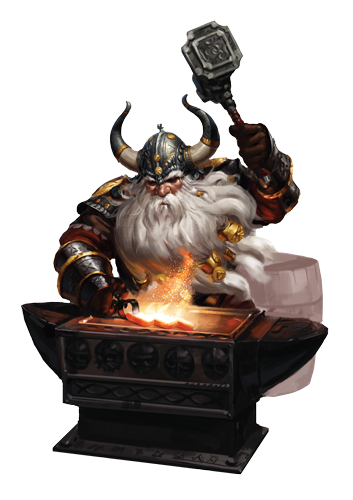
Master Rune of Adamant
- Type: Armor
- Inscription Number: 35
- Empowerment: 7
- Description (Permanent): Resistance to bludgeoning, piercing and slashing damage.
- Description (Temporary): As permanent, but once the rune is activated (bonus action), the benefit only lasts for 1 minute.
Master Rune of Alaric the Mad
- Type: Weapon
- Inscription Number: 37
- Empowerment: 7
- Description (Permanent): Attacks made by a weapon bearing this rune ignore resistance to bludgeoning, piercing and slashing damage.
- Description (Temporary): As permanent, but once the rune is activated (bonus action), the benefit only lasts for 1 minute.
Master Rune of Balance
- Type: Talismanic
- Inscription Number: 35
- Empowerment: 8
- Description (Permanent): Only Runesmiths can use an item inscribed with this rune. Its bearer can use an action to impose disadvantage on Spell checks to a spellcaster within 30m for 1 minute.
- Description (Temporary): As permanent, but it only works once.
Master Rune of Breaking
- Type: Weapon
- Inscription Number: 35
- Empowerment: 6
- Description (Permanent): The wielder of a weapon bearing this rune can spend its reaction to parry an incoming melee attack adding 4 to its AC. In addition if the parry is successful the wielder can make an opposed Strength (Athletics) check with the attacker to launch the blocked weapon 3d10m away. A natural 20 on the Strength check destroys nonmagical weapons.
- Description (Temporary): As permanent, but it only works once.
Master Rune of Dismay
- Type: Talismanic
- Inscription Number: 38
- Empowerment: 9
- Description (Permanent): This rune can only be inscribed on a war horn. When the horn is sounded, all enemies within 30m must make a Wisdom saving throw against the user Rune save DC or become frightened.
- Description (Temporary): As permanent, but it only works once.
Master Rune of Flight
- Type: Weapon
- Inscription Number: 31
- Empowerment: 5
- Description (Permanent): This rune can only be inscribed on a hammer. It grants the hammer the Thrown (range 18/30m) property. The hammer returns to the thrower’s hand at the end of his turn.
- Description (Temporary): As permanent, but it only works once.
Master Rune of Gromril
- Type: Armor
- Inscription Number: 40
- Empowerment: 8
- Description (Permanent): The armor bearing this rune provides an extra +2 bonus to AC.
- Description (Temporary): As permanent, but once the rune is activated (bonus action), the benefit only lasts for 1 minute.
Master Rune of Kingship
- Type: Talismanic
- Inscription Number: 43
- Empowerment: 15
- Description (Permanent): This rune must be inscribed on a crown, and such an artifact is given to only the mightiest Dwarf Lords. The wearer of such a crown and a number of allies equal to his Charisma ability modifier, within 30m, are immune to fear and roll Wisdom saving throws with advantage.
- Description (Temporary): The Master Rune of Kingship is never inscribed in this fashion.
Master Rune of Skalf Blackhammer
- Type: Weapon
- Inscription Number: 41
- Empowerment: 9
- Description (Permanent): Any weapon bearing this rune counts as having the Heavy property and gains a +3 bonus on damage rolls.
- Description (Temporary): As permanent, but once the rune is activated (bonus action), the benefit only lasts for 1 minute.
Master Rune of Snorri Spangelhelm
- Type: Weapon
- Inscription Number: 39
- Empowerment: 8
- Description (Permanent): Weapons inscribed with this rune gain a +3 bonus to attack rolls.
- Description (Temporary): As permanent, but once the rune is activated (bonus action), the benefit only lasts for 1 minute.
Master Rune of Spellbinding
- Type: Talismanic
- Inscription Number: 36
- Empowerment: 9
- Description (Permanent): Only Runesmiths can use an item inscribed with this rune. The bearer can use its reaction to attempt to block an enemy wizard casting a spell within 30m of it. They roll opposed arcana checks to determine the outcome. If the Runesmith's check is higher than the wizard's by respectively 5/10/15, then the spell results in a minor/major/catastrophic miscast.
- Description (Temporary): As permanent, but it only works once.
Master Rune of Spite
- Type: Talismanic
- Inscription Number: 34
- Empowerment: 8
- Description (Permanent): Attacks made against the bearer of an item inscribed with this rune have their Damage reduced by 2.
- Description (Temporary): As permanent, but once the rune is activated (bonus action), the benefit only lasts for 1 minute.
Master Rune of Steel
- Type: Armor
- Inscription Number: 38
- Empowerment: 8
- Description (Permanent): The bearer can use an action to activate the rune, turning its flesh into solid iron for 1 minute. For the duration the creature has resistance to bludgeoning, piercing and slashing damage, advantage on Strength checks and saving throws, and its speed is halved.
- Description (Temporary): As permanent, but it only works once.
Master Rune of Swiftness
- Type: Weapon
- Inscription Number: 33
- Empowerment: 5
- Description (Permanent): The wielder of a weapon bearing this rune has advantage on Initiative checks and can attack with it as a bonus action.
- Description (Temporary): As permanent, but the rune can only be used once. Using this rune does not require an action.
Rune of Cleaving
- Type: Weapon
- Inscription Number: 24
- Empowerment: 4
- Description (Permanent): Any weapon bearing this rune gains a +1 bonus on damage rolls.
- Description (Temporary): As permanent, but the rune can only be used once. Using this rune does not require an action.
Rune of Fate
- Type: Talismanic
- Inscription Number: 26
- Empowerment: 4
- Description (Permanent): Only temporary Runes of Fate can be made.
- Description (Temporary): The first attack that reduces the bearer of an item inscribed with this rune to 0 hit points is negated. The bearer suffers no damage from this attack. This rune can only be used once.
Rune of Fire
- Type: Weapon
- Inscription Number: 27
- Empowerment: 5
- Description (Permanent): Upon the wielder’s command (bonus action), a weapon inscribed with this rune bursts into flames. This provides the same illumination as a torch, and the weapon burns until commanded to stop (bonus action). Additionally, the weapon inflicts an extra 1d10 fire damage.
- Description (Temporary): As permanent, but once the rune is activated (bonus action), the benefit only lasts for 1 minute.
Rune of Fortitude
- Type: Armor
- Inscription Number: 27
- Empowerment: 6
- Description (Permanent): When wearing armor bearing this rune, a character gains a +4 bonus to Constitution.
- Description (Temporary): As permanent, but once the rune is activated (bonus action), the benefit only lasts for 1 minute.
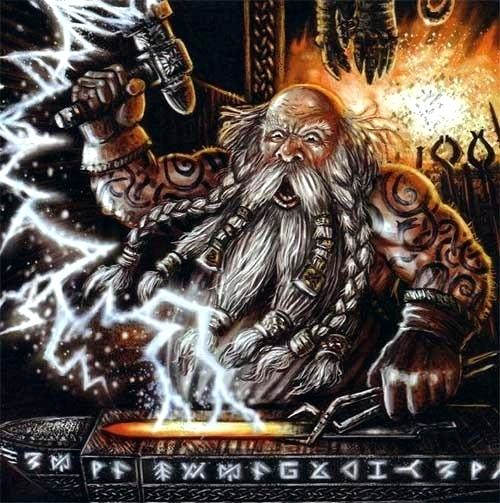


Rune of Furnace
- Type: Talismanic
- Inscription Number: 27
- Empowerment: 8
- Description (Permanent): Resistance to fire damage.
- Description (Temporary): As permanent, but once the rune is activated (bonus action), the benefit only lasts for 1 minute.
Rune of Fury
- Type: Weapon
- Inscription Number: 30
- Empowerment: 6
- Description (Permanent): The wielder of a weapon bearing this rune can enter a rage like a barbarian of half its level. When the rage ends the wielder gains one point of exhaustion.
- Description (Temporary): As permanent, but it only works once.
Rune of Grudges
- Type: Weapon
- Inscription Number: 22
- Empowerment: 4
- Description (Permanent): On the first round of combat, the wielder of a weapon bearing this rune can mark one enemy as a bonus action. For the remainder of the encounter, the wielder rolls attacks against the marked creature with advantage.
- Description (Temporary): As permanent, but it only works once.
Rune of Iron
- Type: Armor
- Inscription Number: 25
- Empowerment: 6
- Description (Permanent): Attacks made against the wearer of armor inscribed with this rune have their Damage reduced by 1.
- Description (Temporary): As permanent, but once the rune is activated (bonus action), the benefit only lasts for 1 minute.
Rune of Luck
- Type: Talismanic
- Inscription Number: 30
- Empowerment: 7
- Description (Permanent): The bearer of an item inscribed with this rune gains an extra Luck Point each day. Characters with the Lucky feat cannot benefit from a Rune of Luck.
- Description (Temporary): The bearer of an item inscribed with this rune can expend it to gain an extra Luck Point. This can be done at any time, and it is not considered an action. Characters with the Lucky feat cannot benefit from a Rune of Luck.
Rune of Might
- Type: Weapon
- Inscription Number: 25
- Empowerment: 5
- Description (Permanent): When wielding weapons bearing this rune, a character gains a +2 bonus to Strength and the ability to re-roll 1 or 2 on a damage die. The new roll must be used, even if it's a 1 or a 2.
- Description (Temporary): As permanent, but once the rune is activated (bonus action), the benefit only lasts for 1 minute.
Rune of Resistance
- Type: Armor
- Inscription Number: 28
- Empowerment: 7
- Description (Permanent): When wearing armor inscribed with this rune, a character's hit point maximum is increased by an amount equal to twice their number of hit dice.
- Description (Temporary): As permanent, but once the rune is activated (bonus action), the benefit only lasts for 1 minute.
Rune of Shielding
- Type: Armor
- Inscription Number: 24
- Empowerment: 5
- Description (Permanent): All non-magical ranged attacks have a 50% chance to miss a character wearing armor inscribed with this rune.
- Description (Temporary): As permanent, but once the rune is activated (bonus action), the benefit only lasts for 1 minute.
Rune of Speed
- Type: Weapon
- Inscription Number: 16
- Empowerment: 3
- Description (Permanent): The wielder of a weapon bearing this rune gains a +1d10 bonus to his initiative score.
- Description (Temporary): As permanent, but it only works once.
Rune of Spellbreaking
- Type: Talismanic
- Inscription Number: 23
- Empowerment: 3
- Description (Permanent): Only temporary Runes of Spellbreaking can be made.
- Description (Temporary): Only Runesmiths can use an item inscribed with this rune. It can cause a spell within 9m of the user to end prematurely, dispelling its ongoing effects as an action. The Runesmith and the enemy caster roll opposed arcana checks to determine the outcome. The Rune of Spellbreaking has no effect on summoned demons or re-animated undead. This rune can only be used once.
Rune of Spelleating
- Type: Talismanic
- Inscription Number: 30
- Empowerment: 5
- Description (Permanent): Only temporary Runes of Spellbreaking can be made.
- Description (Temporary): As Rune of Spellbreaking, but the caster of a spell that is successfully dispelled cannot cast that spell again for 24 hours.
Rune of Stone
- Type: Armor
- Inscription Number: 20
- Empowerment: 3
- Description (Permanent): The armor bearing this rune provides an extra +1 bonus to AC.
- Description (Temporary): As permanent, but once the rune is activated (bonus action), the benefit only lasts for 1 minute.
Rune of Striking
- Type: Weapon
- Inscription Number: 18
- Empowerment: 3
- Description (Permanent): Weapons inscribed with this rune gain a +1 bonus to attack rolls.
- Description (Temporary): As permanent, but once the rune is activated (bonus action), the benefit only lasts for 1 minute.
Rune of Warding
- Type: Talismanic
- Inscription Number: 19
- Empowerment: 3
- Description (Permanent): The bearer of an item inscribed with this rune gains advantage on saving throws against spells.
- Description (Temporary): As permanent, but once the rune is activated (bonus action), the benefit only lasts for 1 minute.
Dwarf Kings
A Dwarf Lord is amongst the strongest and most powerful individuals within a Dwarf army, having been promoted as supreme commander for being a magnificent leader, an extraordinary tactician, and having one of the longest beards within the entire army. These fell handed warriors are equipped with the finest arms and armor within his clan, whom have been known to fight at the forefront of the army, inspiring his comrades in the face of overwhelming odds. As a rule, Dwarf Lords are a grim sort, for they are the leaders of a dour people. Upon their broad shoulders is carried the weight of untold debt, the inherited grudges of a long suffering and unforgiving race. It is their duty to avenge all wrongdoings to their clan, their hold, and their entire race, not just in the present, but also for all time.
Every Dwarf Lord started out as a Thane, whom are the patriarchs of a Dwarf Clan. For a Thane to progress and become a Dwarf Lord, he must be well tutored in the ways of their ancient foes, absorb a great wealth of wisdom, and be a bearer of royal blood. Such wisdom includes being a master of tactics and strategy, learning to wield the armored might of their throngs as well as they wield an axe and shield. All Dwarfs take great pride in their possessions, but none more so than the ruling class. Not only is a Dwarf Lord a potential candidate as the next King of a Karak since he is a bearer of royal blood, he is also, depending upon wealth or clan, be equipped with some of the mightiest runic weapons and armor around. It is an honor amongst the Dwarfs to bear such relics of war into battle, for each item is passed down from their forefathers, an ancient legacy in its own right. Covered in runes and bristling with arcane might, each of the Dwarf Hold's relics have a long history of great deeds and great feats.
When a Dwarf Lord leads his Throng into battle, the Lord is often situated within the very center of the army, where he is surrounded by an entire retinue of Hammerer bodyguards. It is here where the Dwarf Lord is to take command and direct his army as he would direct the blow of an axe. Should it be needed, a Dwarf Lord would personally march towards the frontline and fight alongside his kinsmen, inspiring those around him with great vigor that could possibly be enough to win even the most hard fought battles. A strong and powerful individual, a Dwarf Lord is the personification of a truly magnificent leader.
Hengist Stonebelly:
"We sons of Grungni may have drunk deep from the bitter waters of misfortune, but we yet survive. Whilst a single Dwarf draws breath, we will fight the evils that assail us, and we will never, ever give up."
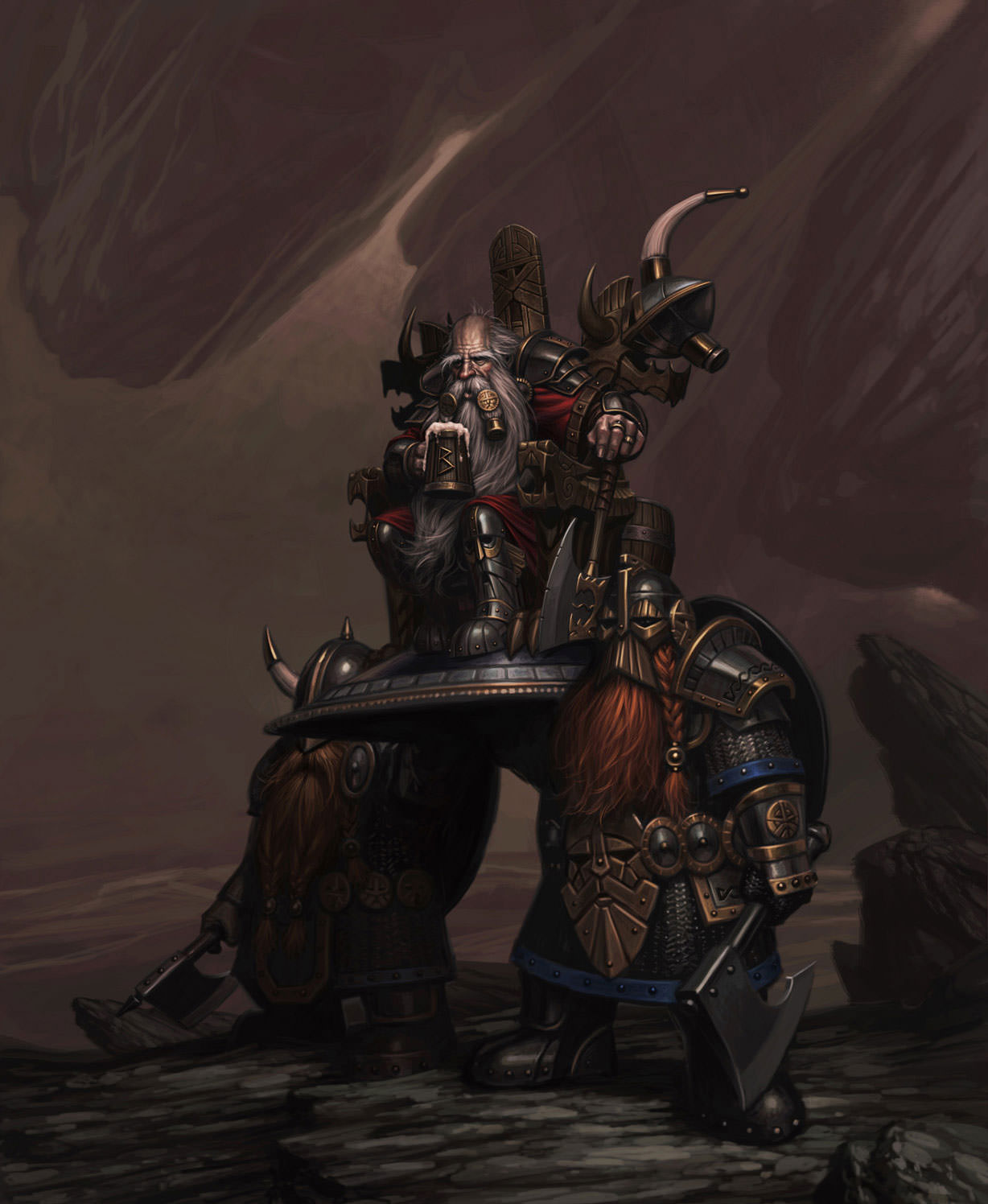


Dwarf King
Medium humanoid, lawful good
- Armor Class 22 (gromril plates)
- Hit Points 270 (20d8 + 180)
- Speed 9m.
STR DEX CON INT WIS CHA 22(+6) 10(+0) 26(+8) 18(+4) 22(+6) 21(+5)
- Saving Throws Str +12, Con +14, Wis +12, Cha +11
- Skills Athletics +12, History +10, Insight +12, Persuasion +11
- Damage Resistances magic, poison
- Condition Immunities charmed
- Senses darkvision, passive Perception 16
- Languages Common, Khazalid
- Challenge 14 (11500 XP)
Legendary Resistance (2/Day). If the King fails a saving throw, it can choose to succeed instead.
Carried Around. The King sits on its throne atop a big shield held by four longbeards. These bodyguards can take opportunity attacks when an enemy leaves their reach. In addition they impose disadvantage on melee attacks against the king from medium or smaller enemies, and grant the King the ability to dash as a bonus action.
Dwarfen Toughness. Dwarfs are famous for their resilience. They have advantage on saving throws against poison, resistance against poison damage, and their hit point maximum is increased by an amount equal to their number of hit dice.
Magic Resistance. Dwarfs are highly inert to magic and cannot use it, with the exception of rune magic and runic objects. Because of that, they all have resistance against magical damage and advantage on saving throws against magic.
Record the Grudge. The King takes notes on the nefarious actions of its enemies, granting 1d8 extra damage to each friendly dwarf within 30m, as they are eager to right some wrongs.
Actions
Multiattack. The King makes three attacks with its runic greataxe.
Runic Greataxe. Melee Weapon Attack: +14 to hit, reach 1,5m, one target. Hit: 13 (1d12 + 7) slashing damage. Rune of Grudges, Rune of Might.
Hold the Line (Recharge 6). Each creature of the King's choice that is within 12m of it and can hear it, gains 4d8 temporary hit points. The King can then make one attack as a bonus action.
Legendary Actions
The King can take 2 legendary actions, choosing from the options below. Only one legendary action option can be used at a time and only at the end of another creature's turn. The King regains spent legendary actions at the start of its turn.
Greataxe. The King makes one attack with its greataxe.
Longbeard's Revenge (Costs 2 Actions). Each one of the four bodyguards make a melee attack against a creature within reach. Dwarfen Battleaxe. Melee Weapon Attack: +8 to hit, reach 1,5m, one target. Hit: 8 (1d8 + 4) slashing damage.
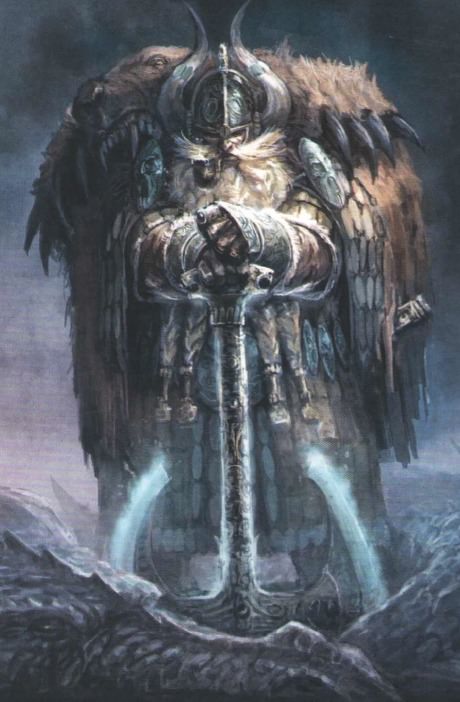


Ungrim Ironfist
Ungrim Ironfist, the Slayer King of Karak Kadrin, is the last of the line of the Slayer Kings that have ruled the keep since his ancestor, King Baragor. Armed with the enormous Axe of Dargo, Ungrim deals woe and death to his enemies, carving a path of red ruin before him while singing songs of old in a booming voice. Atop his head is a bright orange crest that rises above a sturdy horned helmet set with a golden crown. For Ungrim is both a Slayer and a King, more than likely the last of the line of Slayer Kings of Karak Kadrin.
Ungrim bears the burden of the unfulfilled vow made by his ancestor, King Baragor, who took the name Ungrim, meaning "oath-bound" or "unfulfilled oath". By tradition, every king of the Ironfist line takes the Slayer oath. Ungrim is therefore bound by two conflicting obligations as both a Slayer and King; in addition to his duty to serve his city as King, he is also bound to seek out the most dangerous creatures he can find in order to achieve an honorable death in combat as a Slayer.
History. The tale of Ungrim’s family, the Drakebeard Clan, is full of woe, as those in the clan of royal blood bear a history of calamities. Many years ago King Baragor, Ungrim’s five times great grandsire, suffered a terrible loss which drove him to take the oath of the Slayers. What caused such a drastic decision is not recorded. It is commonly assumed that the cause was the death of his daughter at the claws of the Dragon Skaladrak while on her way to marry the son of the High King of Karaz-a-Karak. In any case, Baragor became the first Slayer King of Karak Kadrin. He was torn between conflicting vows: the Slayer oath to seek out death and the oath of a King to protect his people. In the end, good Dwarf sense prevailed, and he found a way to honor all commitments. He founded the famed Slayer Shrine of Karak Kadrin, the largest shrine to Grimnir. Thus, he established a haven for Slayers that continues to this day. His son inherited his vows and continued the line of Slayer Kings, of which King Ungrim Ironfist is but the latest.
Although Ungrim cannot seek his death in Slayer fashion, he grows ever more restless, leading the throng of Karak Kadrin into countless battles. Inspired by his High King and seeking to avenge his lone son who was slain, Ungrim will march to war with the least provocation. It was Ungrim who slew the Dragon of Black Peak and who broke Queek Headtaker’s siege of King Belegar’s citadel in Karak Eight Peaks. The Slayer King has beaten the Ogre mercenary Golgfag Maneater and held off a Chaos army in the Battle of High Pass. Most Dwarfs are amazed Ungrim has lived so long, and none think that a mighty death in battle can be very far away.
Ungrim Ironfist:
"Ah, to die in battle... But I fear there is no foe worthy of my death."
Battle of Broken Leg Gully (2510 IC). Always eager for battle, Ungrim Ironfist marched out of Karak Kadrin to seek Gnashrak Badtoof, a crafty Orc leader whose rampaging army had already eluded Thorgrim Grudgebearer. Three times, Ungrim’s throng defeated the greenskin host, but in each instance, the Orcs escaped, largely due to the bloody ferocity of Gnashrak’s hard fighting mercenary Ogre contingent. Soon after the third battle, however, Gnashrak had a falling out with his Ogre Captain, a fearsome brute named Golgfag. Defecting to the Dwarfs, Golgfag and his Ogres delivered Gnashrak’s arm as proof of their "new" loyalty. Ungrim accepted the Ogres’ offer, and together, the forces made short work of the remaining greenskins. All would have been well had Golgfag, a greedy and grasping Ogre, not betrayed the Slayer King. Before leaving for greener pastures, the Ogre mercenaries looted the Dwarfs’ baggage train, stealing all the ale for themselves.
Although it took five years, Ungrim finally settled the score. While heading eastwards, Golgfag and his Ogres unwisely crossed the Worlds Edge Mountains at Peak Pass, a route which ran in the shadow of Karak Kadrin. While on that narrow trek, they found their path blocked by the Slayer King at the head of a hundred of his angry kin. Upon seeing that he had more Ogres than there were Slayers, Golgfag laughed, but his rumbling guffaws stuck in his throat when he saw the red ruin unleashed by Ungrim and his spike haired crew. With his army massacred, Golgfag was summarily beaten and thrown into a dungeon to rot.
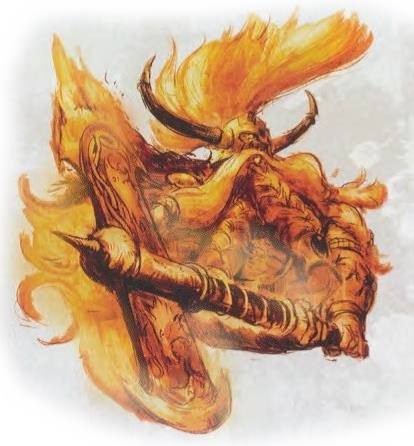
Ungrim Ironfist
Medium humanoid, lawful good
- Armor Class 20 (Dragon Cloak of Fyrskar)
- Hit Points 300 (24d8 + 192)
- Speed 10,5m.
STR DEX CON INT WIS CHA 26(+8) 20(+5) 24(+7) 16(+3) 15(+2) 22(+6)
- Saving Throws Str +15, Dex +12, Con +14
- Skills Acrobatics +12, Athletics +15,
Intimidation +13, Persuasion +13- Damage Resistances magic, poison
- Damage Immunities fire
- Condition Immunities charmed, frightened
- Senses darkvision, passive Perception 12
- Languages Common, Khazalid
- Challenge 20 (25000 XP)
Legendary Resistance (3/Day). If Ungrim fails a saving throw, he can choose to succeed instead.
Dwarfen Toughness. Dwarfs are famous for their resilience. They have advantage on saving throws against poison, resistance against poison damage, and their hit point maximum is increased by an amount equal to their number of hit dice.
Magic Resistance. Dwarfs are highly inert to magic and cannot use it, with the exception of rune magic and runic objects. Because of that, they all have resistance against magical damage and advantage on saving throws against magic.
Monster Slayer (Superior). Ungrim deals an additional 2d8 of damage for every weapon attack, and has advantage on attack rolls, against Large or bigger sized creatures.
Slayer's Crown. This majestic helmet, worn by every Slayer King since the time of King Baragor, grants Ungrim immunity against mind affecting spells.
Slayer's Fury. As a bonus action, Ungrim can enter a rage at the start of his turn. The rage lasts for 1 minute or until Ungrim is incapacitated. While raging, he gains the following benefits:
Advantage on Strength checks and saving throws.
+4 bonus to damage rolls with melee weapon attacks.
Resistance to bludgeoning, piercing and slashing damage.
When dropped to 0 HP, DC 10 Constitution saving throw to not die outright. If successful drop to 1 hit point instead. Each time this feature is used after the first, the DC increases by 5.
Actions
Multiattack. The Slayer King makes five attacks with the Axe of Dargo.
Axe of Dargo. Melee Weapon Attack: +18 to hit, reach 1,5m, one target. Hit: 21 (3d6 + 11) slashing damage plus 9 (2d8) fire damage.
Leap (Recharge 5-6). Ungrim leaps in the air up to 9m and can attempt to ride a large, or bigger, creature with a successful Dexterity (Acrobatics) check against the creature's AC. When ridden, the creature has disadvantage on attack rolls against the slayer, and can try to buck him off with a grappling check.
Legendary Actions
Ungrim can take 3 legendary actions, choosing from the options below. Only one legendary action option can be used at a time and only at the end of another creature's turn. Ungrim regains spent legendary actions at the start of his turn.
Cleave. Ungrim makes one attack against each enemy within reach.
Fiery Vengeance. Ungrim casts Fire Bolt (17th level).
Move. Ungrim moves up to his speed.
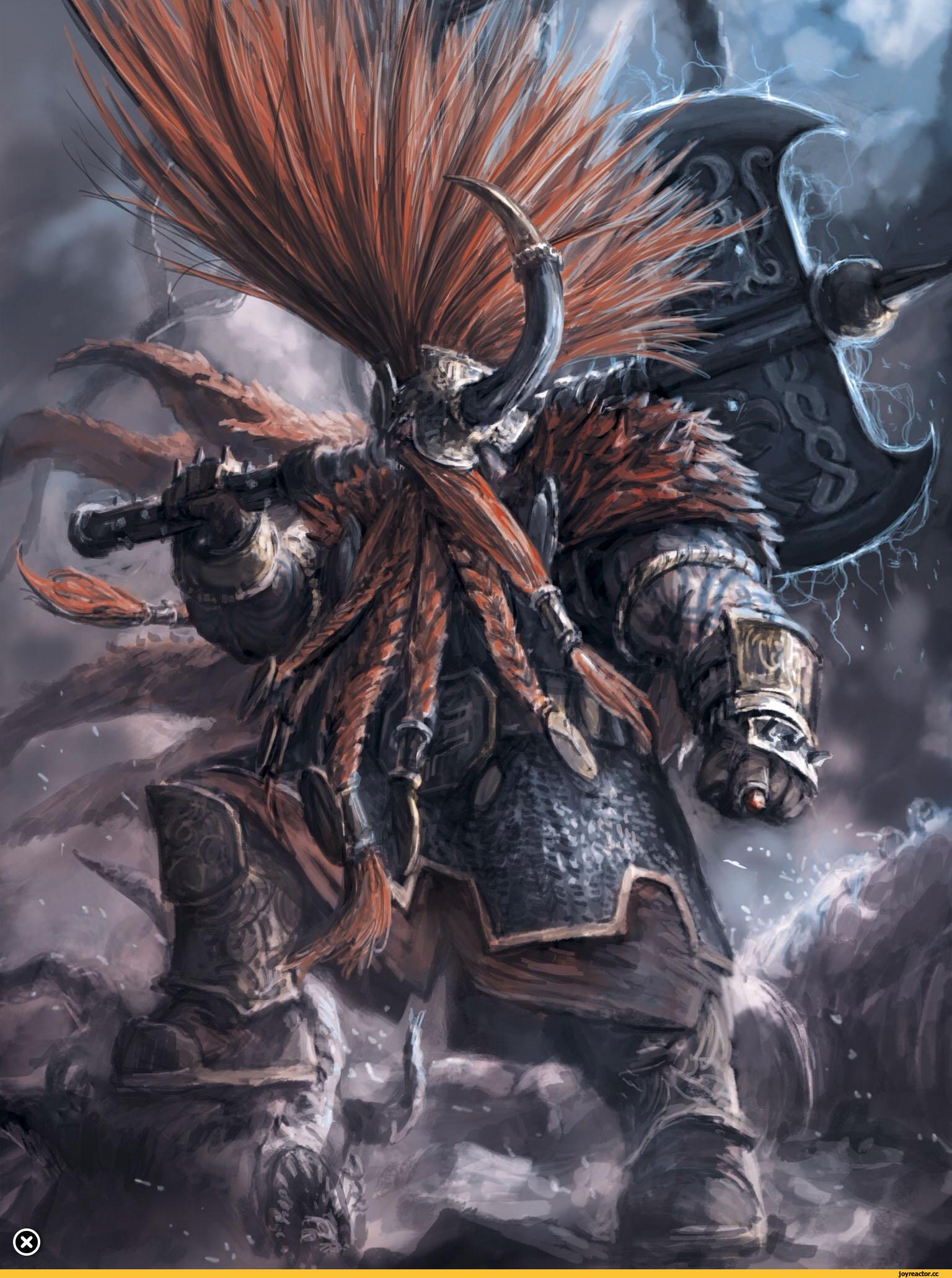


Thorgrim Grudgebearer
Thorgrim Grudgebearer is the current High King of the Dwarfs and the ruler of Karaz-a-Karak. He is a throwback to the High Kings of old, eager for new conquests, mighty in battle, and a merciless enemy. Yet upon his worn brow, there also sits a great wisdom, and he is able to uphold the ancient traditions as well as to accept, if not embrace these needed changes, such as alliances and new technology. Thorgrim is forever brooding upon how to return his people to their former glory. As the ultimate ruler of the Dwarfs, the Dammaz Kron or the Great Book of Grudges is entrusted into his honorable keeping.
It is Thorgrim’s avowed wish to avenge every single entry contained in that voluminous tome; an impossible task if he should live a thousand lifetimes. Yet such was his resolve that he has already helped to rejuvenate the whole of the Karaz Ankor. Tales of his deeds, and the long list of grudges already struck out, fill his grim warriors with a feeling that the Dwarfs have long done without: hope. Borne upon the Throne of Power and brandishing the Axe of Grimnir, Thorgrim is at the forefront of what the Dwarfs hope will be a great conquering, a new age of retribution has begun.
History. Born as the son of the sister of High King Alriksson during the early 24th century, Thorgrim was groomed by his uncle for many years and was considered one of many candidates for his position. Yet his true achievements came just after the end of the Great War against Chaos. Upon his return to Karaz-a-Karak from the battles in Kislev, High King Alriksson felt his age and the heavy burden of his rule. Perhaps most of all, he felt the cost of the war, for many Dwarf lives had been lost fighting against the forces of Chaos, including those of his own sons. The High King himself did not escape the fray unscathed, for atop his Throne of Power, Alriksson had advanced deep into the thick of the battle, felling many foes. He now bore grievous wounds that showed no sign of healing, although the stoic High King remained unbowed, allowing no slowing of the vigor that had marked his long life. The decision to aid the Empire had been easy, and even had he known the cost beforehand, he would still have gone, honoring the oath of his forefathers and marching to the succor of Sigmar’s heirs.
The Council of Kings (2304 to 2305 IC). Although he returned victorious, High King Alriksson’s mind was uneasy. The other holds had not answered the call to arms with as many warriors as he had hoped. The Everlasting Realm felt separated by more than just distance and foes. Each stronghold was preoccupied with its own troubles, and he even suspected some of his royal cousins had fallen to the gold sickness, a disease that, if unchecked, ended in isolationism and madness, misers starving to death upon hoarded piles of gold. Furthermore, the High King knew he was slowly dying from his wounds and that he no longer had an heir. Yet it would not be his fate to sit in a dark hall nursing old grudges and honing his axe in bitterness while doing nothing for the Karaz Ankor.
High King Alriksson called for a Council of Kings, something not done in over three centuries. The Dwarf king of every stronghold, along with the most powerful thanes and the royalty of every clan, made the dangerous trek to the halls of the High King. They gathered in the Great Hall, and many oaths of loyalty were repeated before Alriksson announced his plan for succession. There were a dozen suitable candidates: great kings and thanes of royal clans who could claim descent from the Ancestor Gods themselves. Each of these noble warriors would be given a full year to accomplish heroic feats and attempt deeds worthy of a High King, after which they would present themselves to the full assembly and a decision would be made. This plan was readily accepted by the assembly, who answered with many hearty voices that made the Great Hall ring as it did of old.
The naming of a successor as approved by a Council of Elders was, and still is, tradition amongst Dwarfs. And following traditions is, for Dwarfs, extremely gratifying and always greeted with gruff enthusiasm, this undertaking was even better, for on top of ancient tradition, it proposed a contest of deeds, a protocol which was not unheralded, as many classic sagas told of the kings of old and the great feats they did to win the Throne. In this, the High King Alriksson showed his great wisdom, for all Dwarfs are eager to prove the superiority of their clan and the preeminence of their stronghold.
Thorgrim Grudgebearer, High King of all Karaz Ankor:
"That which is wrong with the world that we cannot fix with the blades of our axes, we shall surely avenge!"
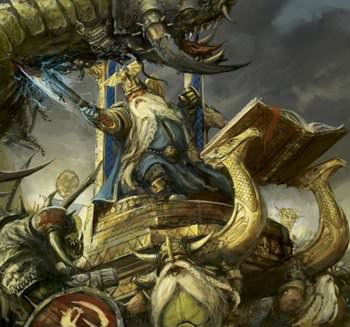


The Deeds of a High King (2305 to 2420 IC). After one year’s time, the Council of Kings convened once more. As the ale flowed, each clan’s contingent cheered boisterously before High King Alriksson raised his hand for silence. The right words were said, and grudges written, for the three candidates who were not present, two of whom were known to have been slain during the course of their year’s deeds, the third missing and presumed dead. After the formalities were concluded, the Great Hall again swelled with booming voices, chants, and rude remarks about the failings of different clans. Each claimant climbed the dais before the High King’s Throne and turned to face the assembled throngs. After the echoes of his supporters died down, he regaled the audience with an account of his deeds. Most of these were well received, perhaps the loudest cheers were for Ungrim Ironfist, who had the head of the Giant he had slain dragged forth, which took a score of Dwarfs, so that all could marvel at its size.
A close second was Belegar, leader of the Angrund clan and direct descendant of King Lunn, the last ruler of Karak Eight Peaks. For several periods of Dwarfen history, the High King had sat upon the throne of Karak Eight Peaks and some few clans hoped to see that lineage restored to rule, although Karak Eight Peaks lay now in ruin. Even as High King Alriksson quieted the crowd to begin the pronouncement, a latecomer marched into the vast hall. It was none other than the High King’s sister’s son, Thorgrim, who had earlier been presumed slain. He was well known in Karaz-a-Karak and had long been mentored by the aged High King. Now he returned, flanked by a sight not seen in the Karak for thousands of years, a contingent of Dwarfs from Norsca.
For during the campaign in Kislev, after High King Alriksson had been injured, it had been Thorgrim who had re-established the old ties with those long distant clans. In turn, each of the Norscan kings spoke of Thorgrim, and of the deeds of valor he had performed in the icy north; of great monsters slain and battles won. Such acts were not the extent of Thorgrim’s journeys. Thorgrim, along with other members of his clan, had entered several of the Lost Holds, seeking out those treasures which remained hidden, or hunting down and slaying those creatures that dared claim the revered artifacts made by the Dwarfs of old. He returned several long lost relics that bore runes of which Kragg the Grim, the eldest living Runelord of the Karaz Ankor, had only heard tell in legend. Many on the assembled Council of Elders wept openly as they passed around these recovered pieces of a more glorious age, marveling at the workmanship of the Golden Scepter of Norgrim, coveting the returned fragments of what could only be the lost crown of Karak Drazh. While the assembled clan kings and revered elders passed these artifacts lovingly back and forth, Thorgrim finally spoke. His booming voice echoed across the mile long colonnaded hall, and all could hear the steel in it.
The return of these long lost treasures, he said, was not enough. His words were bold, calling for the reclamation of the fallen holds, for the clans to work together as of old. Most passionately of all, Thorgrim called for a mighty vengeance. All of the potential successors had done as much, but Thorgrim’s vow went further, for he announced it was his dream to avenge the wrongs done to his people by striking clean the entire ledger of the Great Book of Grudges. It was not long after being named successor that Thorgrim was crowned High King, for Alriksson’s wounds from the Great War Against Chaos had never healed. The old Dwarf was so resilient and stubborn, however, that he had simply refused to die, holding on against the pain until the proper heir could be named and his designs of unifying his people kept alive. So passed a great king. Thorgrim knew he had energized his subjects and that he needed to keep up the momentum. Thus he personally led a campaign to drive the Orcs and Goblins out of Black Fire Pass so that Karaz-a-Karak could ensure steady trade with the Empire.
After a series of bloody battles, Thorgrim led his throng into the pass from the south and King Alrik Ranulfsson, of Karak Hirn, circled his forces to attack Black Fire Pass from the north. The two kings cut swathes through the greenskins there and met in the middle of that steep vale, where they leaned on their axes and conversed before finishing the slaughter. Several grudges were struck out that day, the start of what would be the Great Reckoning.
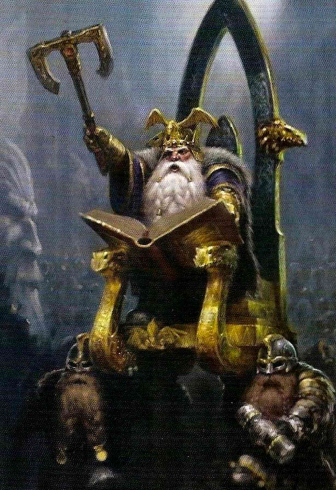


High King, Thorgrim Grudgebearer
Medium humanoid, lawful good
- Armor Class 24 (Armor of Skaldour)
- Hit Points 363 (25d8 + 250)
- Speed 9m.
STR DEX CON INT WIS CHA 24(+7) 12(+1) 28(+9) 18(+4) 26(+8) 25(+7)
- Saving Throws Str +14, Con +16, Wis +15, Cha +14
- Skills Athletics +14, History +11, Insight +15, Persuasion +14
- Damage Resistances bludgeoning, magic, piercing, poison, slashing
- Condition Immunities charmed, frightened
- Senses darkvision, passive Perception 18
- Languages Common, Khazalid
- Challenge 21 (33000 XP)
Legendary Resistance (3/Day). If Thorgrim fails a saving throw, it can choose to succeed instead.
Carried Around. The High King sits on his throne atop a big shield held by four hammerers. These bodyguards can take opportunity attacks when an enemy leaves their reach. In addition they impose disadvantage on melee attacks against the High King from medium or smaller enemies, and grant him the ability to dash as a bonus action.
Dammaz Kron. The High King and his throng are eager to right the wrongs listed in the Great Book of Grudges. Each friendly dwarf within 30m of him deals an extra 2d8 damage for each attack.
Dragon Crown of Karaz. The High King's crown grants him immunity against mind affecting spells, and a 50% chance to reflect any harmful spell cast against him.
Dwarfen Toughness. Dwarfs are famous for their resilience. They have advantage on saving throws against poison, resistance against poison damage, and their hit point maximum is increased by an amount equal to their number of hit dice.
Magic Resistance. Dwarfs are highly inert to magic and cannot use it, with the exception of rune magic and runic objects. Because of that, they all have resistance against magical damage and advantage on saving throws against magic.
Actions
Multiattack. Thorgrim makes four attacks with the Axe of Grimnir.
Axe of Grimnir. Melee Weapon Attack: +20 to hit, reach 1,5m, one target. Hit: 19 (1d12 + 13) slashing damage. Master Rune of Alaric the Mad, Master Rune of Breaking, Master Rune of Flight, Rune of Grudges, Rune of Might.
Hold the Line (Recharge 5-6). Each creature of the High King's choice that is within 12m of him and can hear him, gains 4d10 temporary hit points. The High King can then make one attack as a bonus action.
Legendary Actions
The High King can take 3 legendary actions, choosing from the options below. Only one legendary action option can be used at a time and only at the end of another creature's turn. The High King regains spent legendary actions at the start of his turn.
Axe of Grimnir. The High King makes one attack with his greataxe.
Warhorn of Dismay. The High King blows the horn releasing its magic. All enemies within 30m must make a DC 20 Wisdom saving throw or become frightened.
Hammerer's Revenge (Costs 2 Actions). Each one of the four bodyguards make a melee attack against a creature within reach. Runic Maul. Melee Weapon Attack: +11 to hit, reach 1,5m, one target. Hit: 14 (2d6 + 7) bludgeoning damage plus 5 (1d10) force damage. If the target is a creature, it must succeed on a DC 15 Strength saving throw or be knocked prone.
Reactions
Parry. The High King adds 4 to its AC against one attack that would hit it. If the parry is successful Thorgrim makes an opposed Strength (Athletics) check with the attacker to launch the blocked weapon 3d10m away. A natural 20 on the Strength check destroys nonmagical weapons. To use this ability, Thorgrim must see the attacker and be wielding the Axe of Grimnir.
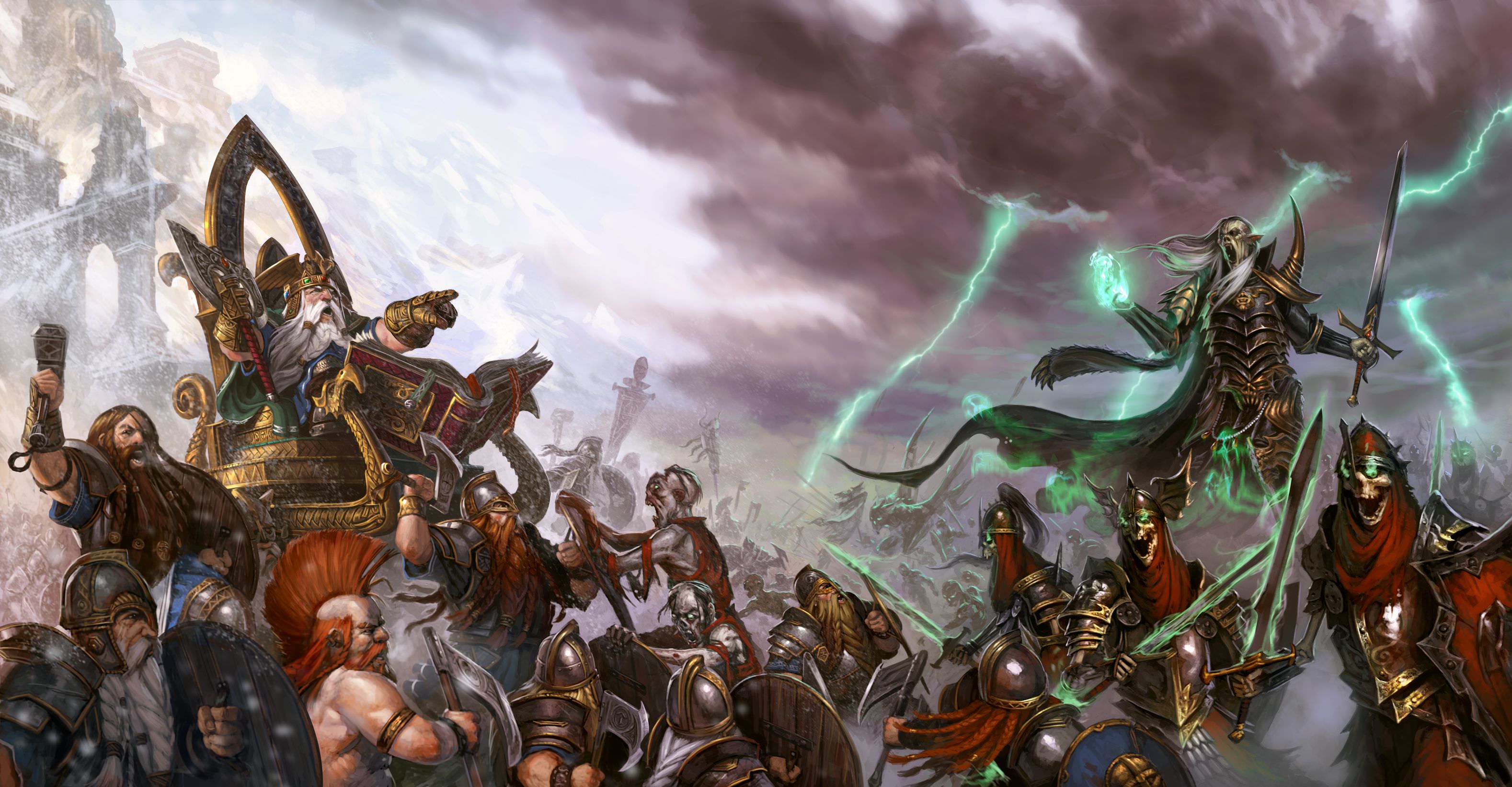

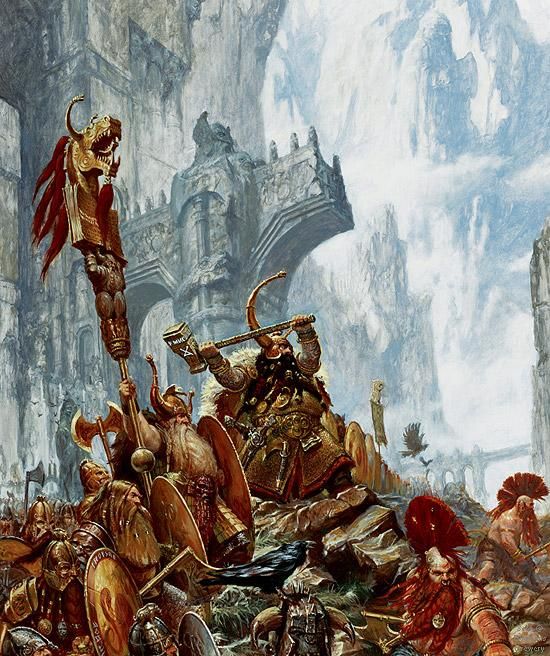
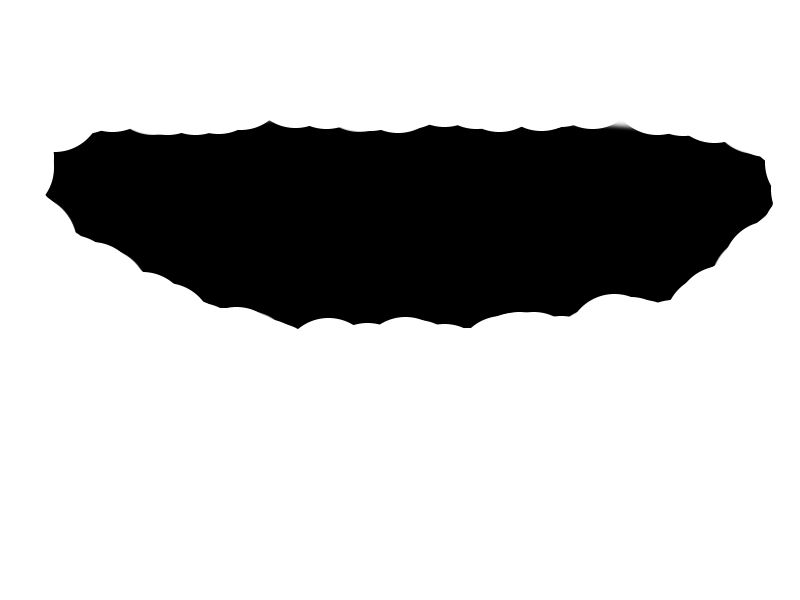
Warhammer's
Guide to DnD.
The Dwarfs